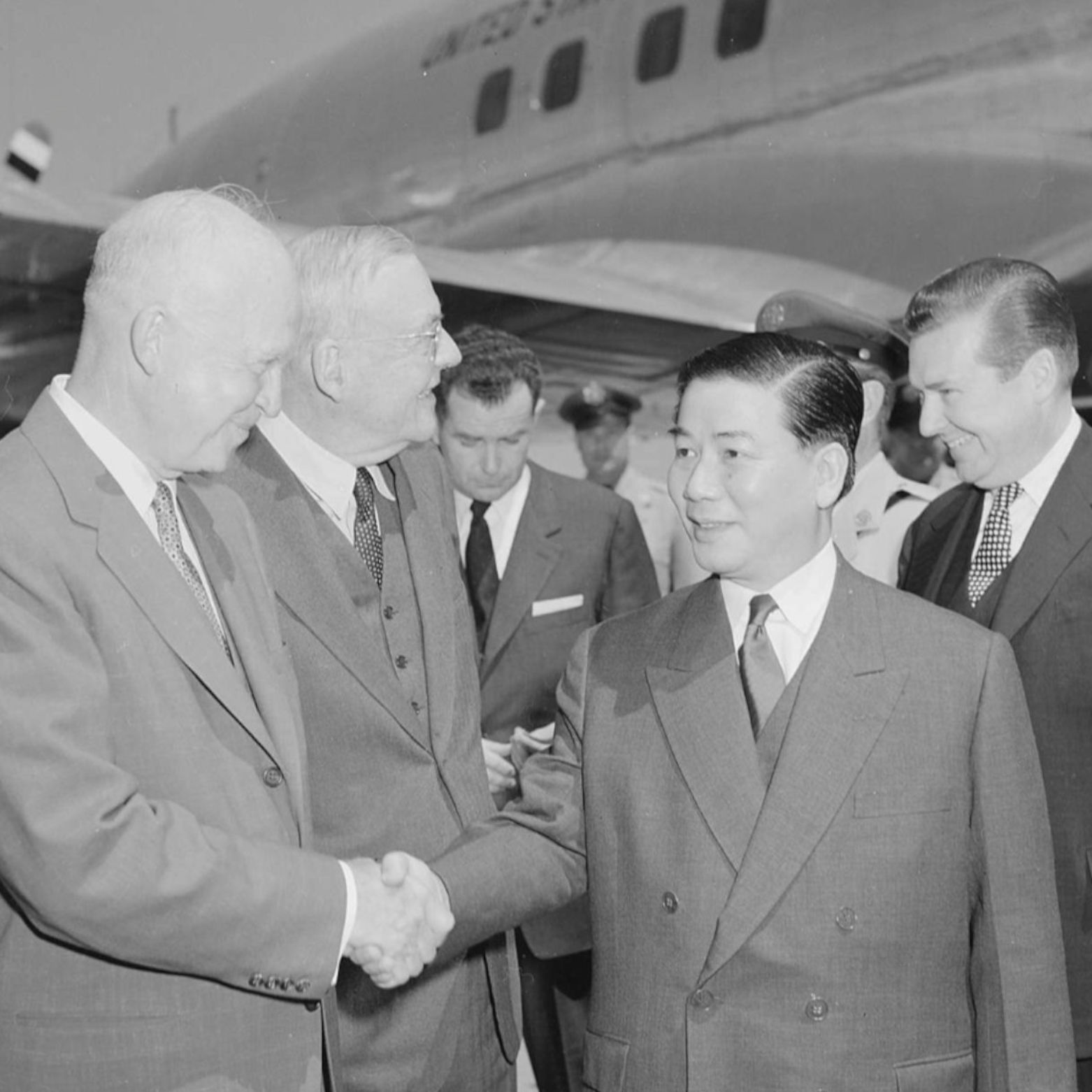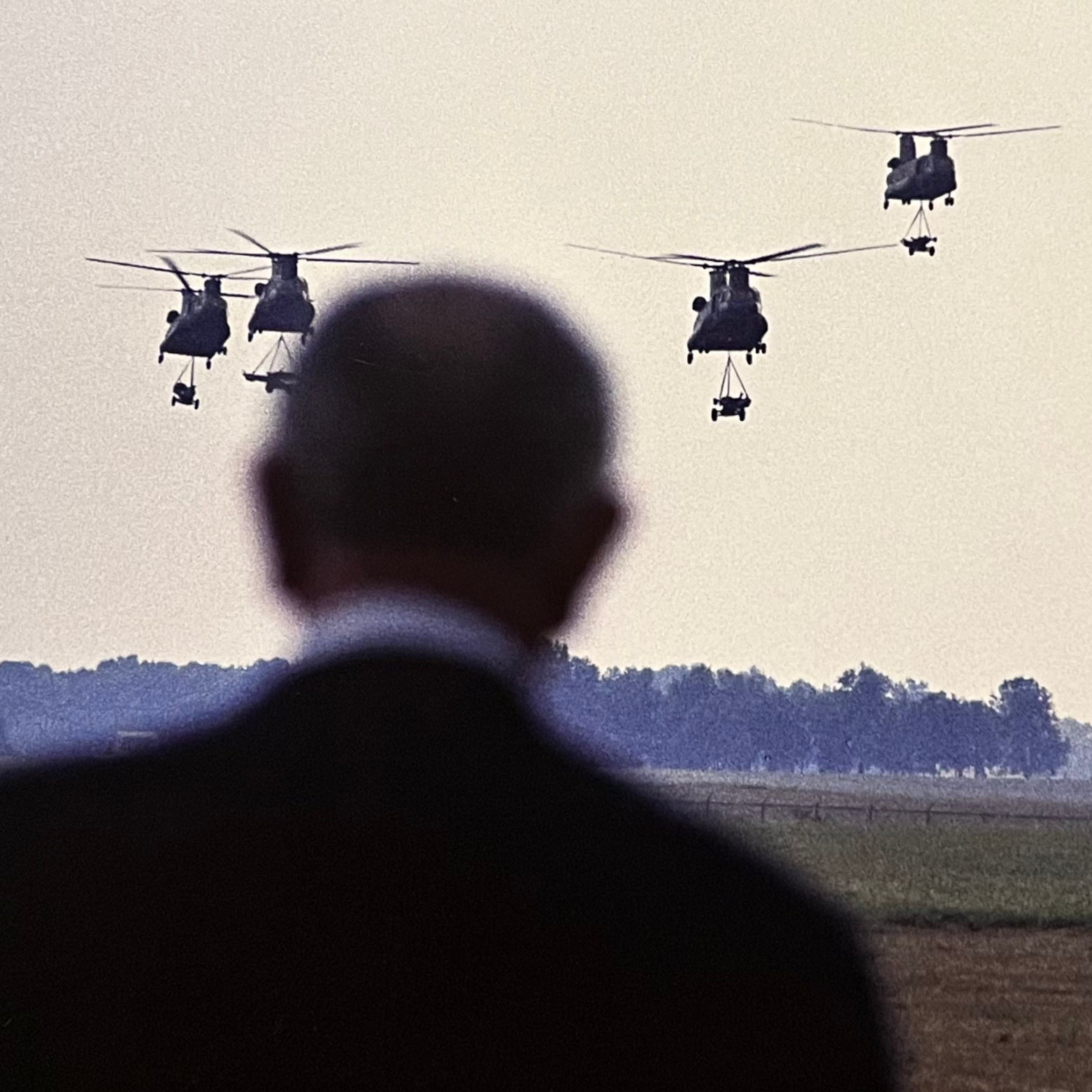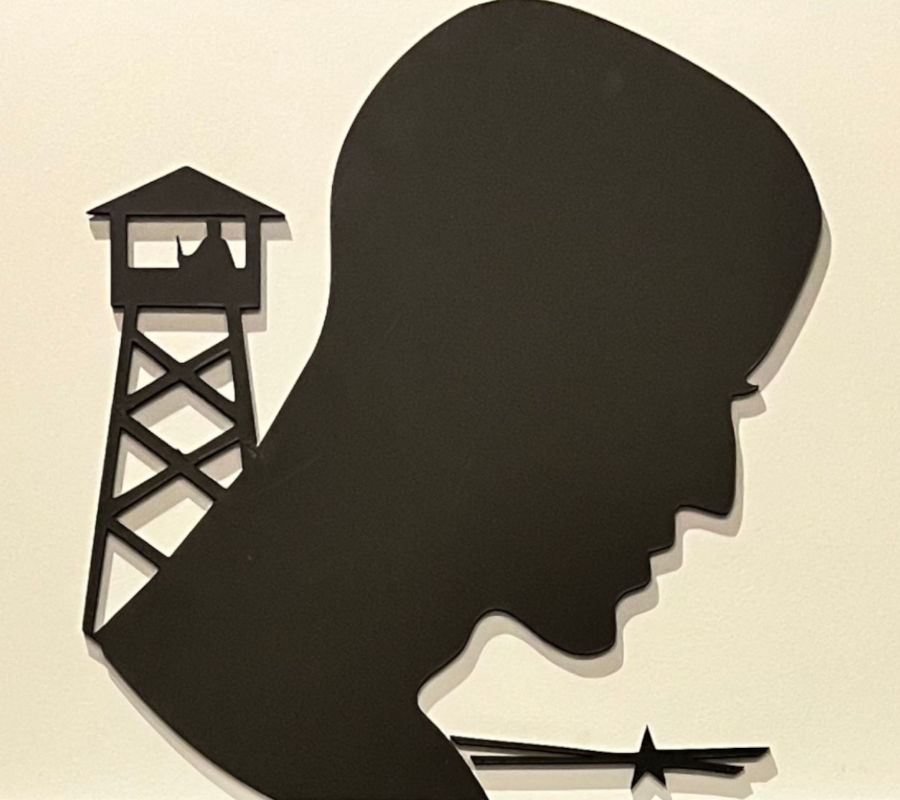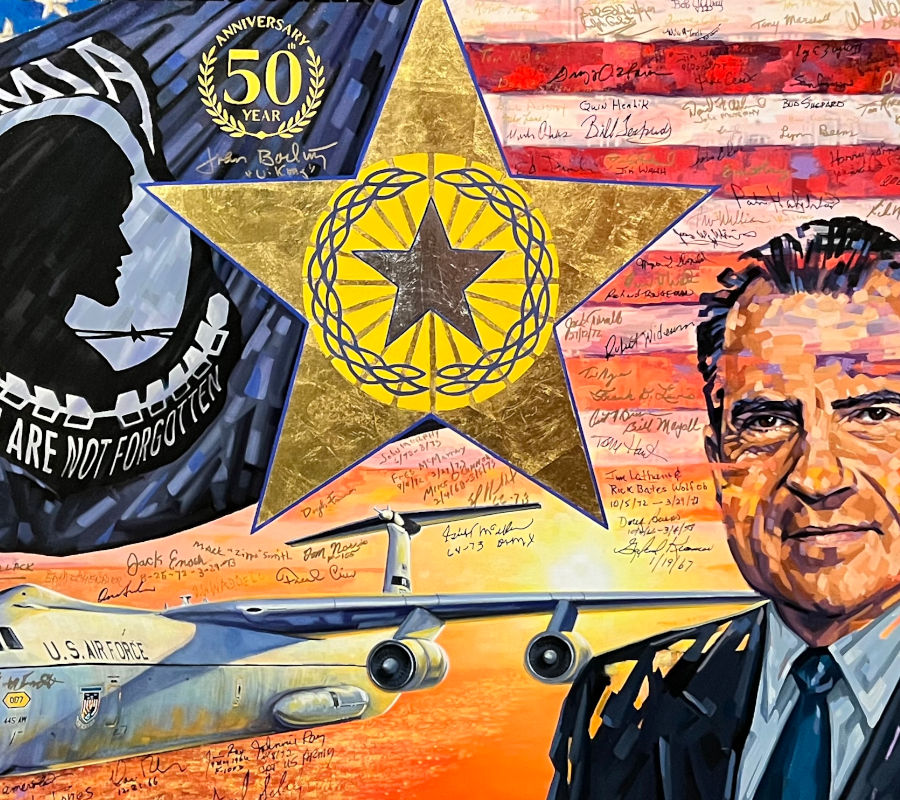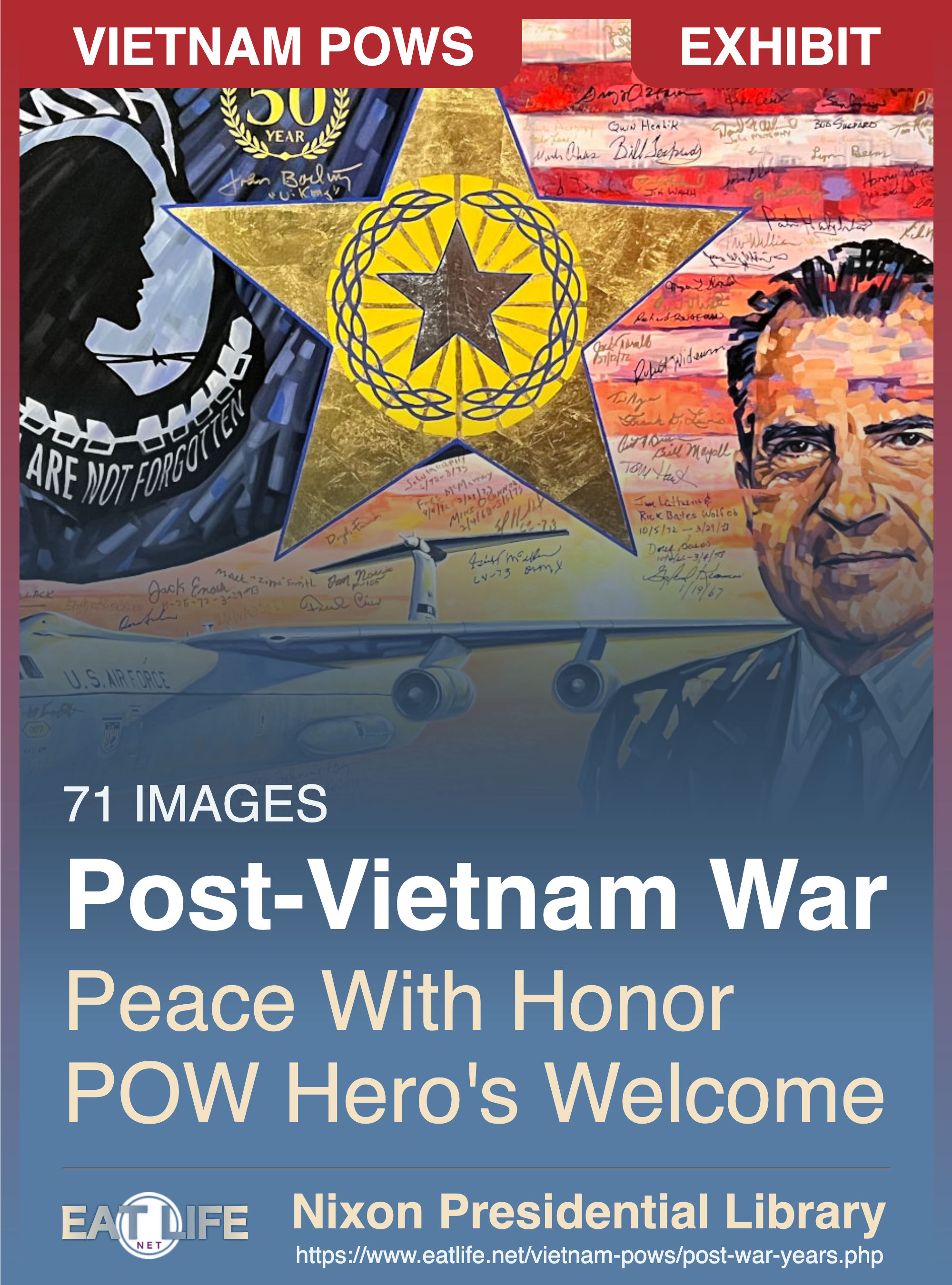VIETNAM EXHIBIT:
Johnson Passes Away
January 22, 1973
Lyndon B. Johnson dies suddenly of a heart attack one day before the end of the War. One of his last phone calls was from Nixon informing him that the Vietnam Peace Agreement was about to be signed.
Peace With Honor!
Tens of millions of people sat in front of their televisions awaiting a broadcast from the Oval Office at the White House.
President Nixon appeared on the screen. He got right to the point of his announcement:
The President assured the country that America's POWs would soon be home:
He also saluted the families who had long awaited the return of their loved ones:
America's longest conflict had concluded. The POWs would be coming home.
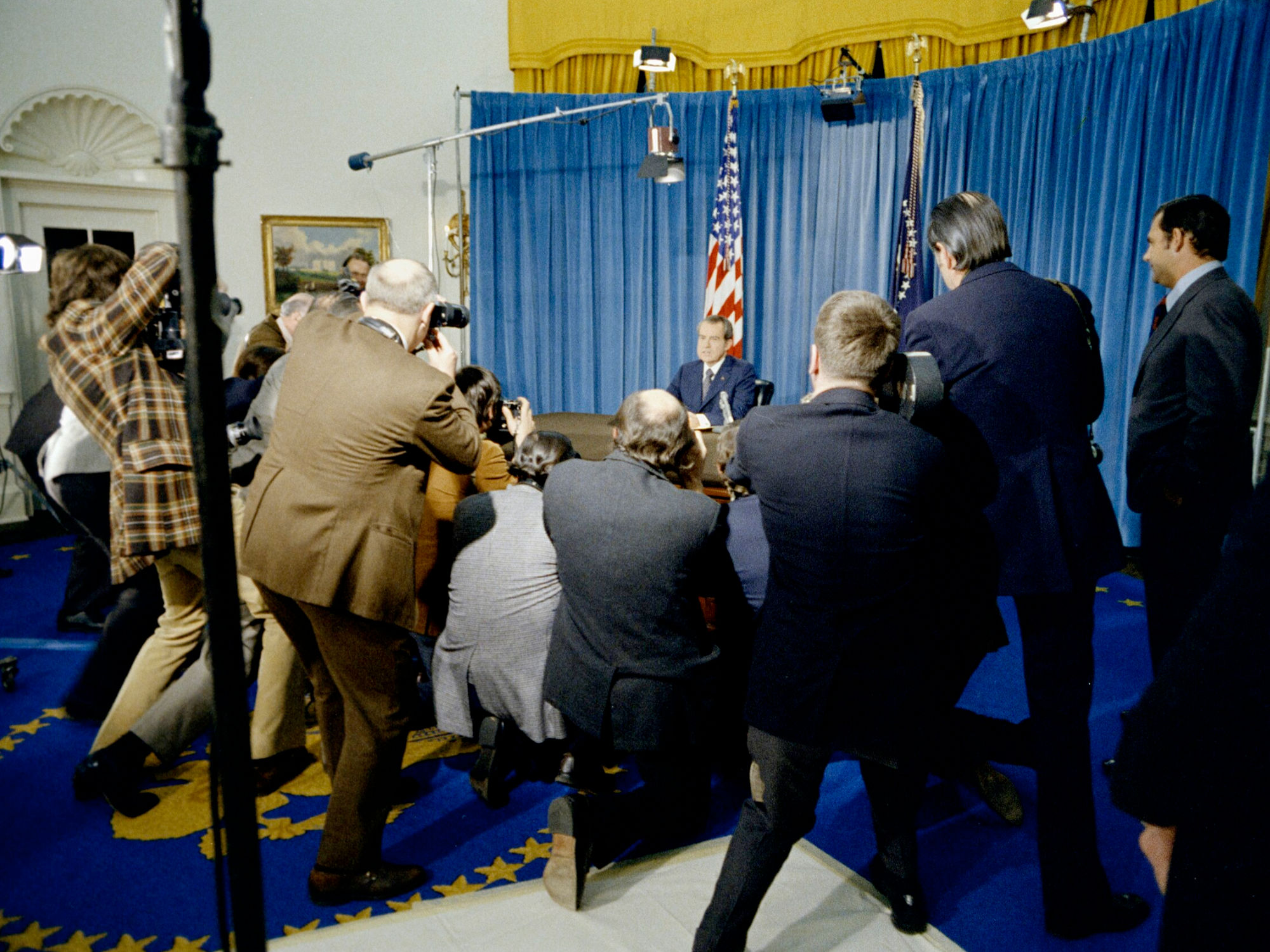
Peace Agreement Announcement
Oval Office
President Nixon announces the coming peace agreement to end fighting in Vietnam to the White House Press Corp. on January 23, 1973, from the Oval Office.
- The Agreement on Ending the War and Restoring Peace in Vietnam
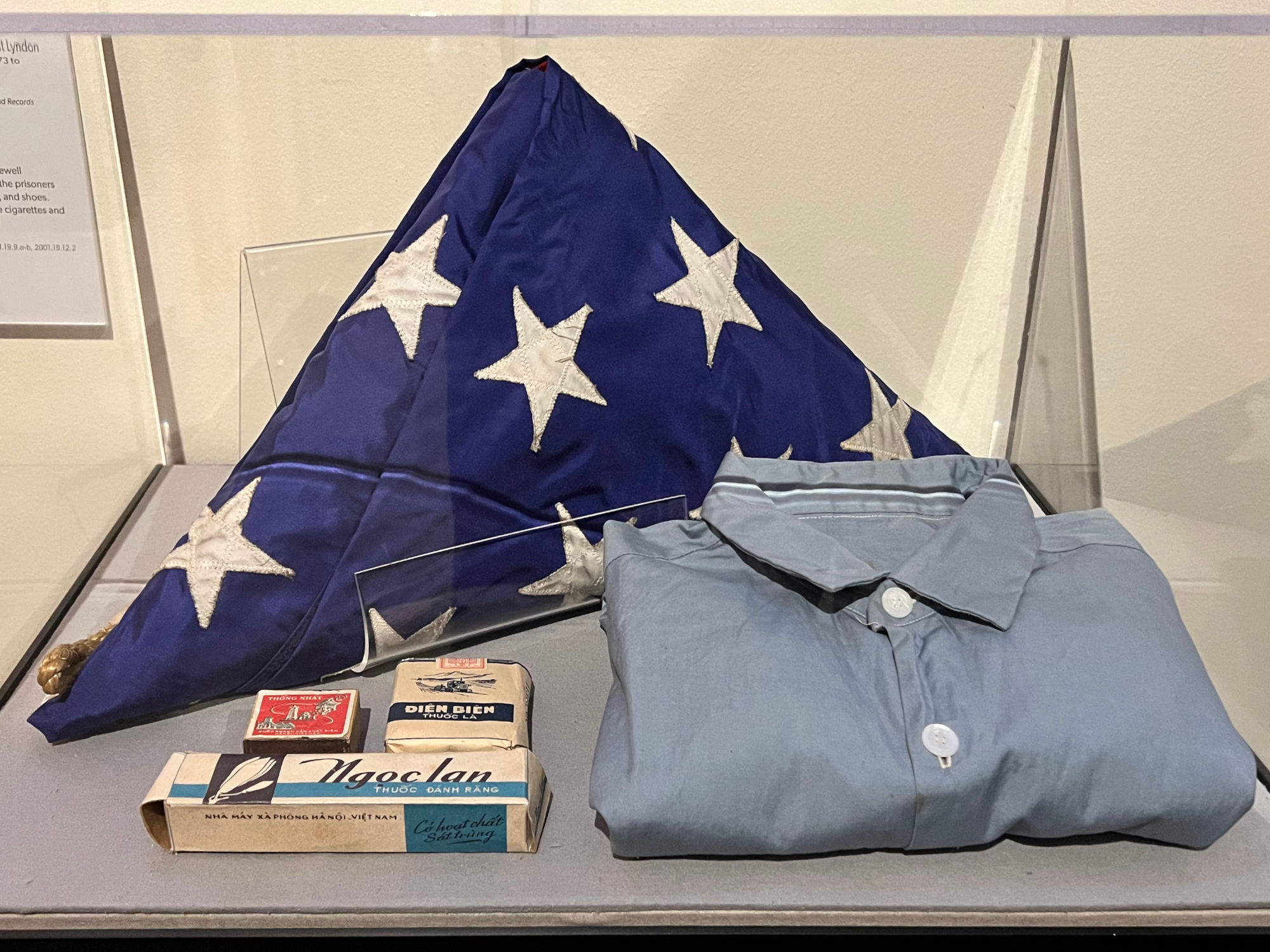
American Flag
Raised to full staff on February 14, 1973
This American flag flown over the White House was raised at half-staff for the period of mourning for former President Lyndon B. Johnson. It was raised to full staff on February 14, 1973 to commemorate the POWs returning from Vietnam.
Homecoming Souvenirs
In their final days of captivity, POWs were given farewell mementos by prison guards. Clothes provided to the prisoners consisted of a cotton shirt and slacks, leather belt, and shoes. Items like this matchbook, along with Vietnamese cigarettes and toothpaste, were included in a black AWOL bag.
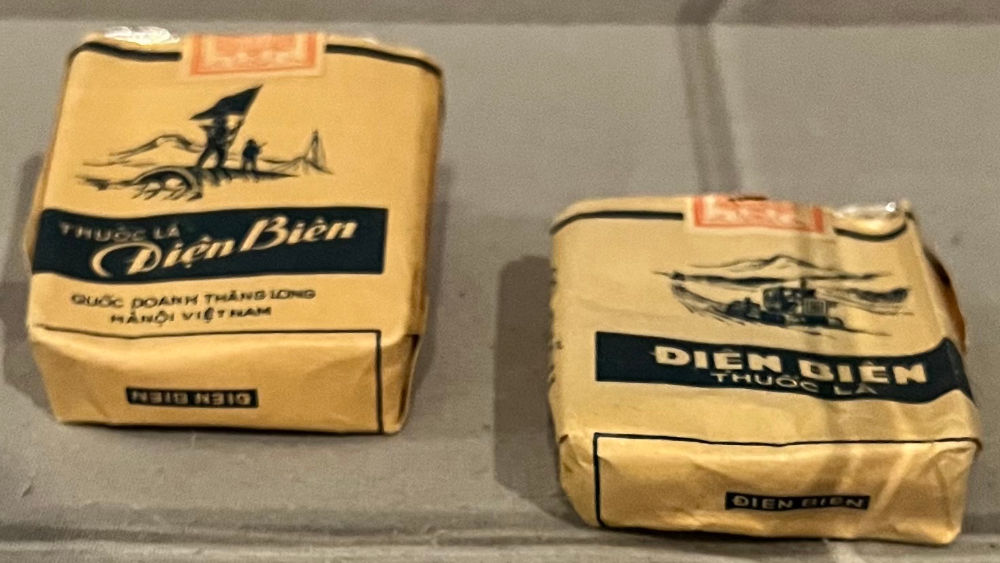
North Vietnamese Cigarettes
Repatriation
POWs returning home received a kit bag with a wallet, toothpaste, cigarettes, and matches. "Gifts from the heroic people of Vietnam"
POWs repurposed cigarette packs issued by the North Vietnamese as notepads. One POW reportedly wrote the rules of the New York Stock Exchange on one pack, while another transcribed sheet music on his pack.
Operation Homecoming
With the peace agreement signed, planning for the return of the Prisoners of War was underway. Code-named Operation Homecoming, the President wanted to make certain the POWs received a hero's welcome and their families were given all the support they needed as they returned to normal life.
- Col. James Kasler, U.S. Air Force
February 12, 1973, the first planeload of former prisoners of war landed at Clark Air Base in the Philippines.
President Nixon described the scene in his memoirs:
March 29, 1973, The last of the C-141 cargo planes - nicknamed "Hanoi Taxis" - brought the most recently held POWs back from North Vietnam.
A total of 591 POWs had been liberated.
- 325 served in the Air Force
- 138 served in the Navy
- 77 served in the Army
- 26 served in the Marine Corps
- 25 civilian federal government employees
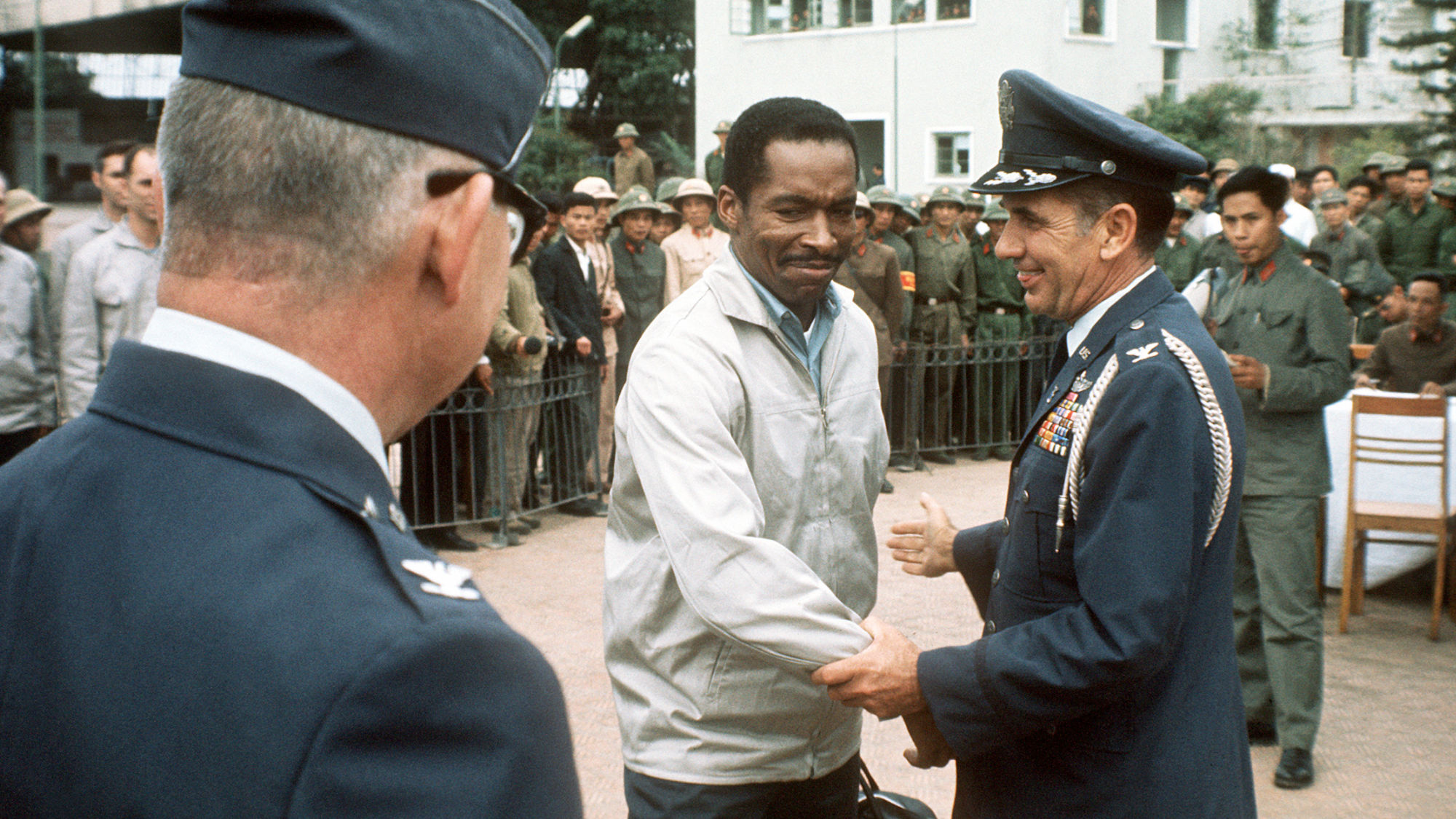
Norman A. Mcdaniel
Operation Homecoming
Major Norman A. McDaniel is greeted by the Gia Lam Airport returnee delegation upon his release from a prisoner of war camp.
- July 20, 1966 forced to eject over North Vietnam and taken Prisoner
- 2,399 days in captivity
- Released on February 12, 1973
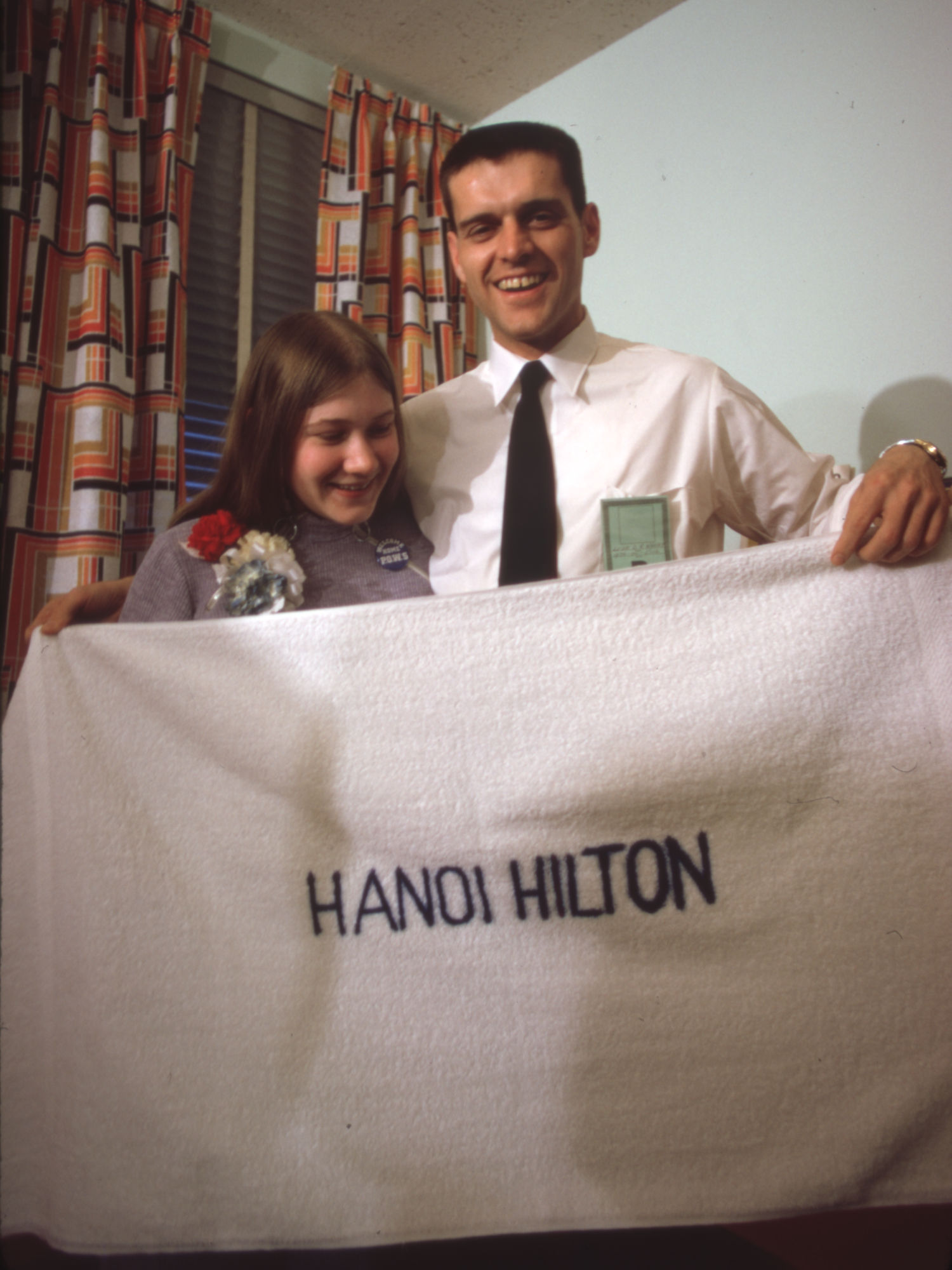
David R. Wheat
Operation Homecoming
After his release, former POW Lieutenant Commander David R. Wheat and his sister Emily hold a "Hanoi Hilton" towel
- October 17, 1965 forced to eject over North Vietnam
- 2,675 days in captivity
- Released on February 12, 1973
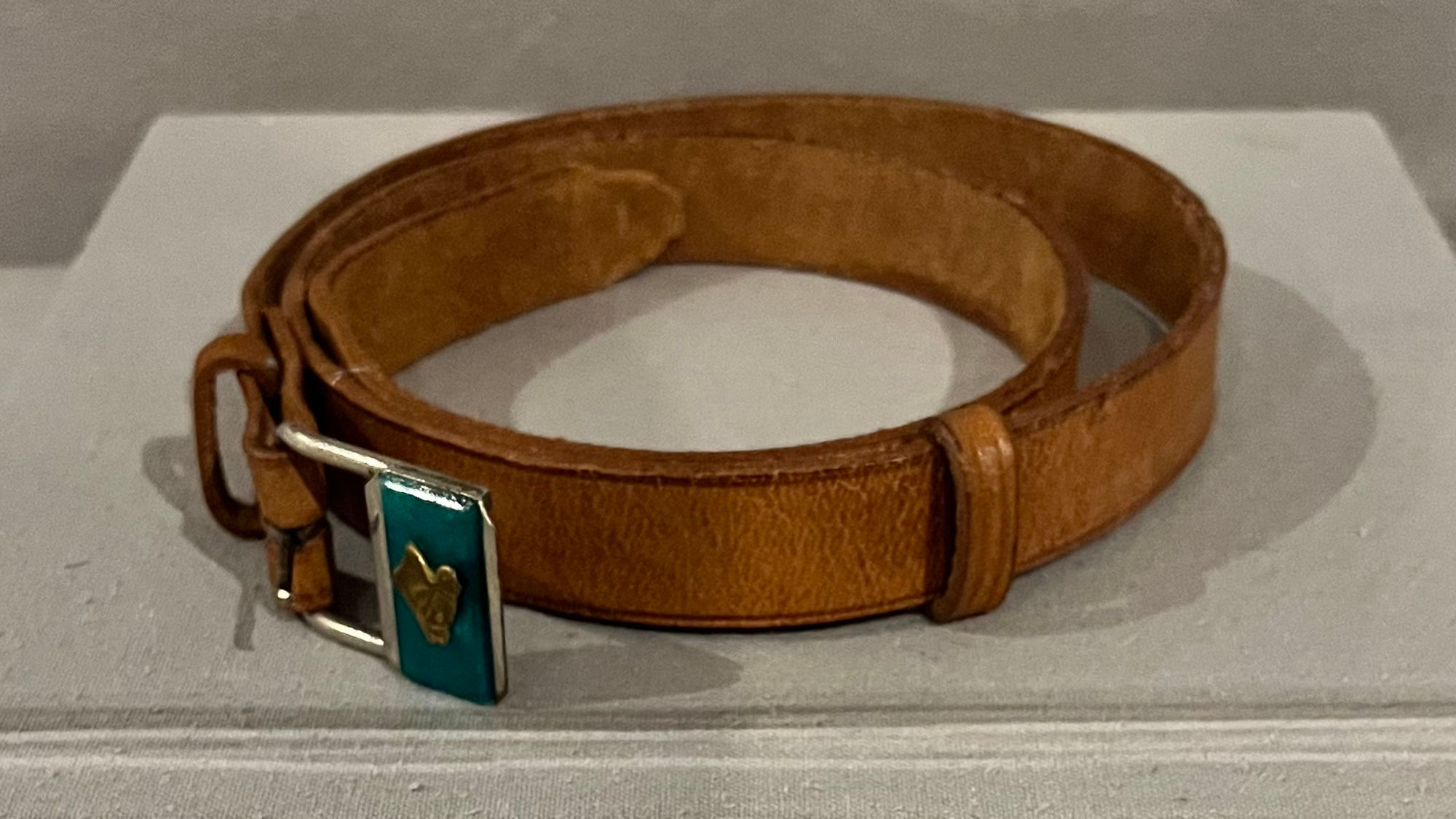
Uniform Belt
Operation Homecoming
This brown leather belt was issued to POWs during Operation Homecoming.
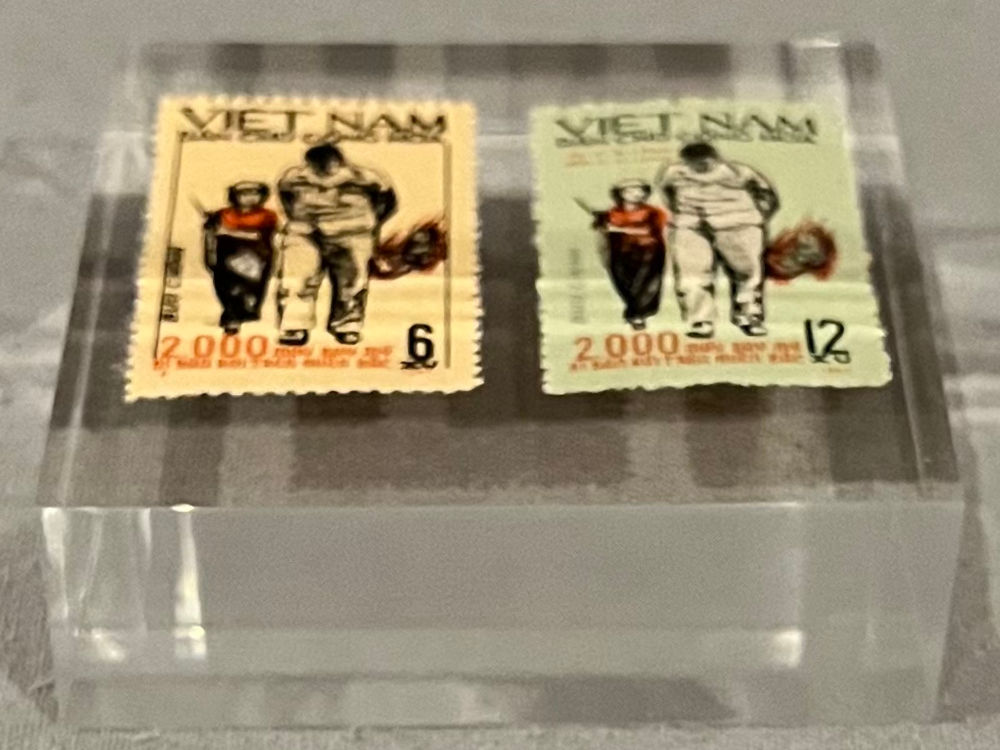
Postage Stamps
Democratic Republic of Vietnam Postal Service
These Vietnam War-era postage stamps feature a POW being followed by a prison guard.
- Captain William Andrew Robinson Captured September 20, 1965. Helicopter Shot Down over North Vietnam Laos Border. Released from Hanoi Hilton Feb 1973.
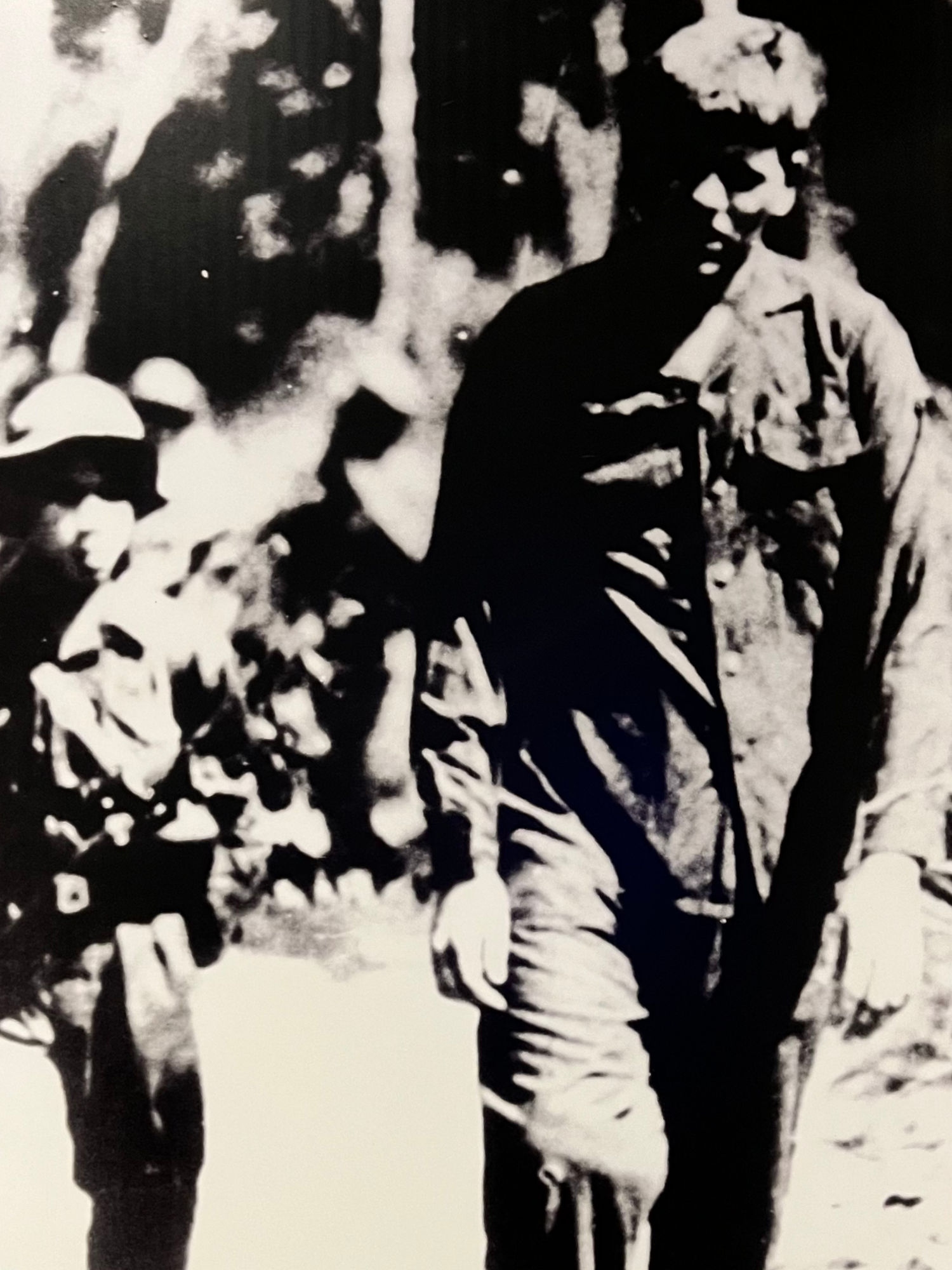
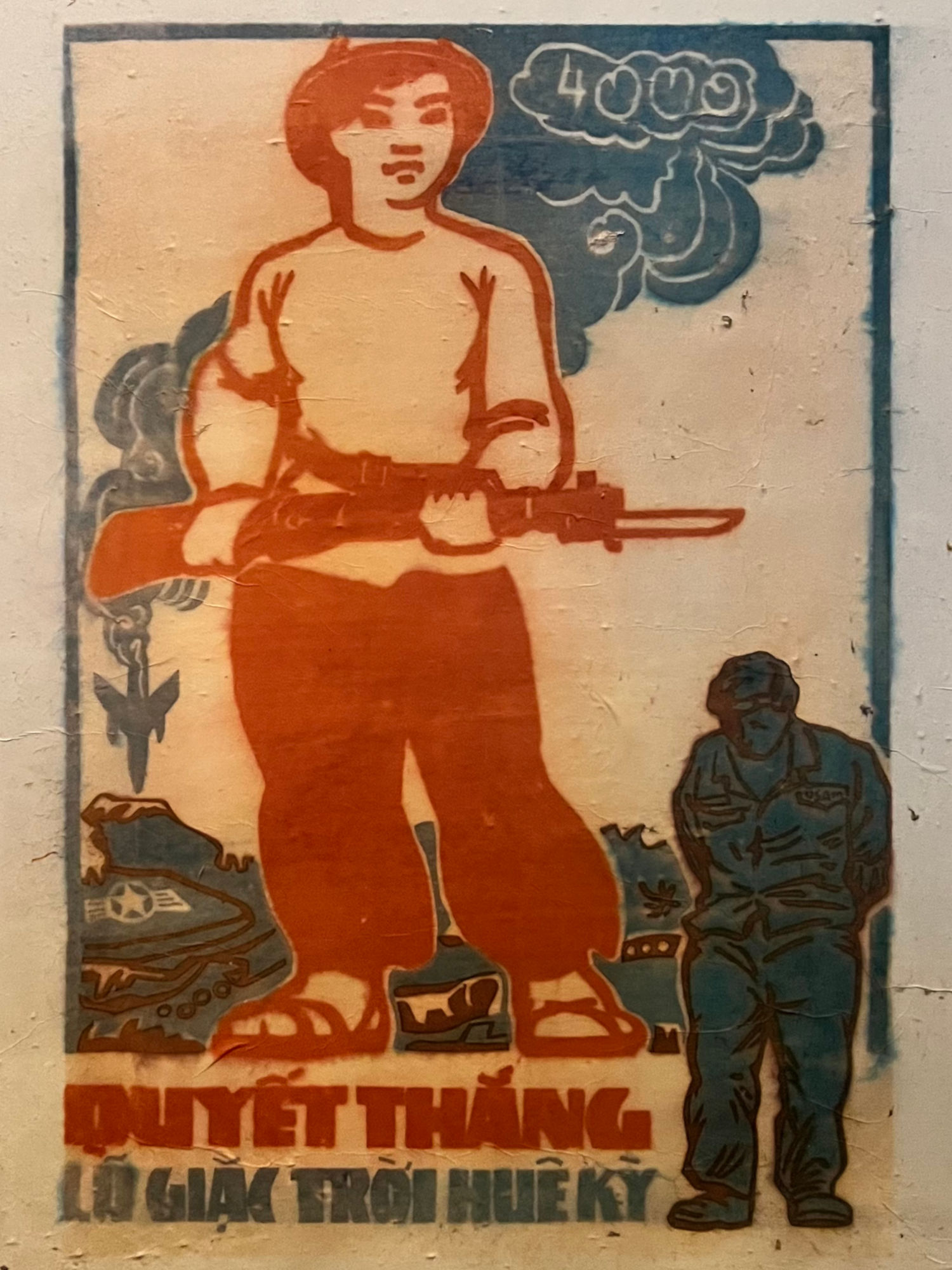
Propaganda Poster
Be Resolved to Prevail over the American Air Attacts
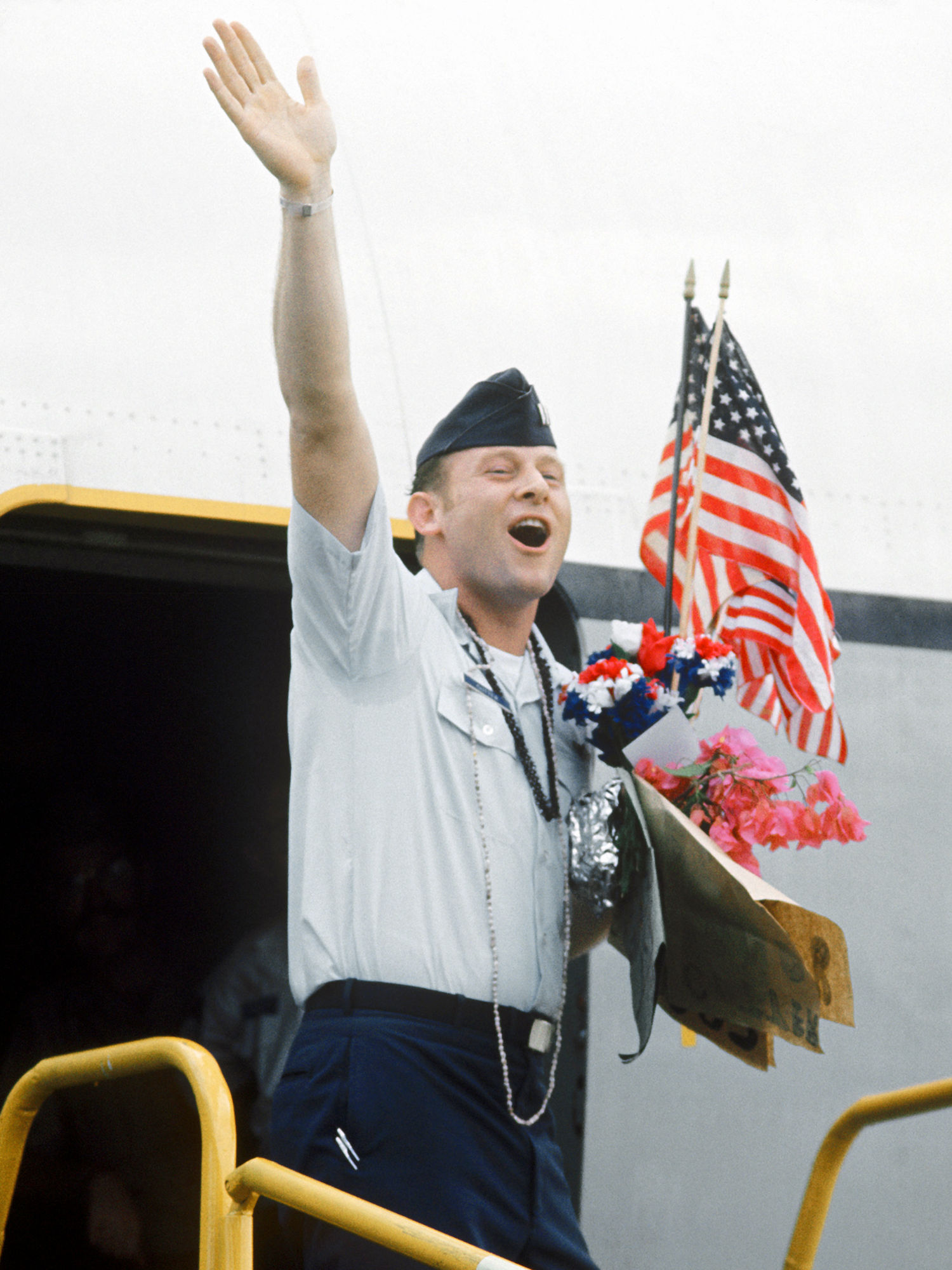
James D. Cutter
Operation Homecoming
Recently released POW U.S. Air Force Captain James D. Cutter waves to onlookers as he departs Clark Air Force Base, en route to Travis Air Force Base, California on his journey home.
- February 17, 1972 shot down by a surface-to-air missile and taken Prisoner
- 405 days in captivity
- Released on March 28, 1973
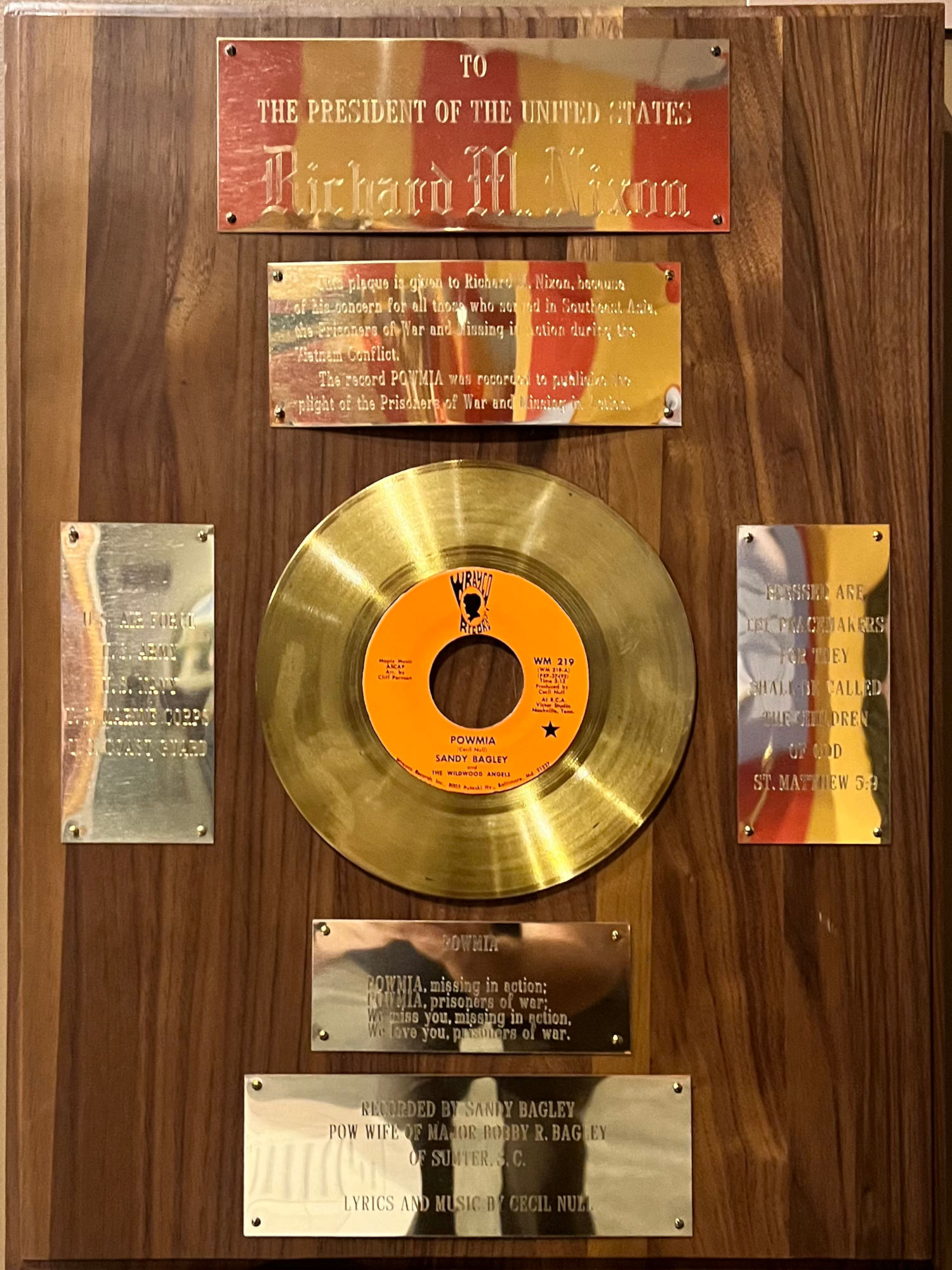
Commemorative Record
"POW/MIA"
Sandy Bagley recorded this single in honor of the American soldiers held in captivity and missing in action. Her husband, Major Robert Bagley, was released under Operation Homecoming after being imprisoned for 2,007 days.
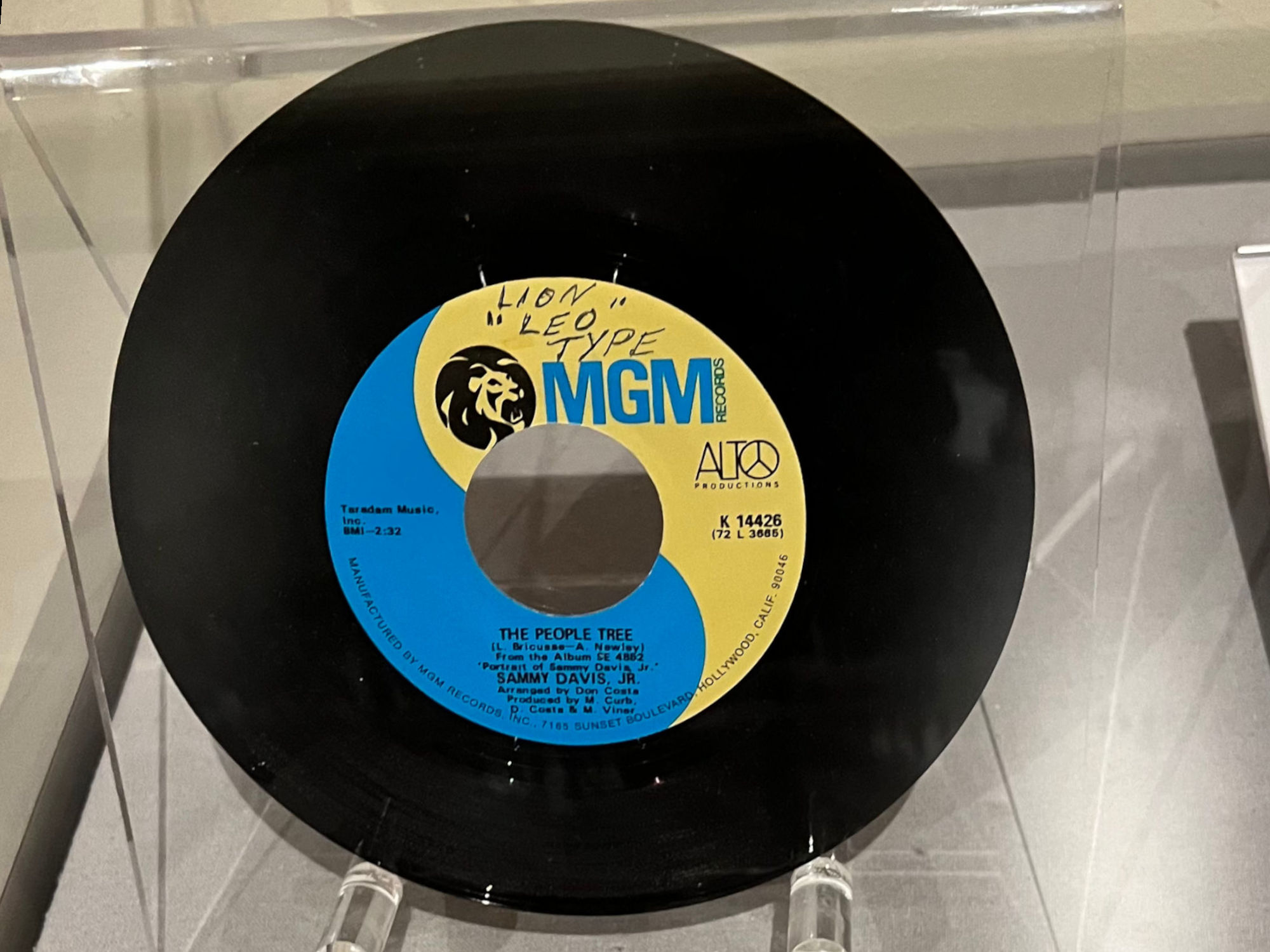
The People Tree
The People Tree / Bojangles Record
On March 3, 1973, President Richard Nixon and First Lady Pat Nixon hosted an event to honor Sammy Davis, Jr. At this event, Davis suggested that the President and First Lady should host a big celebration at the White House for the POWs. Davis was later invited to the POW dinner and performed his hit songs "Candy Man" and "I Gotta Be."
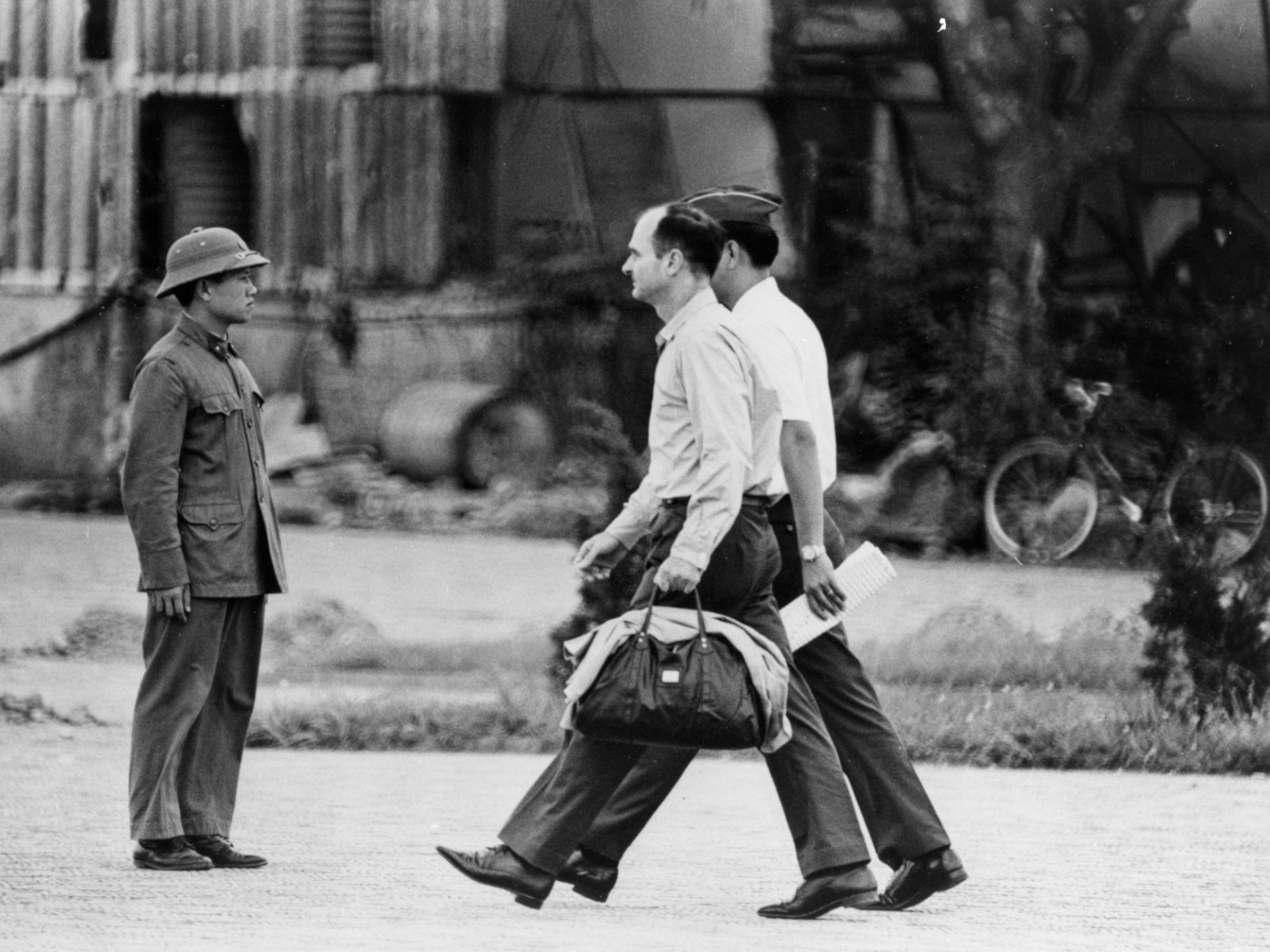
A Released Pow
Gia Lam Airport, Hanoi, North Vietnam
A POW is escorted by North Vietnamese guards to an C-141A Starlifter plane awaiting him at Hanoi's Gia Lam Airport.
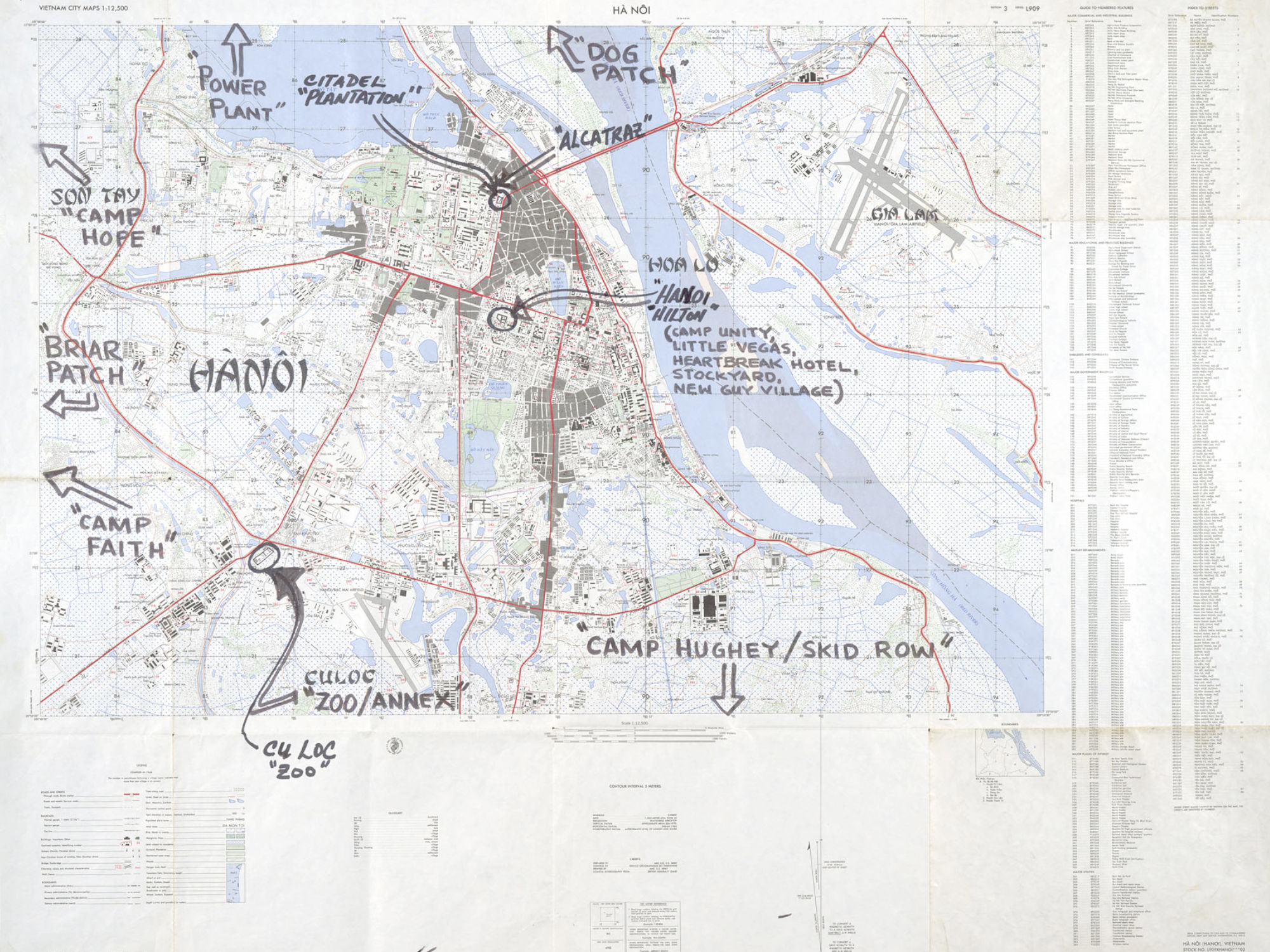
Map of Hanoi Prison Locations
Mike Mcgrath
Shortly after his return to the United States, former POW, U.S. Navy Lieutenant Commander Mike McGrath annotated this detailed map of Hanoi to show the locations of the prisons. He did this so he would not forget where the camps were.
The Art of a POW
After taking off from the deck of the USS Constellation on his 178th mission, Navy aviator Mike McGrath's A-4-C Skyhawk was shot down over North Vietnam. He would spend most of the next six years as a prisoner of war, finally released on March 4, 1973.
After returning home, McGrath was determined that the story of the POWs should not be forgotten.
I felt that I could make my own greatest contribution by drawing what I saw and memorized ...The way we lived in the hell-holes of the Vietnamese prisons is so unimaginable to the average American that words alone are not sufficient to convey the experience.
So, he set to work to capture in drawings what the prisoners endured. His art - in vivid and disturbing detail - conveys the horrors suffered by American POWs during their imprisonment.
Despite the horrific treatment he received, he modestly wrote in the preface to his book, Prisoners of War: Six Years in Hanoi:
Unfortunately, the scenes I have drawn only begin to depict the hundreds of thousands of days of cumulative misery endured by American POWs. Many men were tortured more than I and suffered more than I; some died in prison. I only regret that I have not been able to illustrate all their stories.
RELATED: [https://www.amazon.com/dp/0870215272]
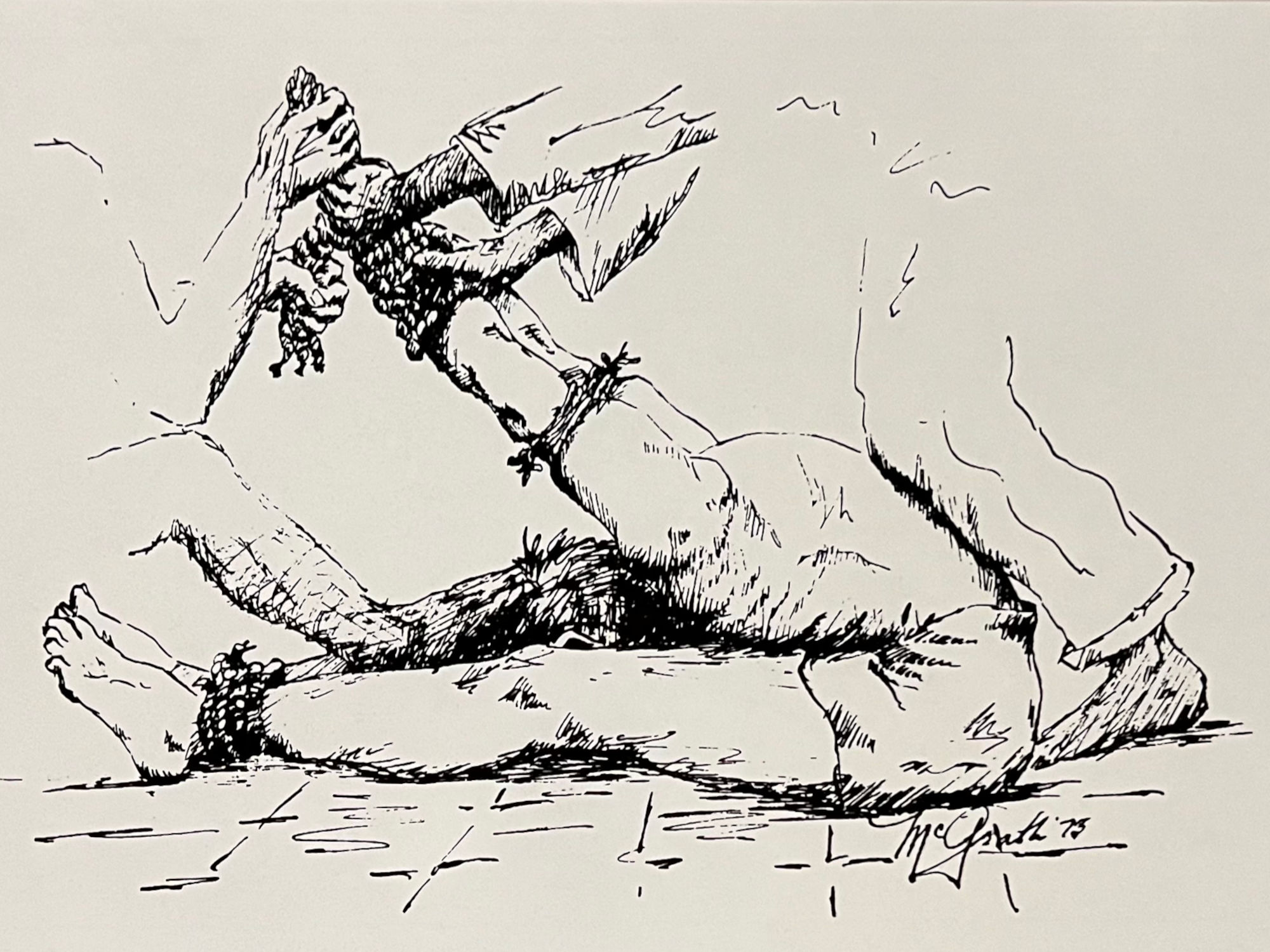
Vietnamese Rope Trick
Illustration by Mike McGrath
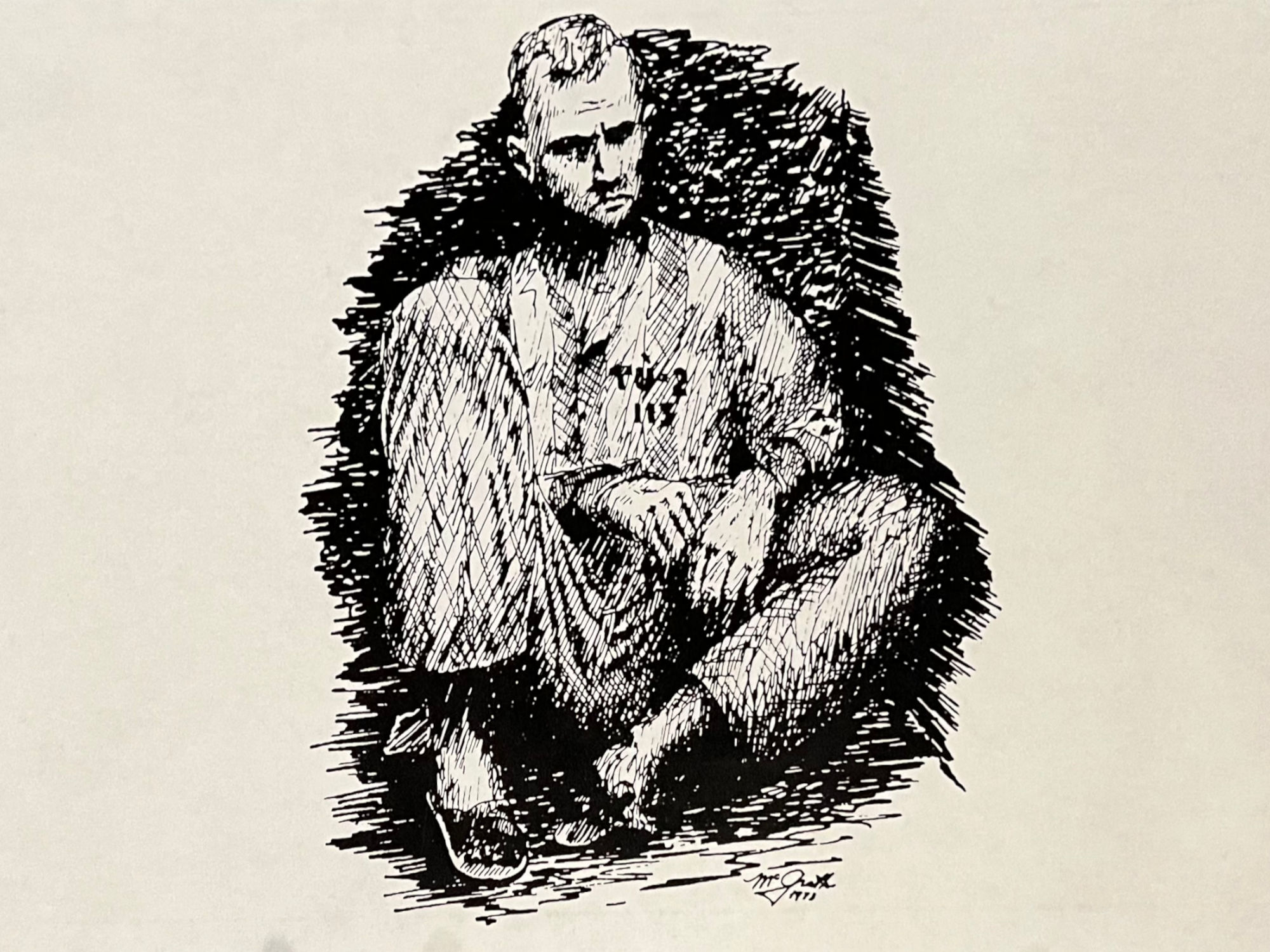
Solitary Confinement
Illustration by Mike McGrath
Depicting the emptiness of solitary confinement for a POW
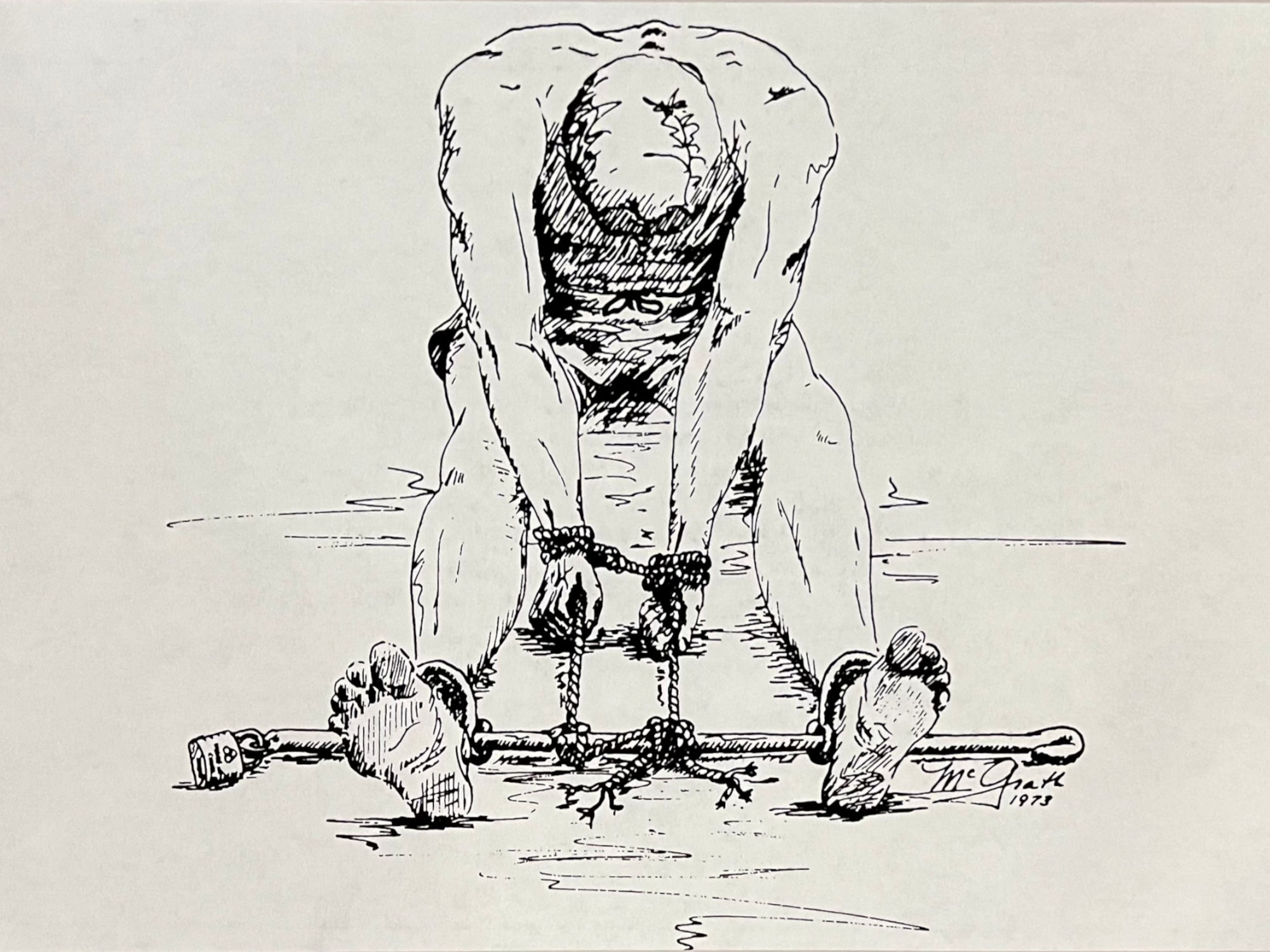
Leg and Arm Shackles
Illustration by Mike McGrath
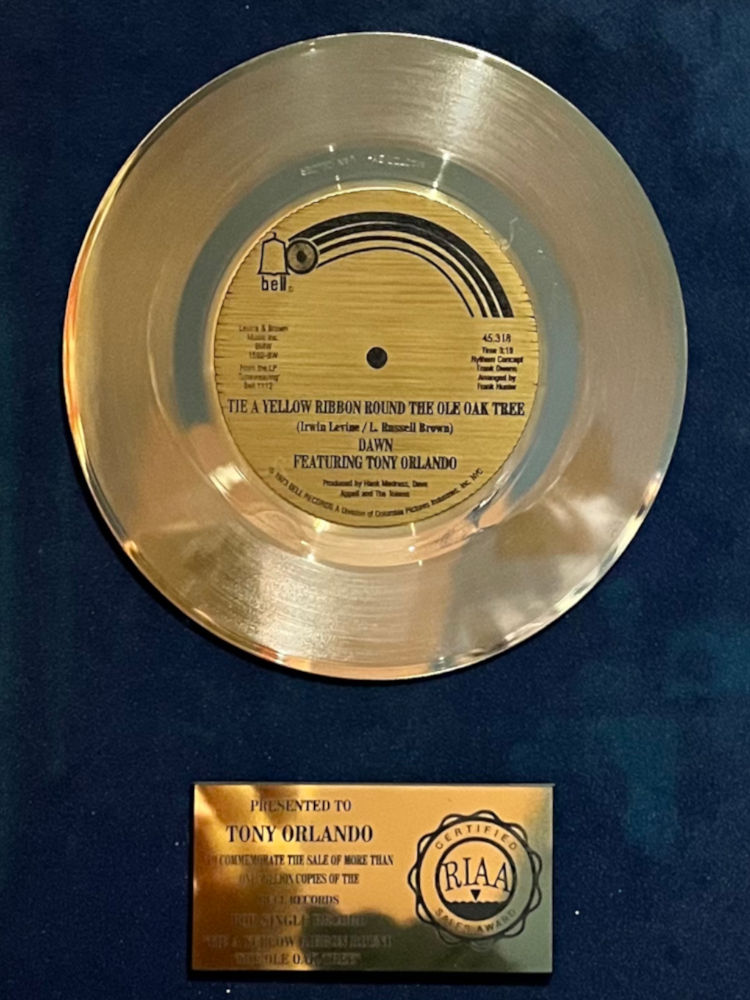
Tony Orlando and Dawn
Tony Orlando's song "Tie a Yellow Ribbon Round the Ole Oak Tree," tells the story of a young man returning home from prison, hoping to reunite with his sweetheart. The song title is a reference to the tradition of a yellow ribbon symbolizing family and friends awaiting the return of missing loved ones.
WIKIPEDIAOrigins of the Song
The origin of the idea of a yellow ribbon as remembrance may have been the 19th-century practice that some women allegedly had of wearing a yellow ribbon in their hair to signify their devotion to a husband or sweetheart serving in the U.S. Cavalry. Yellow is the Cavalry branch color.The song "Round Her Neck She Wears a Yeller Ribbon", tracing back centuries but copyrighted by George A. Norton in 1917, and later inspiring the John Wayne movie She Wore a Yellow Ribbon, is a reference to this. The symbol of a yellow ribbon became widely known in civilian life in the 1970s as a reminder that an absent loved one, either in the military or in jail, would be welcomed home on their return.
During the Vietnam War, in October 1971, newspaper columnist Pete Hamill wrote a piece for the New York Post called "Going Home". In it, he told a variant of the story, in which college students on a bus trip to the beaches of Fort Lauderdale make friends with an ex-convict who is watching for a yellow handkerchief on a roadside oak in Brunswick, Georgia.
Synopsis
The song is told from the point of view of someone who has "done his time" in prison: "Now I've got to know what is and isn't mine" and is uncertain whether his girlfriend will welcome him home: "I'm really still in prison and my love, she holds the key".He writes to his love, asking her to tie a yellow ribbon around the "ole oak tree" in front of the house (which the bus will pass by) if she wants him to return to her life; if he does not see such a ribbon, he will remain on the bus (taking that to mean he is unwelcome) and understand her reasons ("put the blame on me"). He is afraid to look himself, fearful of not seeing anything, and asks the bus driver to check.
To his amazement, the entire bus cheers the response - there are 100 yellow ribbons around the tree, a sign he is more than welcome.
A Hero's Welcome
A full and exciting day for the returned POWs as President and Mrs. Nixon honored them on behalf of the nation.
The day began with a breakfast buffet at the Washington Hilton, courtesy of the Hilton Hotel Corporation. In the afternoon, the POWs and their guests traveled to the State Department for two separate events.
The President opened his remarks by observing that over the course of his career he has spoken to many distinguished audiences, but
After concluding, he shook the hands of more than 600 POWs.
The First Lady hosted a reception for spouses and guests or the POWs in the Department's Diplomatic Reception Rooms. She greeted each of the guests in a receiving line. The Nixons' daughters, Tricia Nixon Cox and Julie Nixon Eisenhower, along with the wives of members of the President's Cabinet, spent time with the women as they enjoyed afternoon tea.
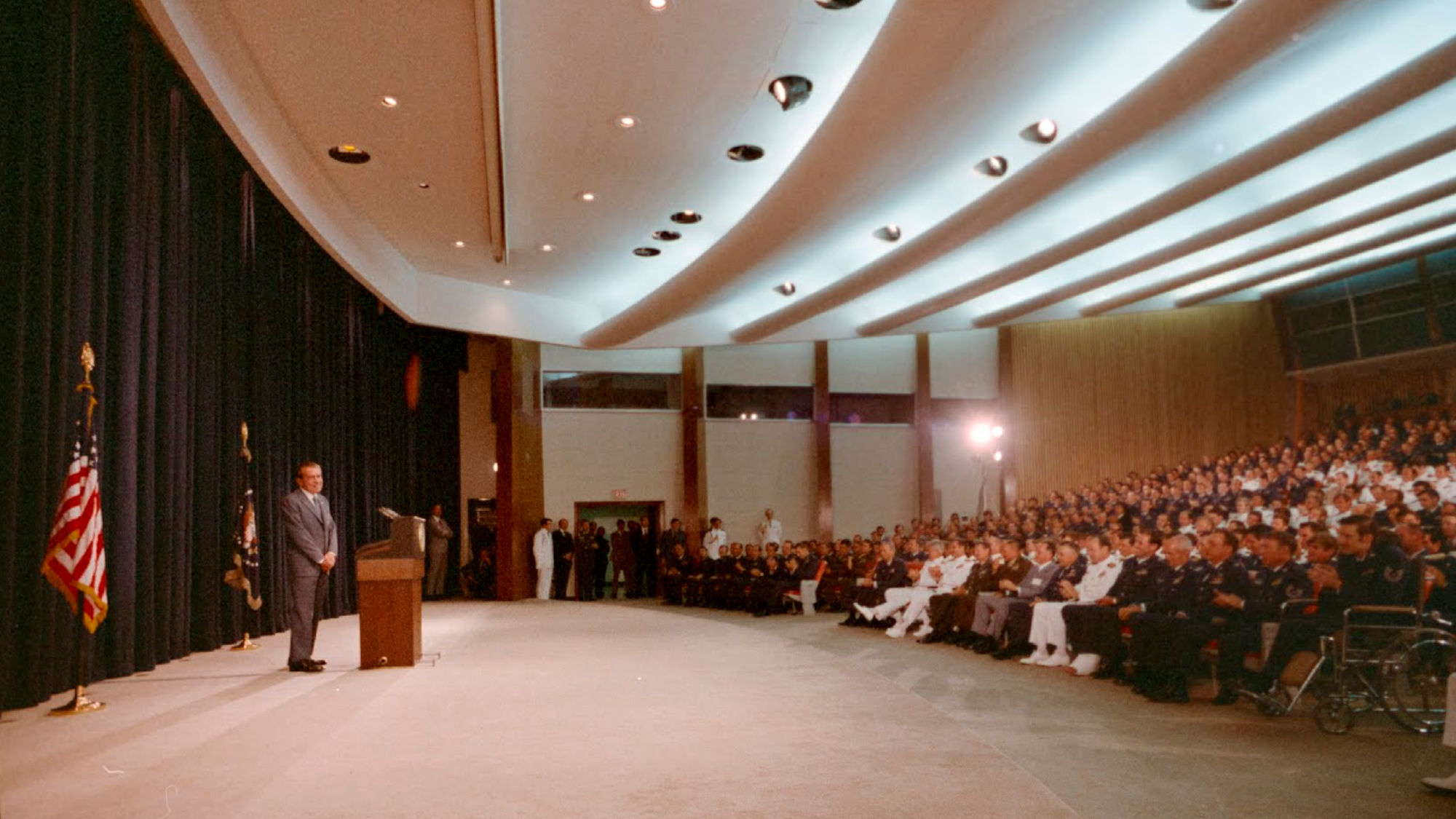
POWs Reception
State Department
President Nixon speaking to recently freed POWs during a State Department reception and briefing.
Later that day the POWs would meet Nixon again at the White House POW dinner.
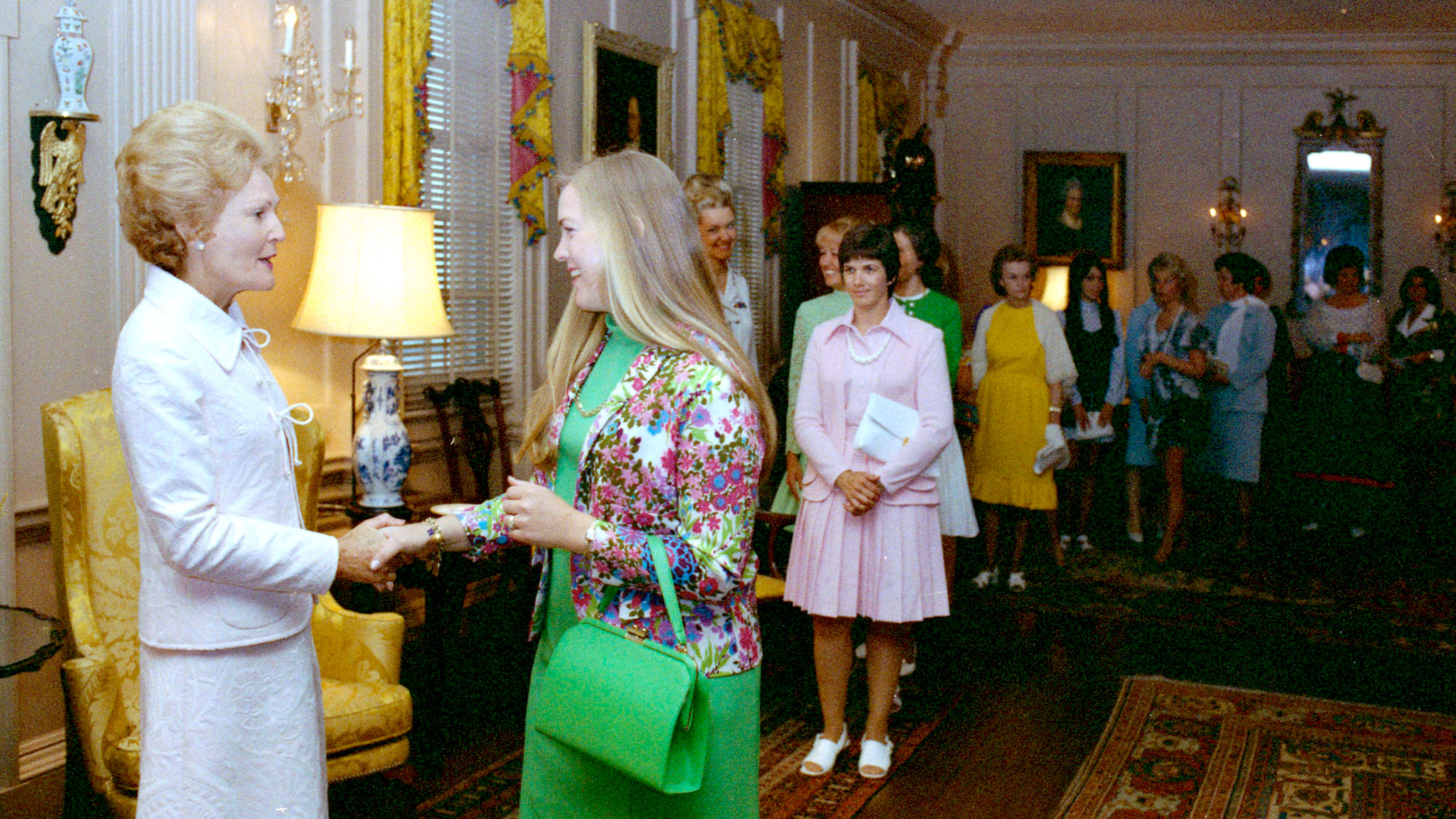
POW Wives
White House
First Lady Pat Nixon greeting the wives of POWs in a receiving line.
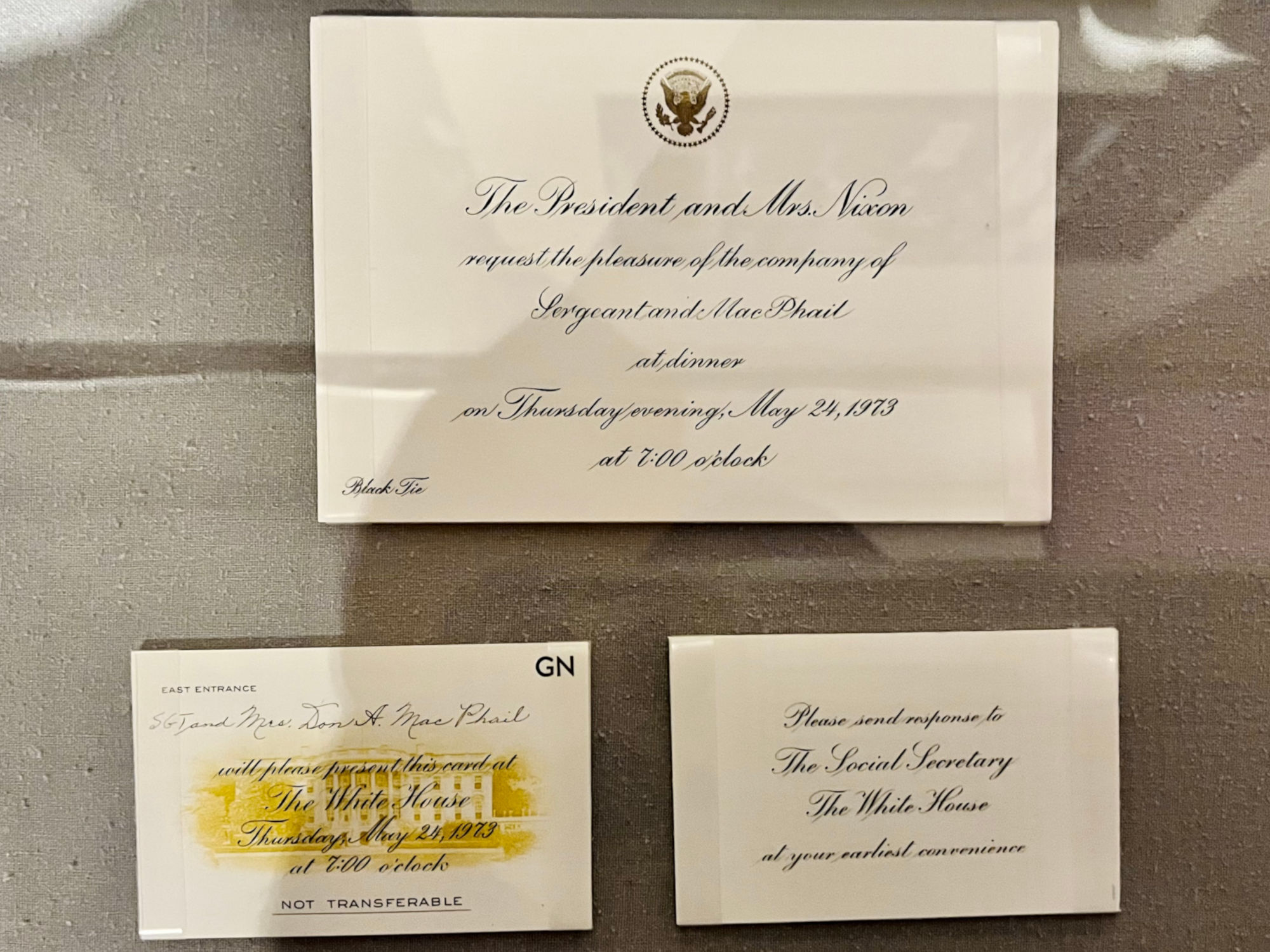
Invitation
White House POW Dinner
Official invitation and entrance pass to the White House POW dinner, addressed to former POW Sargeant Don A. MacPhail and his wife.
While on a reconnaissance mission in Pleiku Province in 1969, Sargeant MacPhail and his four-man squad were ambushed by Viet Cong forces. His squadmates were killed in action, leaving MacPhail the sole survivor. After avoiding the Viet Cong for four days, he was captured en route to a Special Forces Camp.
He spent the next four years as a POW in various North Vietnamese prisons, enduring torture and abuse, until his release in 1973 as a result of Operation Homecoming. Sargeant MacPhail received a second Bronze Star Medal Citation for his actions.
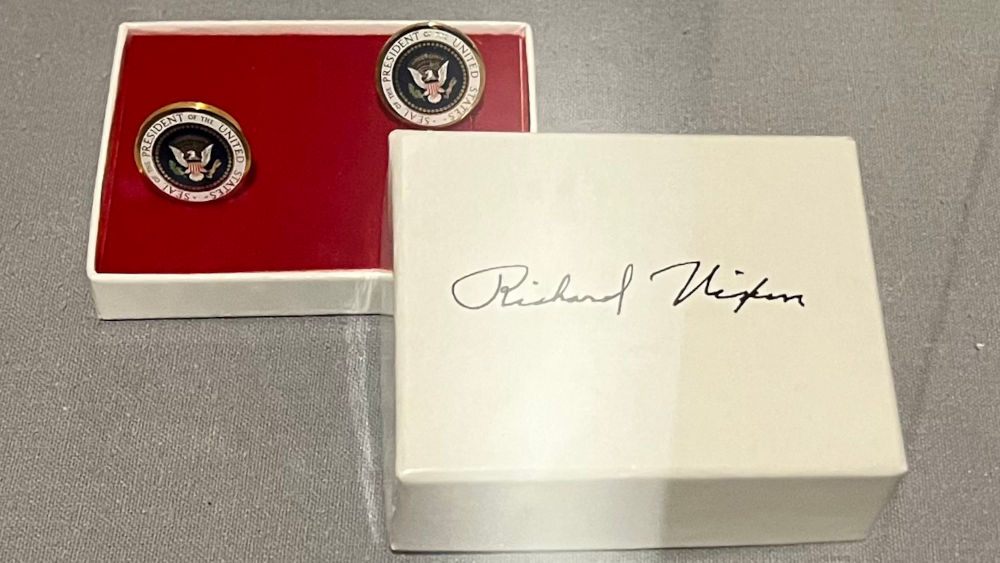
Cufflinks
White House POW Dinner
Each POW in attendance received a pair of cufflinks at the dinner as a gift from President Nixon.
Largest White House Dinner Ever
The former POWs and guests were honored at the largest formal dinner ever held at the White House. The gala evening began with cocktails. The Ground Floor, State Floor, and the Second Floor - which is where the First Family lives - were all open to visitors.
The guests then moved to an enormous tent on the South Lawn. The structure was longer and wider than the White House itself.
-Richard Nixon
Following an invocation and the singing of the POW Hymn by a choir composed entirely of now-former POWs, guests dined on an All-American dinner. The menu was selected because many of the captives had reported missing traditional food during their time in Vietnamese prisons. Hundreds of bottles of champagne were chilled in ice-filled aluminum canoes.
Following dinner, the President proposed a toast " ...to the First Ladies of America" - the wives, mothers, and women guests of the former POWs.
In a return toast, the ranking officer among the former POWs, Air Force Brigadier General John Flynn said,
Flynn then presented a plaque to the President. It was inscribed: "Our leader, our comrade, Richard the Lion-hearted."
A constellation of Hollywood stars provided the after-dinner entertainment. For all those present that evening, it was a night they would never forget.
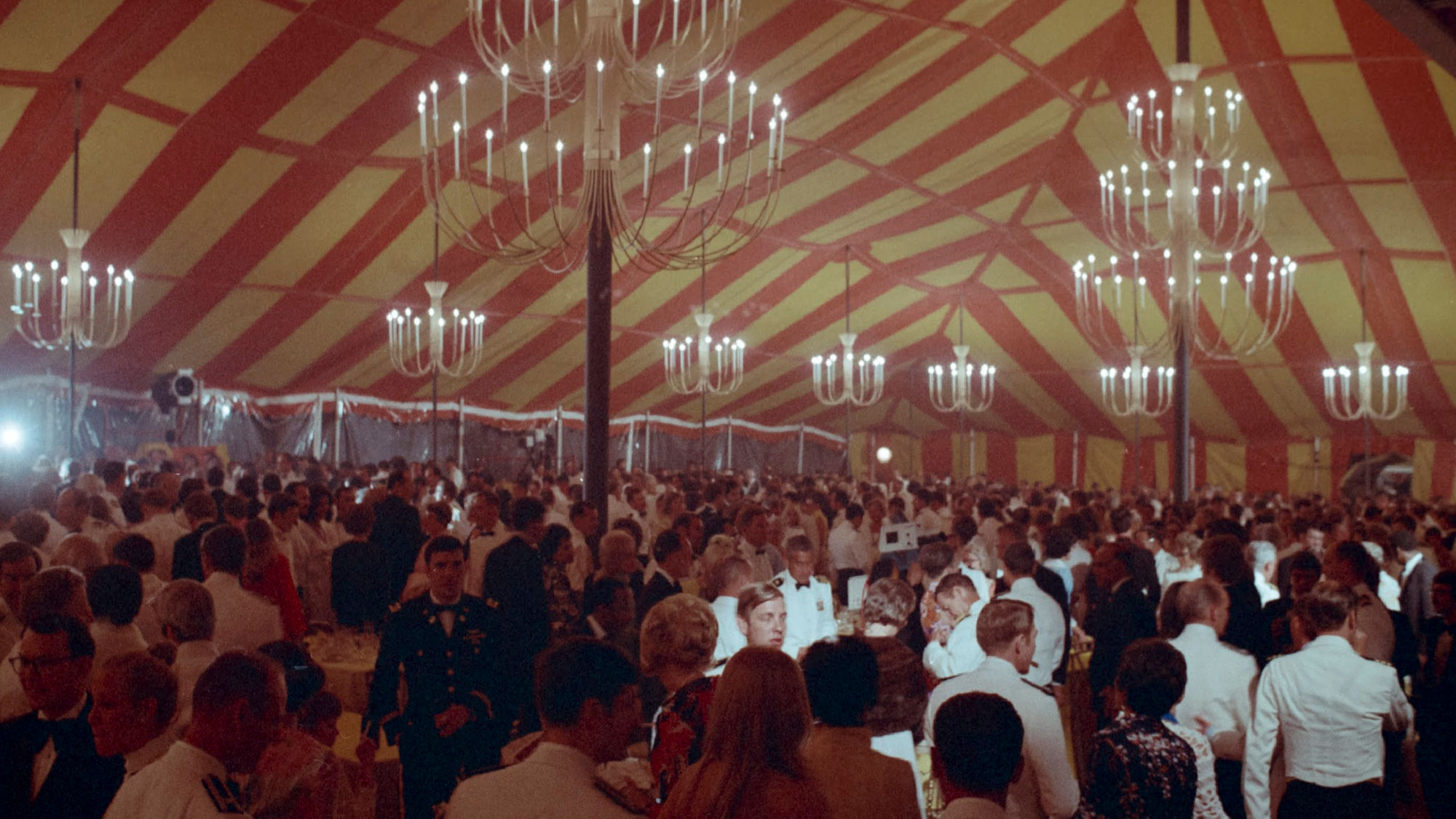
1,300 Guests
White House South Lawn
A massive temporary tent was erected on the White House's South Lawn to accommodate the 1,300 guests at the largest dinner ever held at the Executive Mansion.
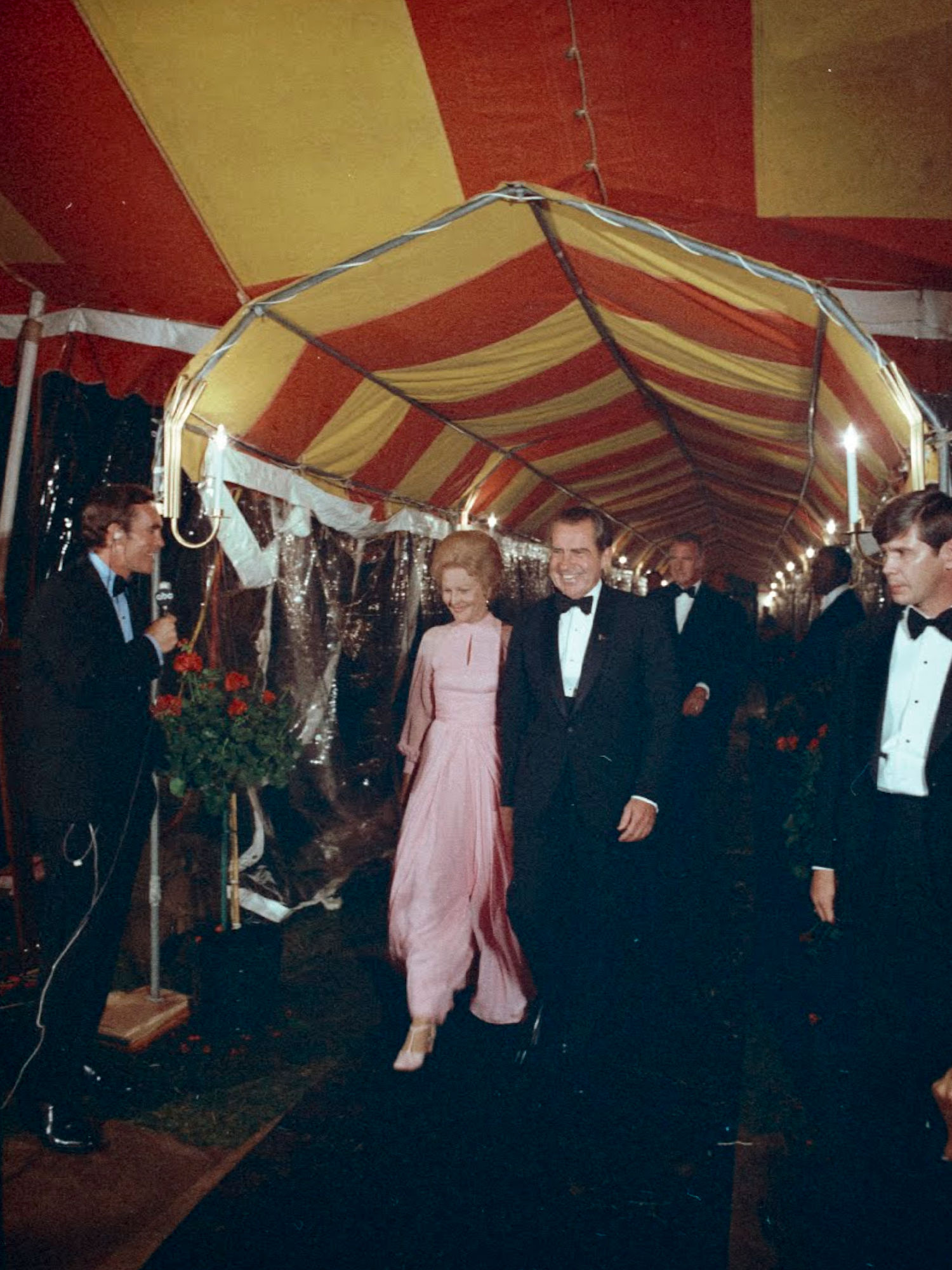
Pat & Richard Nixon
White House POW Dinner
President Richard Nixon and First Lady Pat Nixon arrive at the White House dinner honoring the returned POWs and their guests.
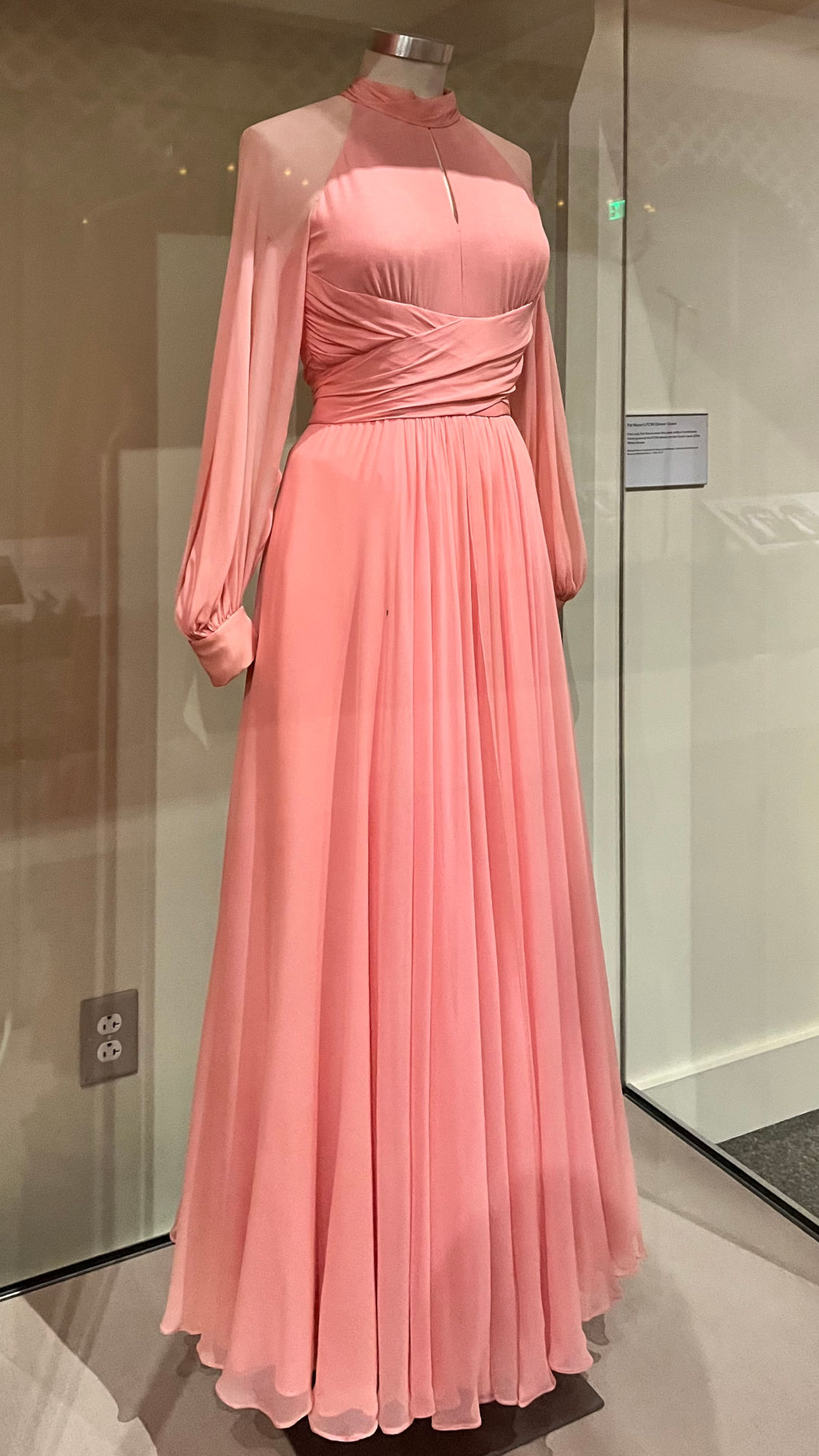
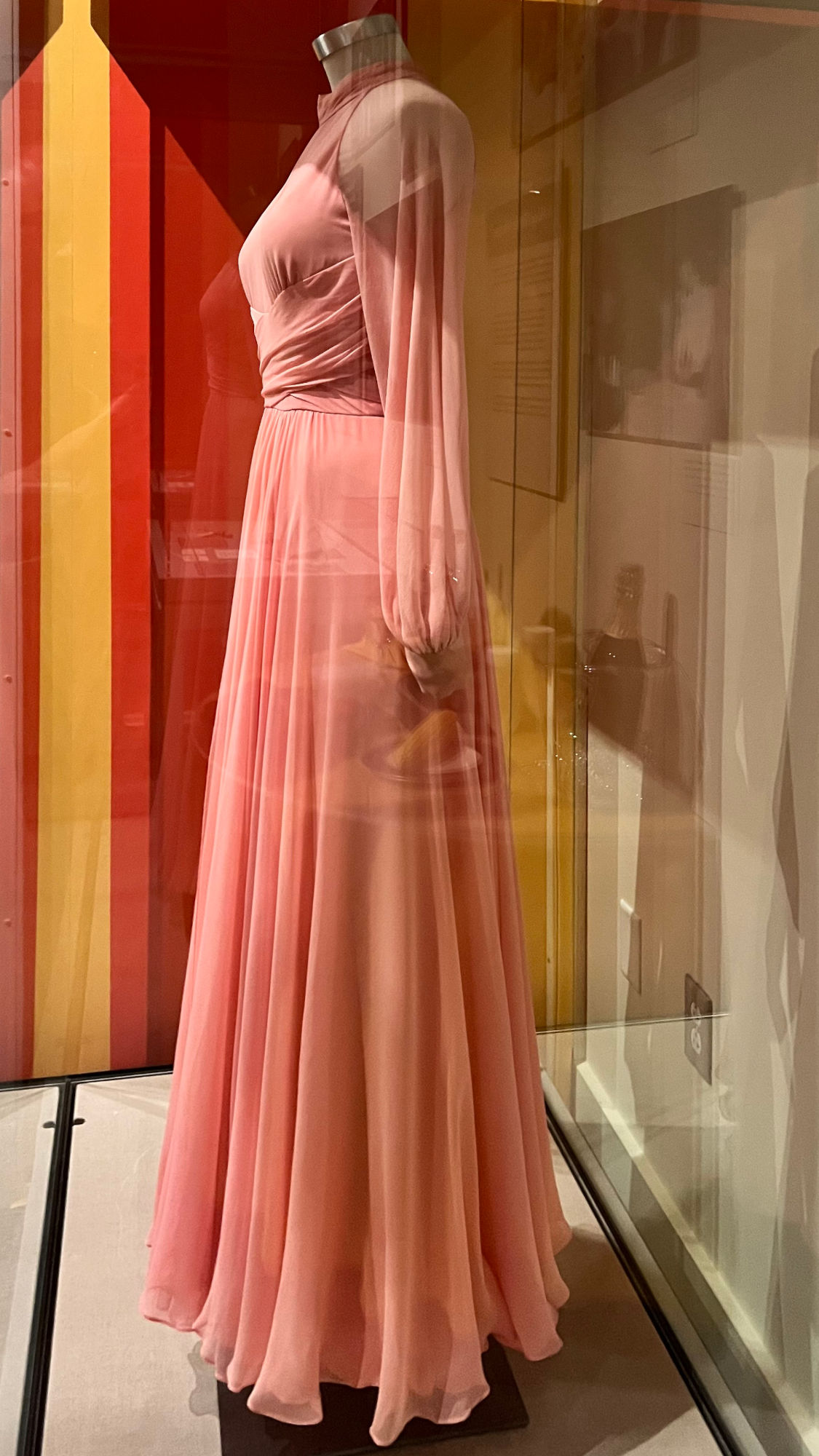
Pat Nixon's POW Dinner Gown
Ferdinando Sarmi
First Lady Pat Nixon wore this pink chiffon Ferdinando Sarmi gown at the POW dinner on the South Lawn of the White House.
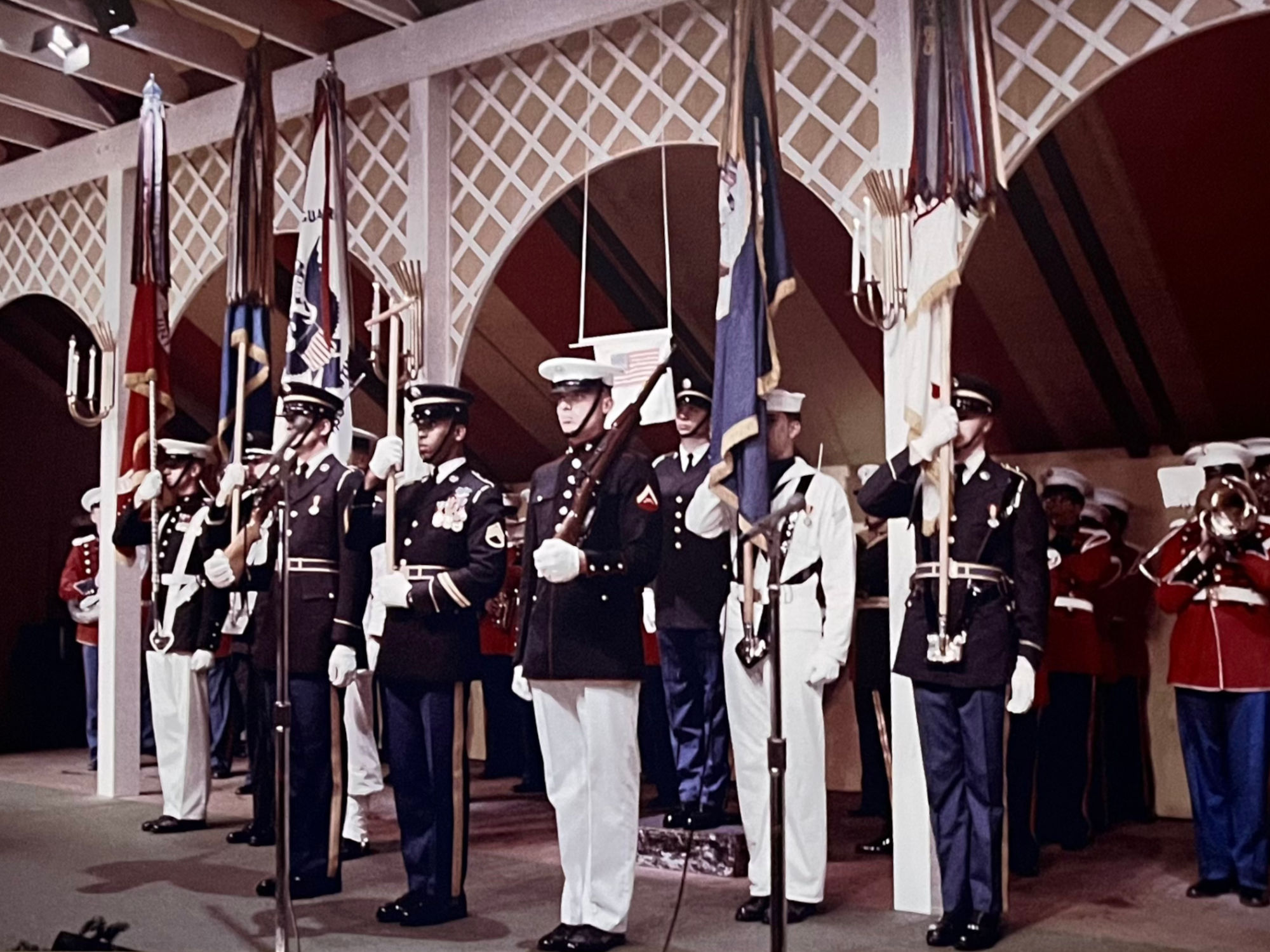
Honor Guard
White House POW Dinner
The Honor Guard stands at attention, as a joint color guard presents the flags of their respective branches.
A Meal Fit for Heroes
An Extravagant Dinner
While in captivity they often dreamed of a hearty American meal, so that's what the First Lady asked the chefs to prepare. This night at the White House they enjoyed an extravagant dinner. A selection of California wines and champagne complemented the meal.
During their time in captivity the Prisoners of War were barely given enough food to survive. What food they were given was often peppered with rat feces, insects, and animal hair. Food and water were often withheld as punishment, sometimes for days.
Alvarez described a typical meal:
- 500 pounds of seafood
- 1,200 pounds of roast beef
- 510 pounds of vegetables
- 400 pounds of new potatoes
- 200 pints of strawberries
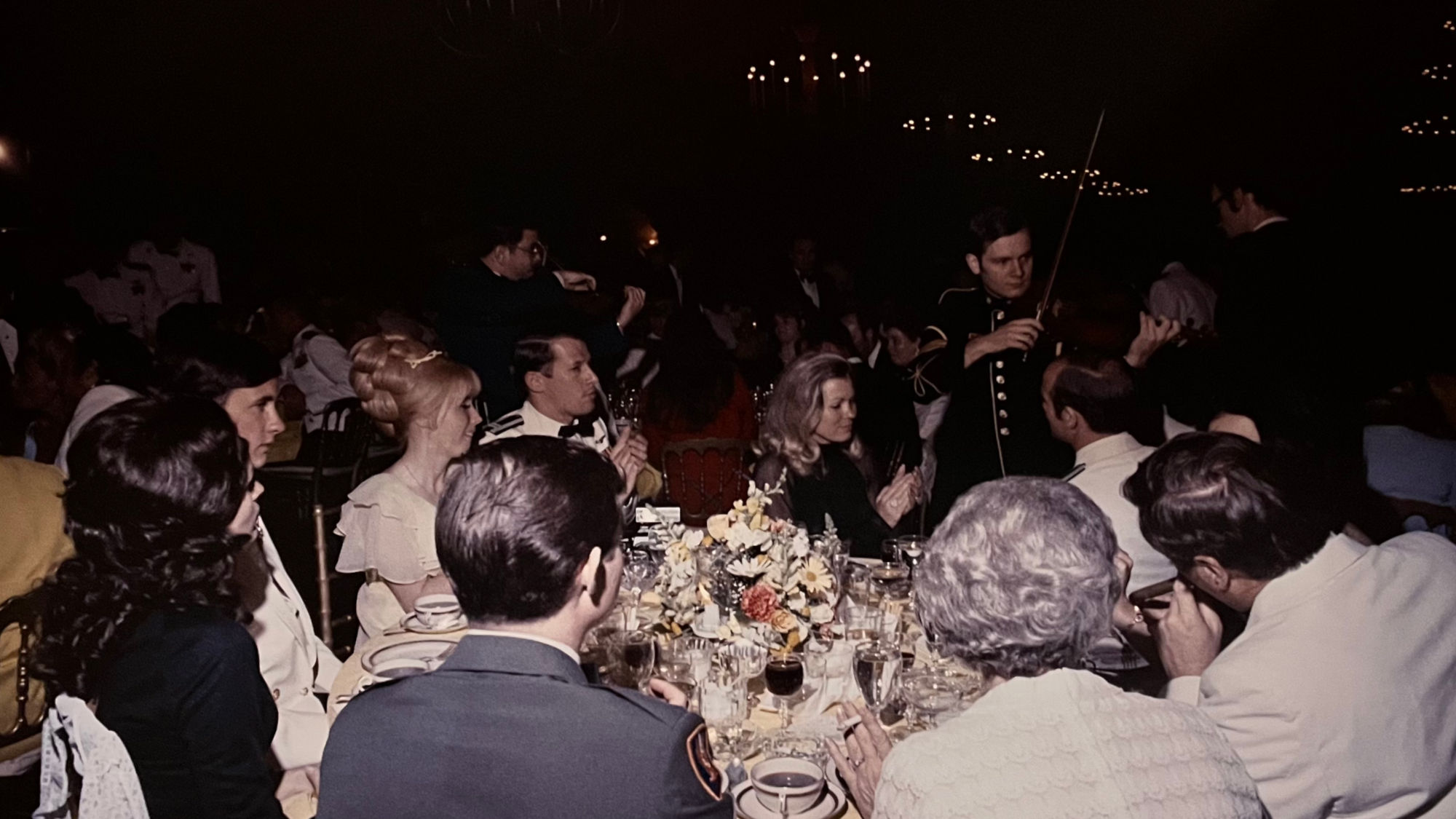
Strolling Strings
White House POW Dinner
During the dinner, members of the military's Strolling Strings circulate throughout the tent.
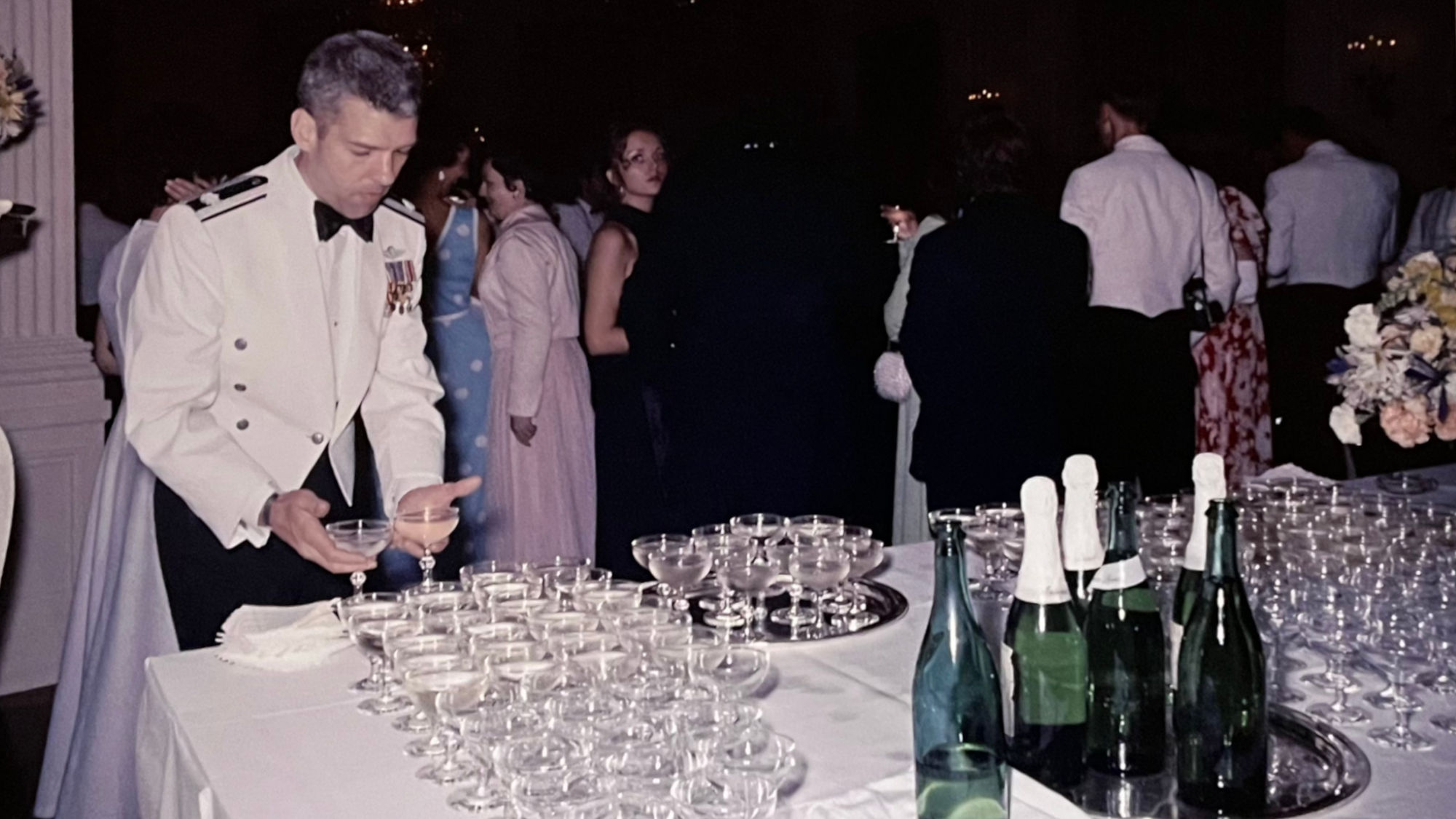
Champagne
White House POW Dinner
More than 1,000 glasses of champagne were poured for the POWs and their guests. Canoes filled with ice kept the bubbly cold before it was poured.
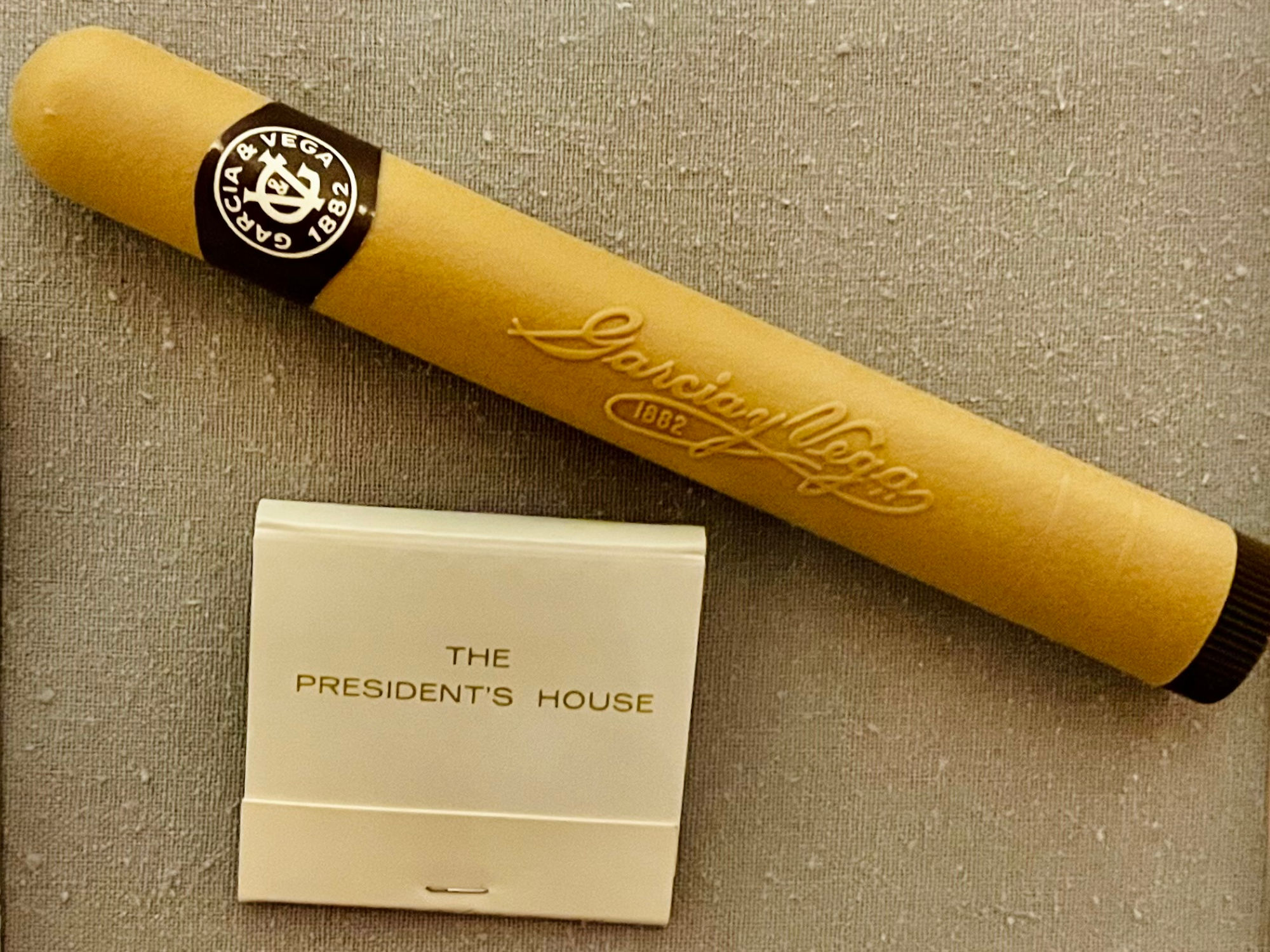
Cigar and Matchbook
White House POW Dinner
This Garcia and Vega 1882 cigar and White House matchbook were given out as party favors to POW dinner guests.
A Celebrity Affair
Bob Hope
An all-star cast of entertainers performed. Comedian Bob Hope, who had been entertaining troops since World War II, served as Master of Ceremonies. All of those on the program had performed for troops in South Vietnam.
The program included famous singers, comedians, and motion picture personalities. John Wayne received the loudest applause when he said,
Sammy Davis, Jr., Who had suggested the idea for this special program to the President just 10 weeks earlier, closed the performance. The President would later recall of Davis' performance,
Perhaps the most moving moment of the evening came at the close. Irving Berlin, composer of God Bless America, led the entire crowd in heartily singing this much-loved patriotic song.
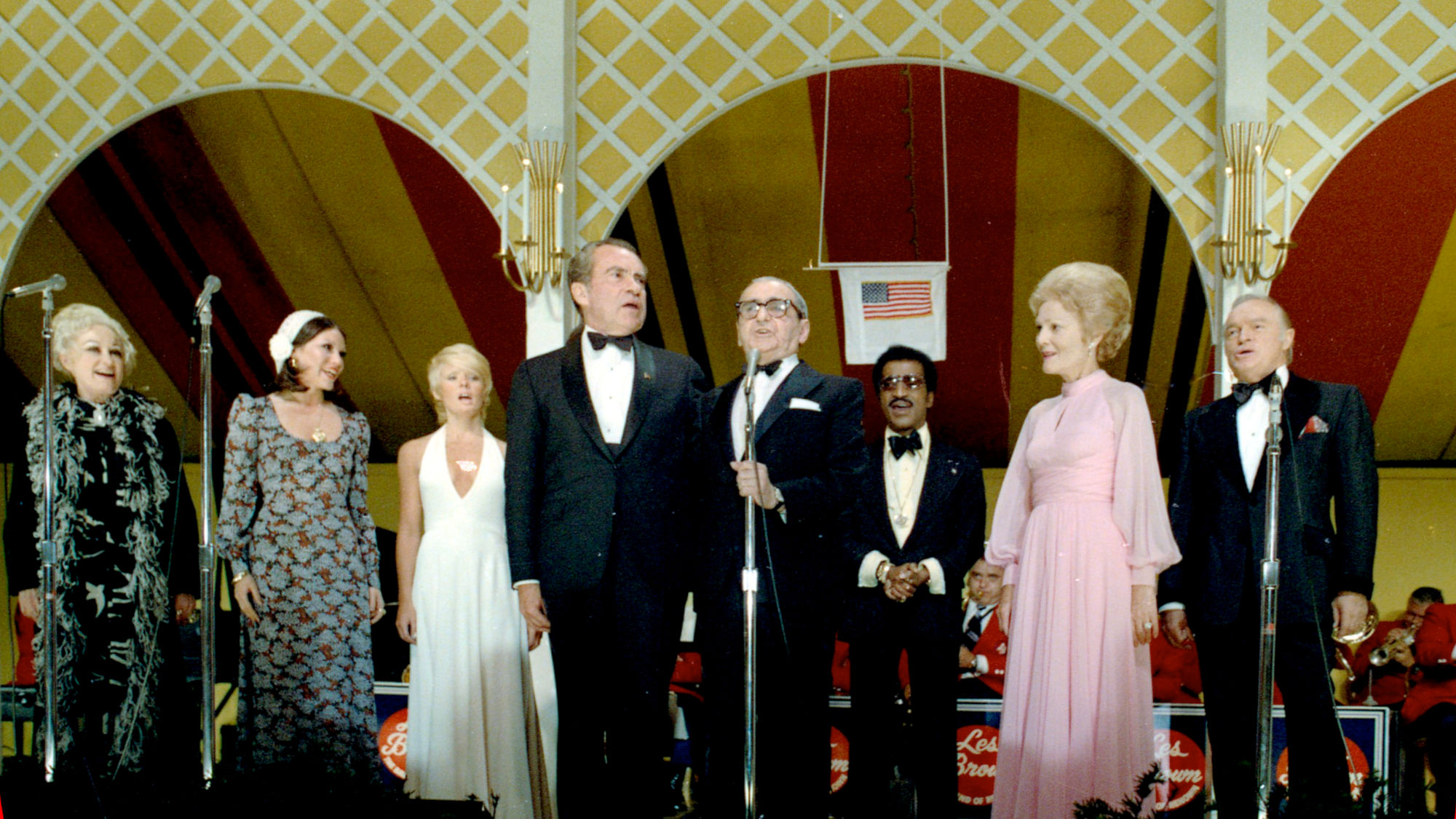
God Bless America
White House POW Dinner
POW dinner entertainers on stage singing God Bless America.
- Phyllis Diller
- Joy Lober of The Christy Minstrels Group
- Joey Heatherton
- President Nixon
- Irving Berlin
- Sammy Davis Jr.
- First Lady Pat Nixon
- Bob Hope
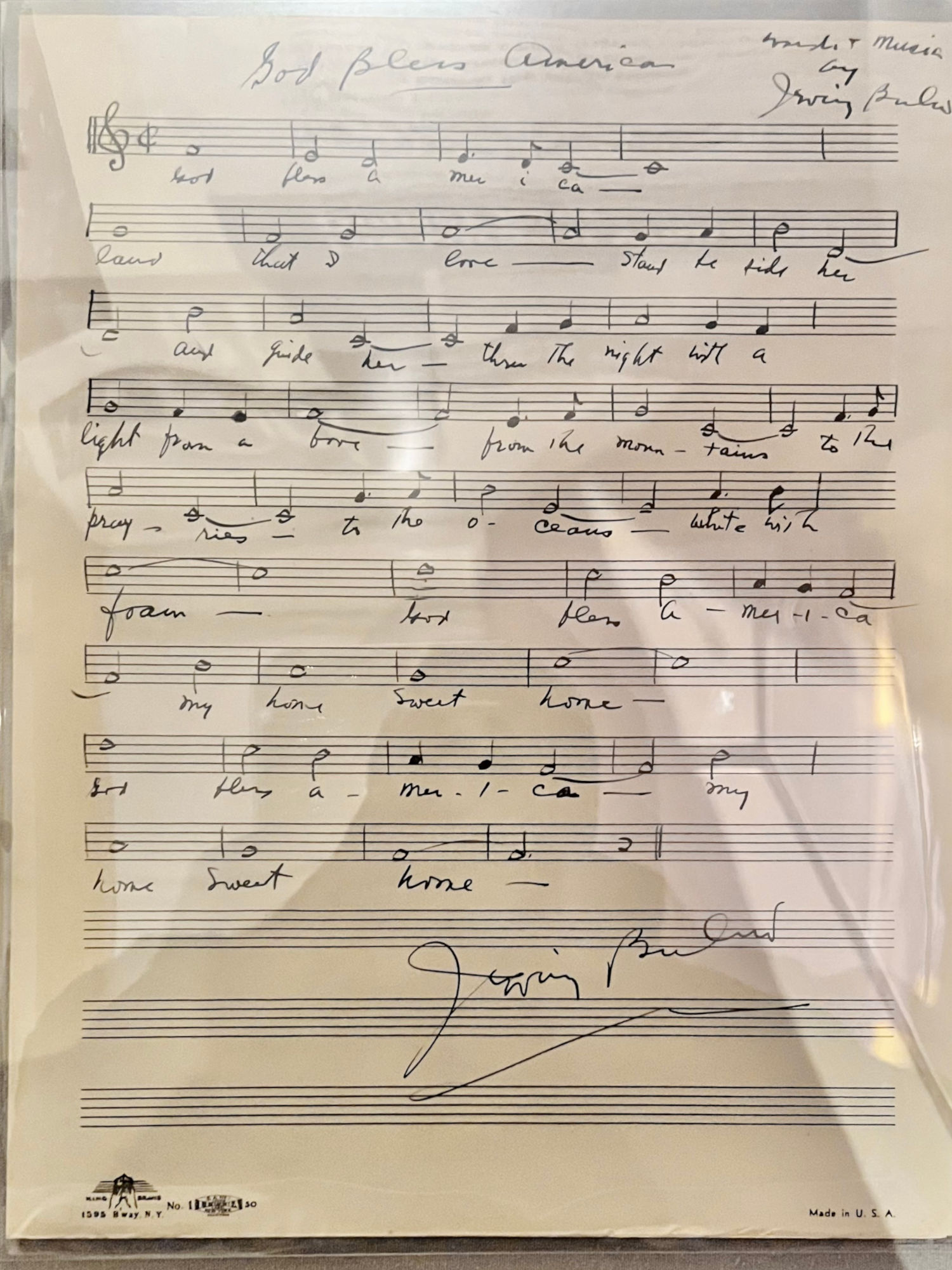
God Bless America Sheet Music
White House POW Dinner
This handwritten chorus sheet of "God Bless America" features composer Irving Berlin's signature. Berlin first wrote the song in 1918 while serving in the U.S. Army, and later performed it with President Richard Nixon at the POW White House dinner.
They Danced All Night
After the show concluded early the next morning, the President and Mrs. Nixon returned to the Family Quarters of the White House at 12:30 AM. Protocol requires once the President and First Lady leave a party, guests will soon depart. Not, however, on this special night.
Military service bands took turns playing in the East Room, where couples danced until nearly four o'clock in the morning. The rest of the State Floor - the Green, Blue, and Red Rooms, the State Dining Room, and the Entrance Hall - was buzzing with conversation as the POWs and guests shared stories, laughs, and comradery.
One POW later recalled,
Listening to the revelry, President Nixon reflected,
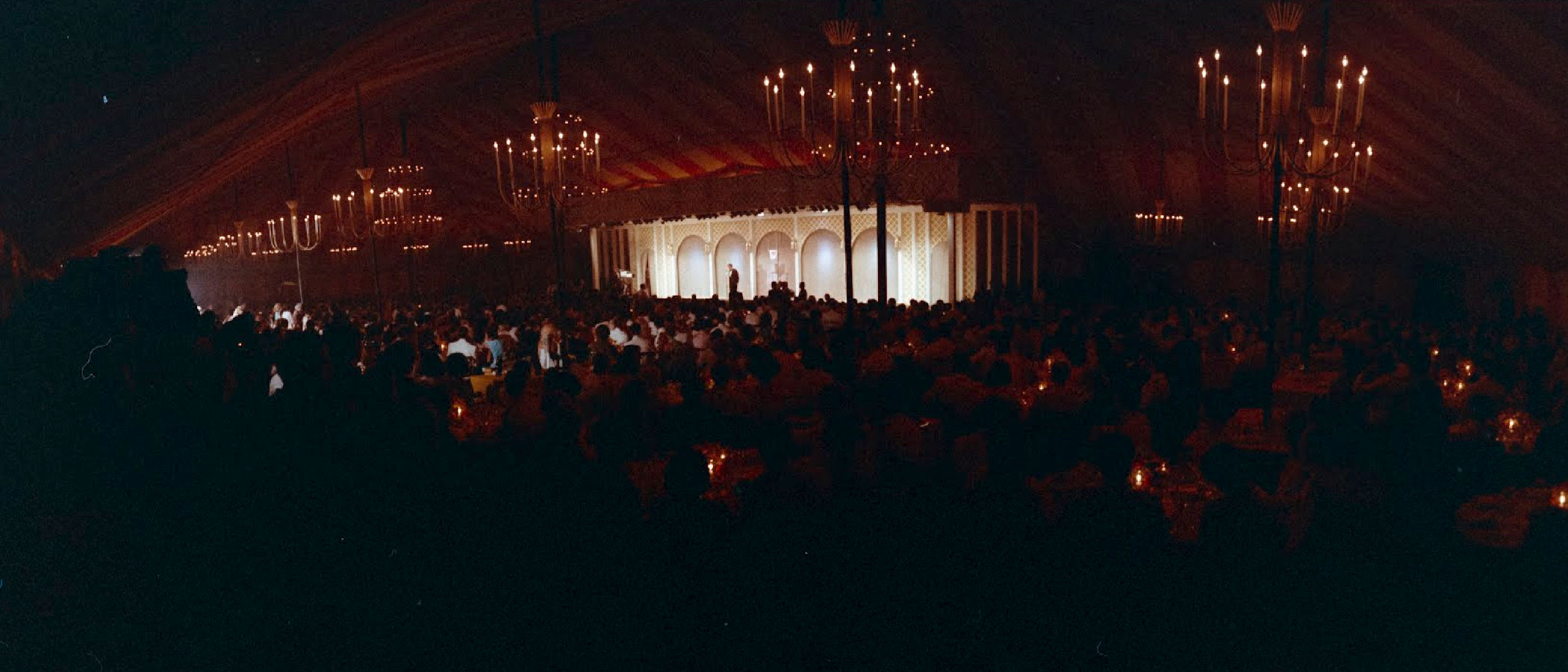
POW Dinner
White House POW Dinner
Under the red and yellow pavilion stripes, POW dinner guests celebrate the end of their ordeal, dancing carefree into the night.
Old Glory
Long May She Wave
Every American prisoner of war had sworn an oath on his induction into the armed forces to "bear true faith and allegiance" to the Constitution of the United States.
POWs found ways to remind themselves of the commitment they made when they joined the service.
- Air Force Captain Tom Hanton used the blood of squashed mosquitoes, some red and some blue, to create an American flag on the wall of his cell.
- At least two others used scraps of cloth to create small American flags.
- Captain John Dramesi used a piece of copper as a needle to sew scraps of cloth given him by fellow POWs into a flag onto a handkerchief. When he was released after six years of captivity, he managed to smuggle the flag out. At the White House dinner hosted by the President and Mrs. Nixon for returned POWs, the flag was presented by an honor guard as the band played The Stars and Stripes Forever.
- Another POW, Navy Lieutenant Mike Christian, also made a flag. When his captors found the flag, which he had sewn into his shirt, he was severely beaten. After the punishment, he was returned to his cell in terrible shape. He immediately started to sew a new flag. His cellmate Senator McCain recalled years later,
Mike was making that flag because he knew how important it was for us to be able to pledge our allegiance to our flag and our country.
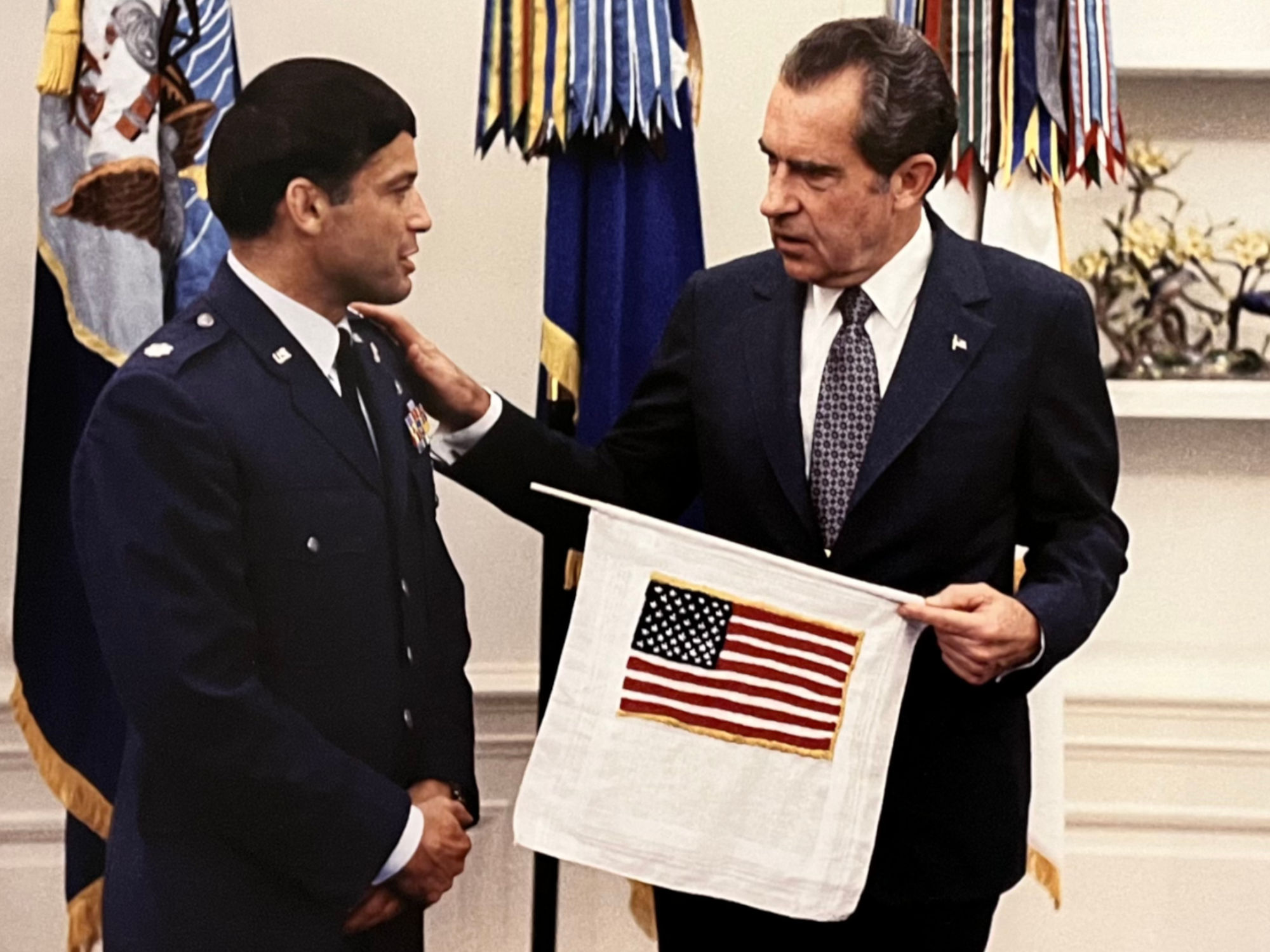
John A. Dramesi
American Flag
President Nixon meets with former Vietnam War POW Colonel John A. Dramesi, USAF. Dramesi presented to President Nixon the American Flag he embroidered on a handkerchief during his incarceration in North Vietnam.
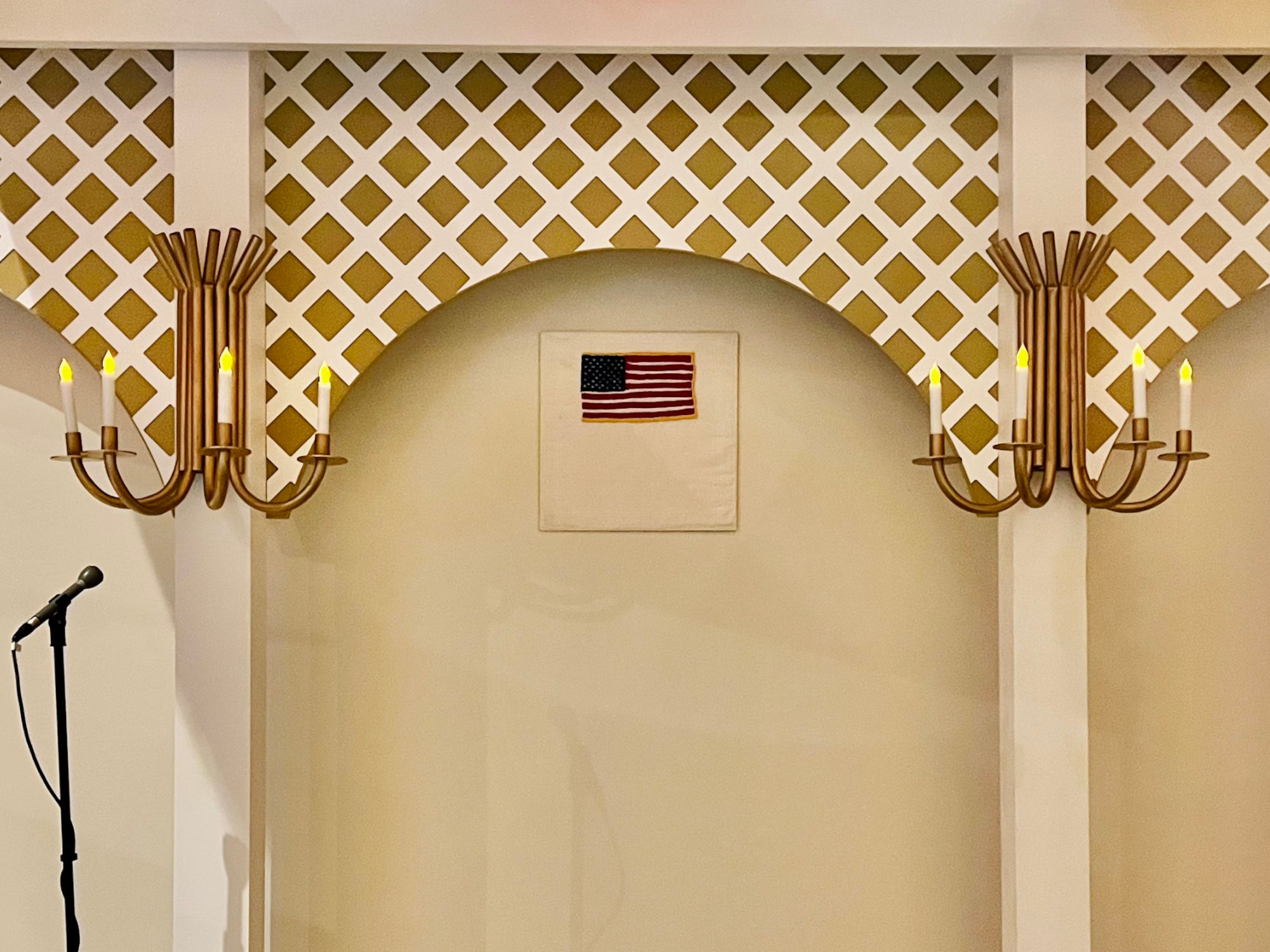
Dramesi Flag
Colonel John A. Dramesi
During their internment in Hanoi, a group of POWs made an American flag from fabric remnants they collected. The Dramesi Flag was displayed at the White House POW dinner on May 24, 1973.
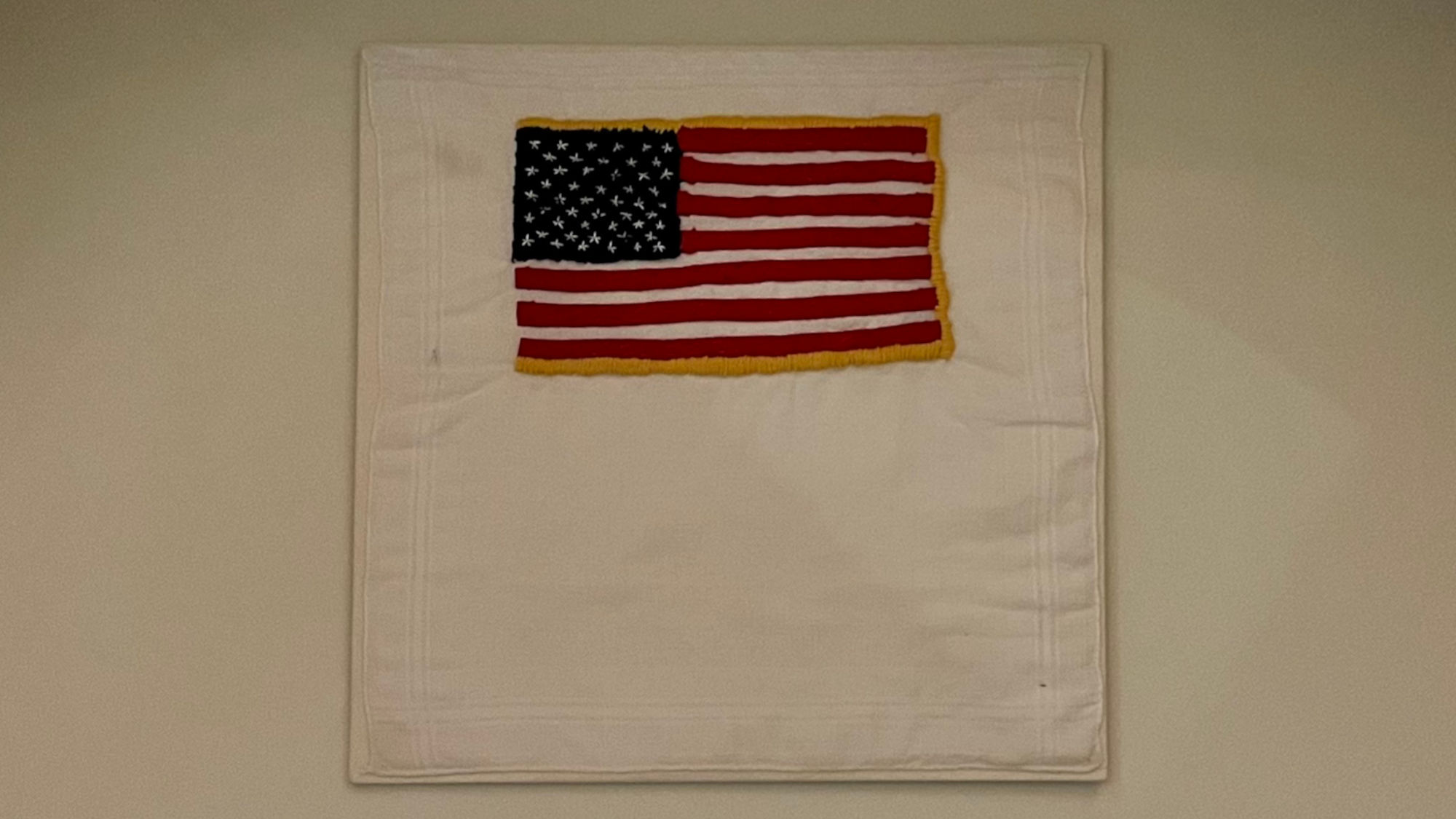
Return to Normal?
Life Moved On
When the prisoners of war returned home from their captivity, they arrived in a country that had undergone enormous change. They had missed the era of "sex, drugs, and rock and roll," political unrest, women's liberation, and social upheaval.
On a personal level, their families had also changed. Some had lost parents, siblings, and other loved ones. Many found that their spouses had gained a new level of independence as they became advocates for their husbands and navigated the challenges of managing a household by themselves. Those with children found that they had matured during their absence.
The horrors of their captivity had also taken a toll on their health. The torture left permanent physical and psychological scars they would carry for the rest of their lives.
Despite all that they had endured, life moved on. Many of them remained in the military. Others sought advanced degrees to forge new career paths as doctors or lawyers. Yet others became teachers or businessmen. Some even went into politics, serving in Congress, running for national office, or serving as state or local elected officials.
As Navy Captain Michael Ambrose, the head of an ongoing study of the returned Vietnam POWs put in 1999,
Richard Nixon Resigns
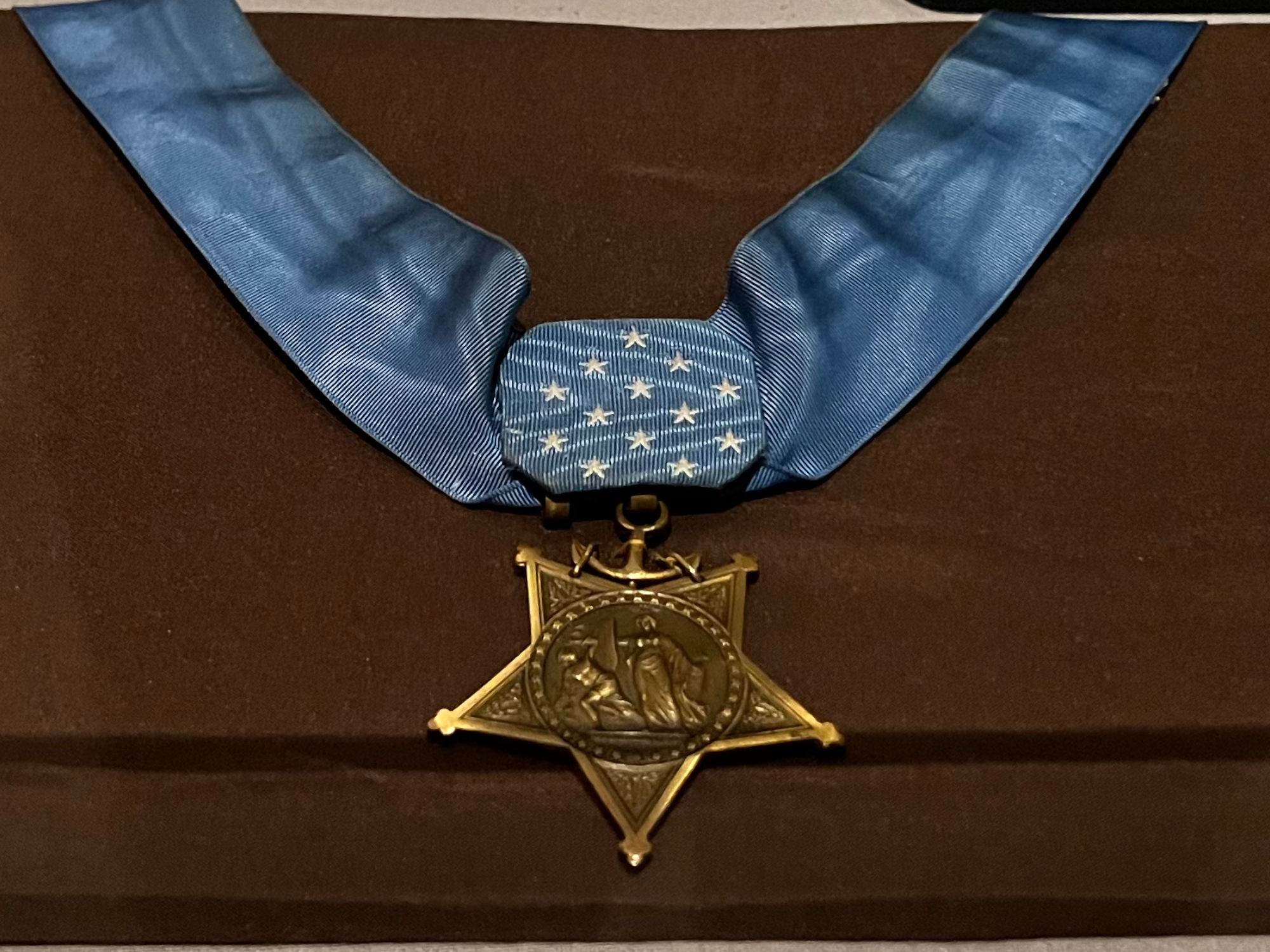
James Stockdale
Medal of Honor
President Gerald R. Ford awarded Vice Admiral Stockdale the Medal of Honor in 1976 for his devotion to his fellow POWs and to the United States while imprisoned at the Hanoi Hilton.
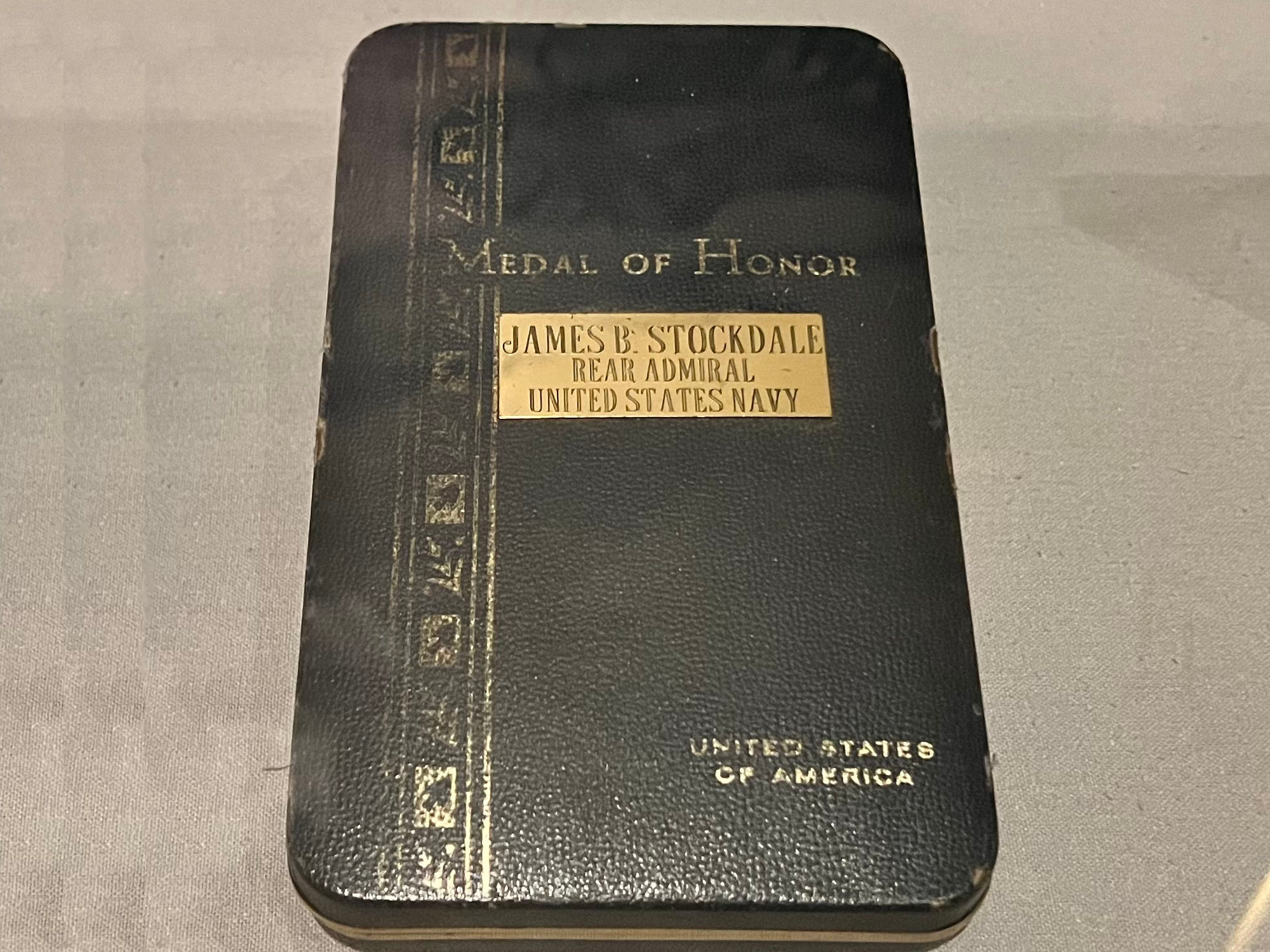
A Forever Brotherhood
One of the earliest was held in May 1978 at the Nixon home in San Clemente, California. The former president welcomed 300 former POWs almost exactly five years after the 1973 White House gala.
In brief remarks, he told his guests,
The former POWs presented the former president with a painting depicting a prison cell with an empty set of the uniforms they were given to wear by their captives. All of the former prisoners present signed the painting, which was inscribed,
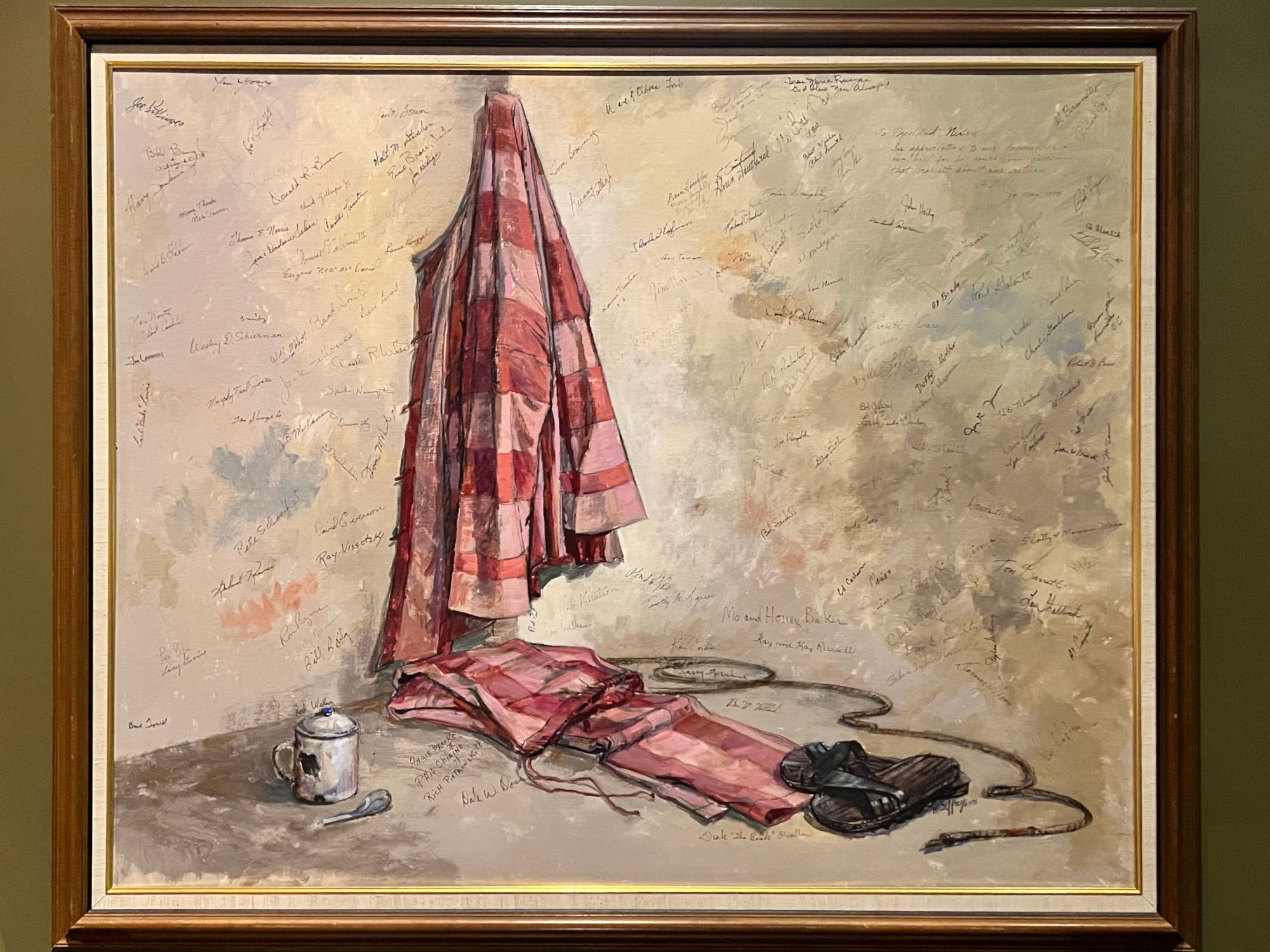
Five Year Reunion
The Nixon Home in San Clemente, California
This painting depicts the few possessions POWs were allowed, which included striped pajamas, utensils, and tire slippers. In the upper right hand corner of the painting an inscription reads
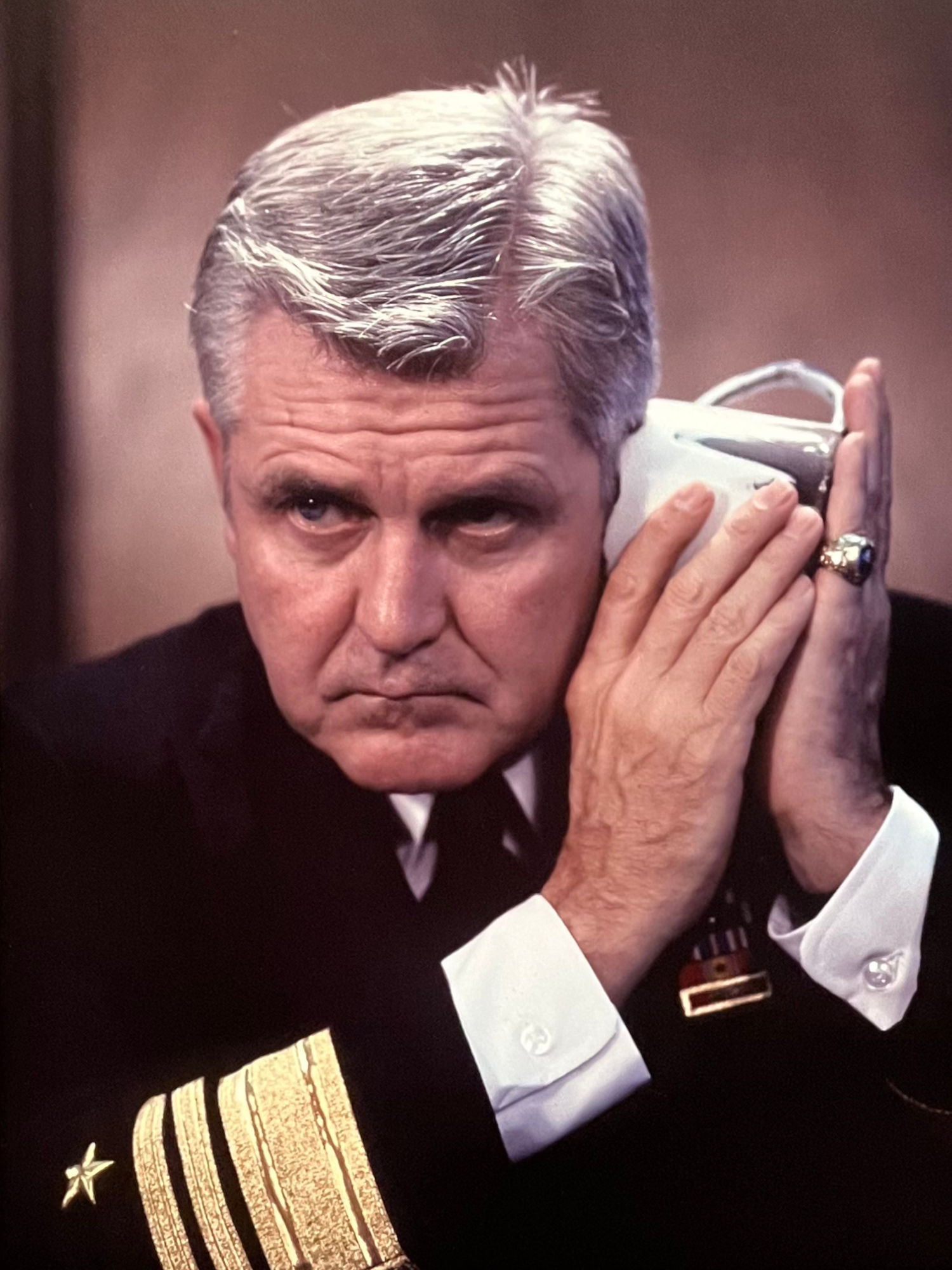
James Stockdale
Newport, Rhode Island
Former POW Admiral James Stockdale demonstrates how he used his cup as a communication device during his captivity.
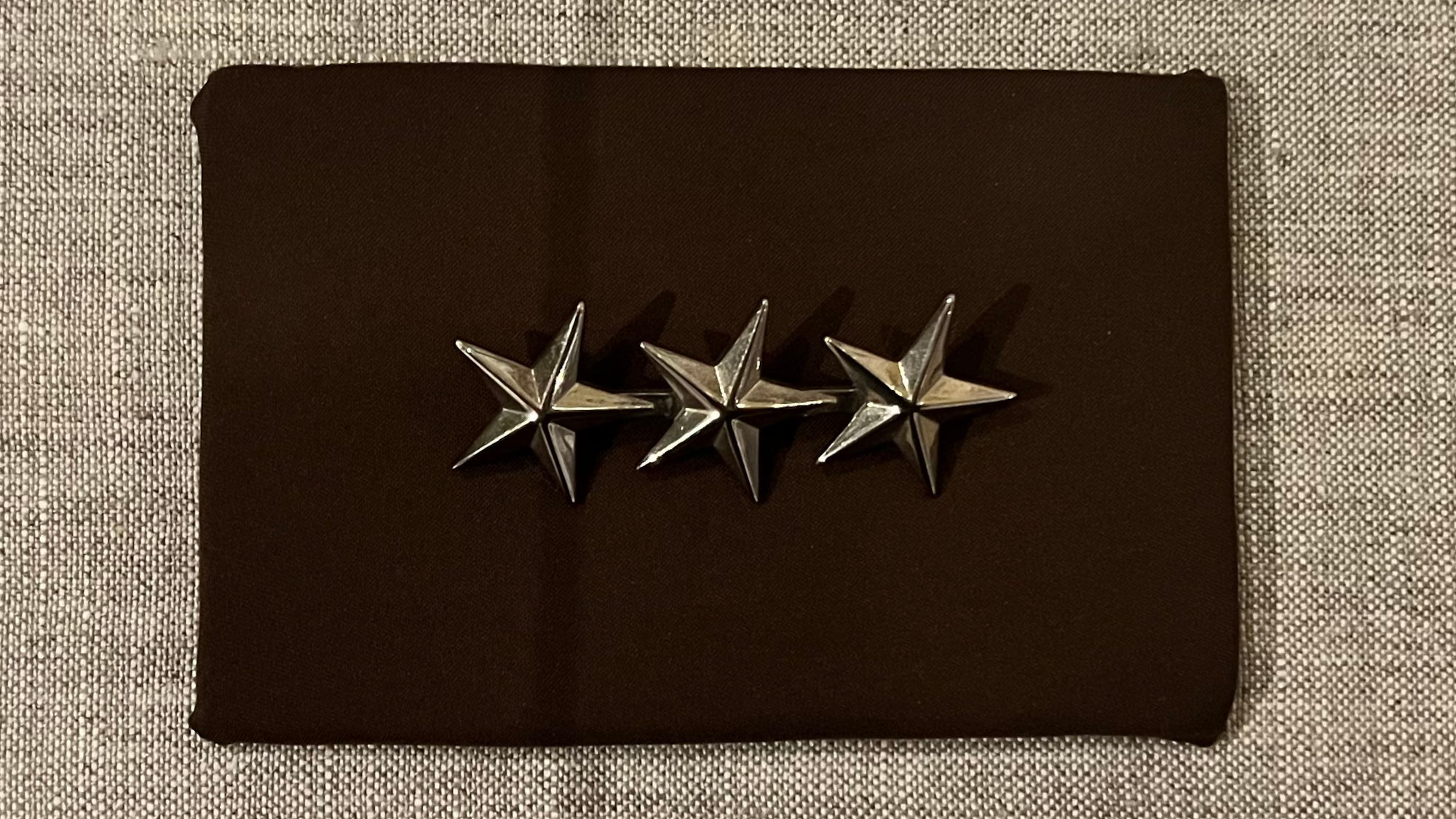
James Stockdale
Admiral Stars
James Stockdale retired as a Vice Admiral on September 1, 1979, and remains the only three-star admiral to have worn both the Medal of Honor and aviator wings.
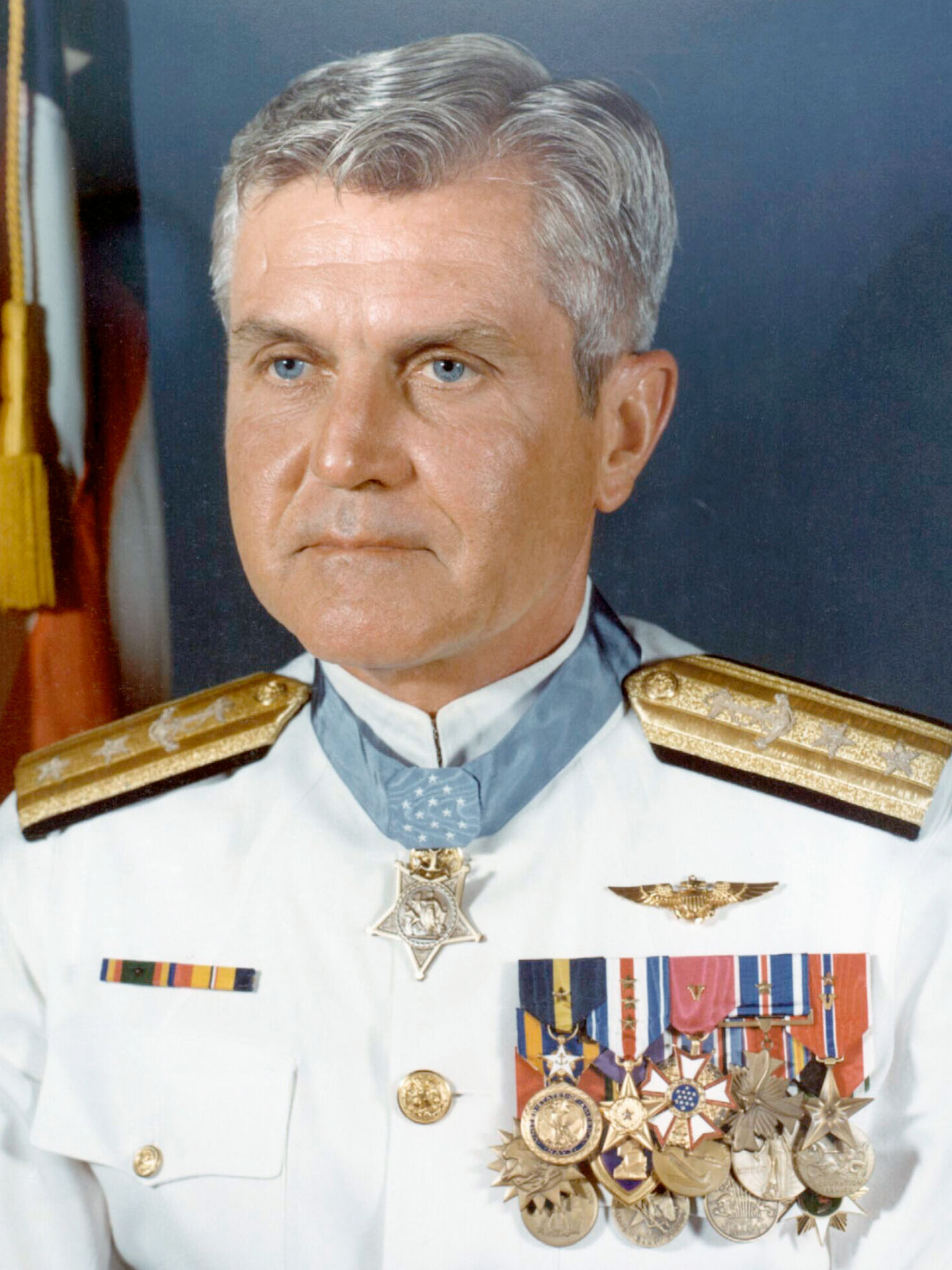
James Stockdale
Formal Portrait
James Stockdale continued with his naval career upon his release from the Hanoi Hilton, reaching the rank of Vice Admiral. In 1992, he ran for vice president of the United States with businessman and POW champion Ross Perot.
One of the most highly decorated officers in the history of the Navy
The Struggle Continued
Post-Traumatic Stress Disorder
Not every former POW seamlessly returned to life as they had known it before the war. The years of inhumane conditions in captivity had taken physical and psychological tolls that would not be easy to live with. Several studies of the Vietnam POW community tracked higher rates of divorce and greater difficulties adjusting back to normal life when compared to the broader military community.
For as long as humans have been exposed to trauma, Post-Traumatic Stress Disorder has existed. In the 20th century, psychologists and scientists identified a shared term, and it was recognized by the American Psychological Association in 1980.
According to the Department of Veteran Affairs, Vietnam Veterans are the largest group in terms of service era. While many were successfully able to assimilate back into life at home, others were not.
In recent years, advances have been made in science and psychology that will help us care for those who have cared for us.
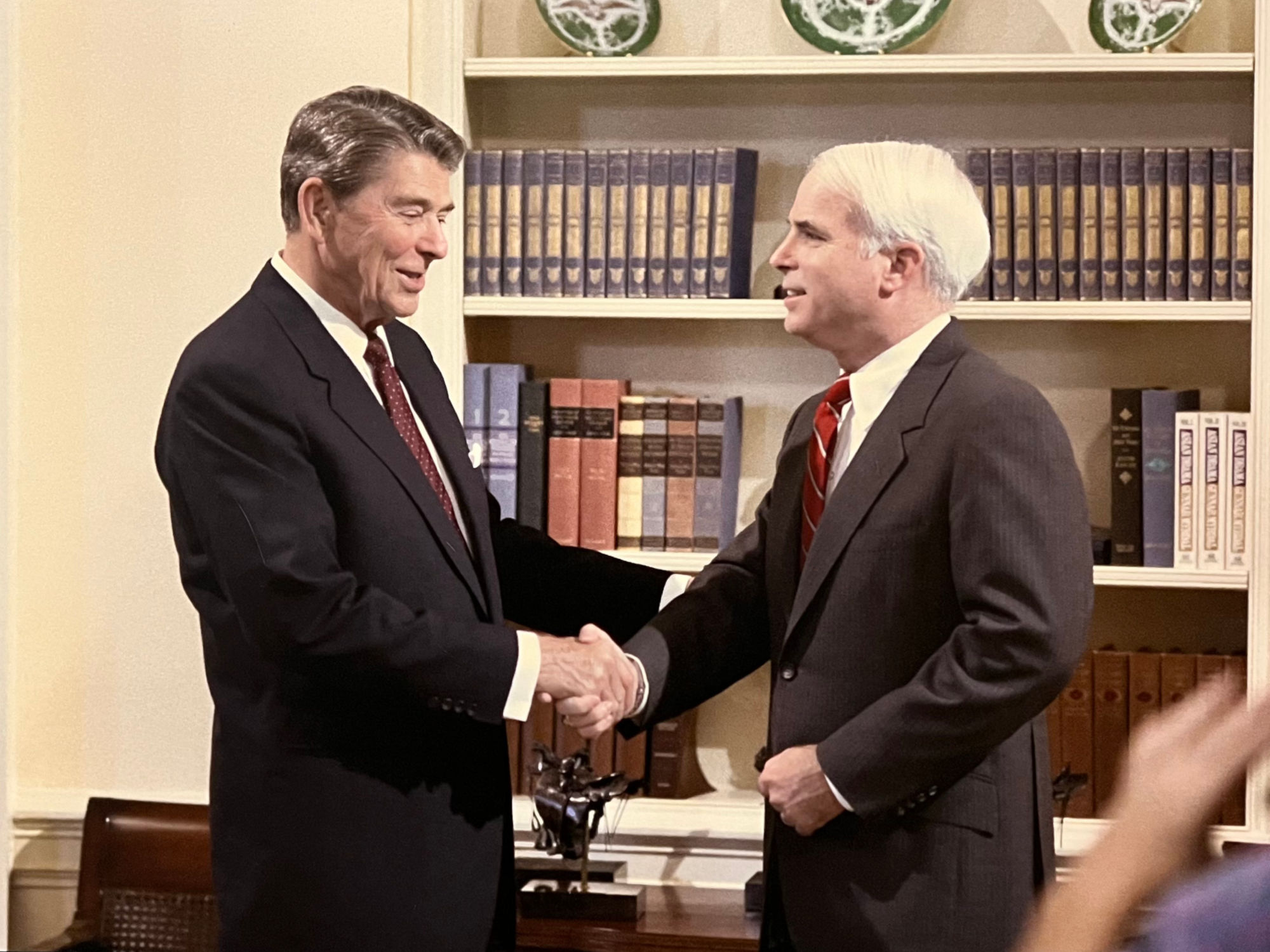
John Mccain
U.S. Representative for Arizona
In 1982, former POW John McCain was elected to the United States House of Representatives, and then to the Senate in 1986. Representing Arizona during his long career in the Congress, Senator McCain worked alongside many presidents, including Ronald Reagan. In 2008, he was the Republican presidential nominee.
Vietnam Veterans Memorial
58,318 Names
The Vietnam Veterans Memorial, located on the National Mall in Washington, DC, commemorates the lives of those Americans who gave their lives in the Vietnam War.
Dedicated on Veterans Day 1982, the black granite memorial was designed by Maya Lin, a 21-year-old architecture student at Yale University. On the wall, the 58,318 names of those who died or went missing in action are chiseled into the stone.
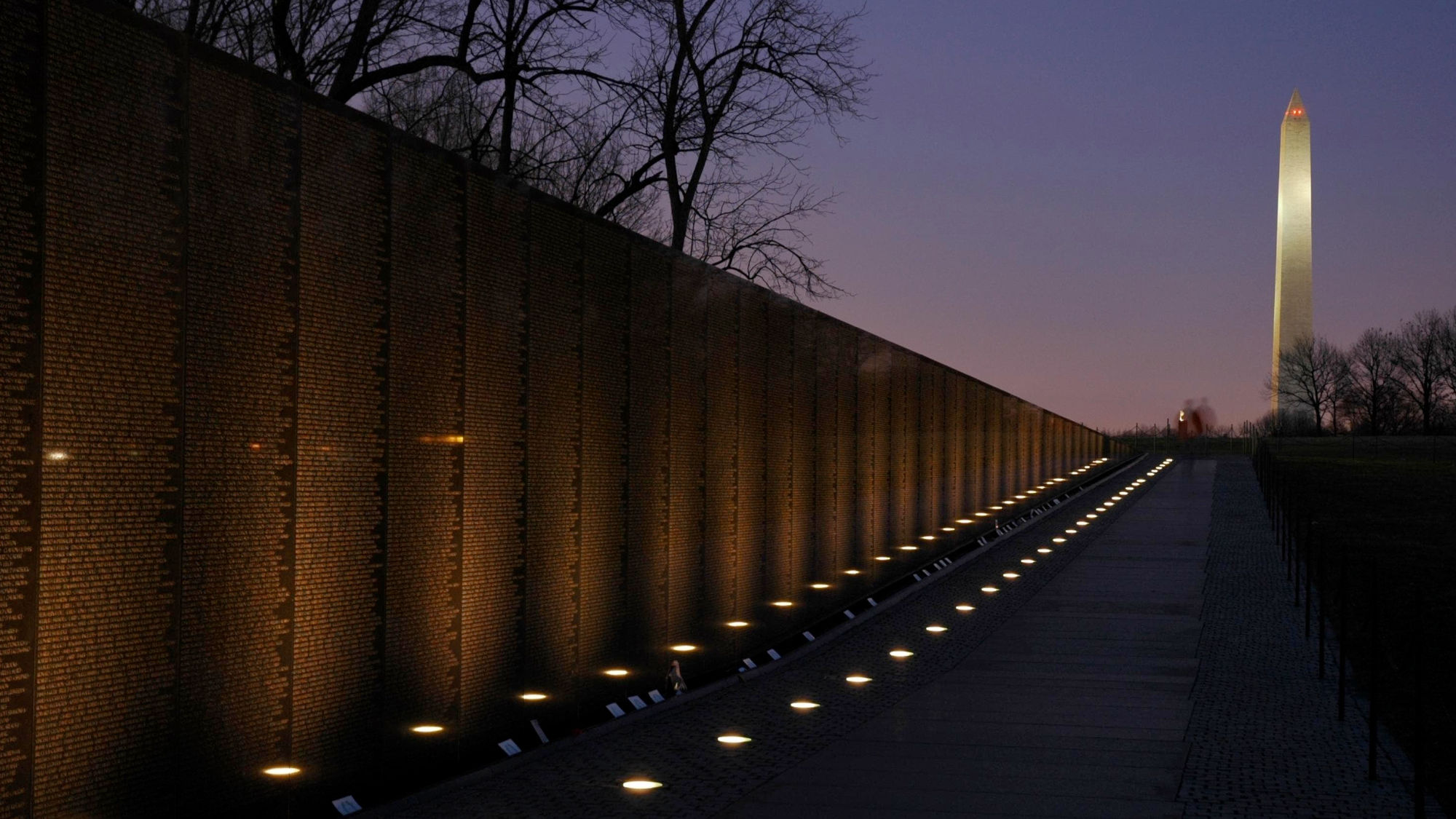
Vietnam Memorial Wall
National Mall in Washington, DC
The Vietnam Memorial honors the lives lost in Vietnam. The name of each man and woman who made the ultimate sacrifice during the war is inscribed on the black granite surface of the wall.
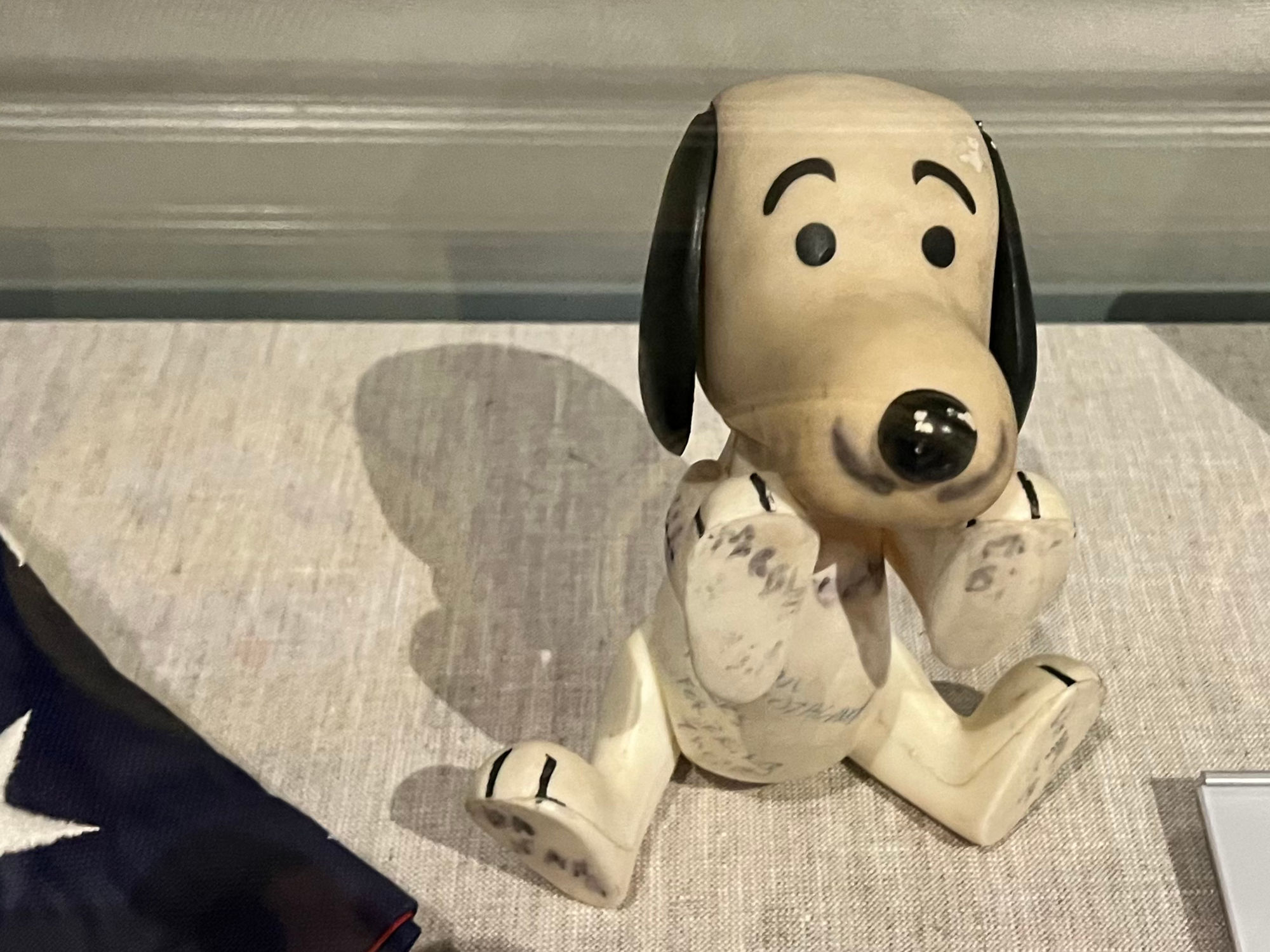
Plastic Snoopy
Good Luck Charm
Over 400,000 items have been left by visitors at the Vietnam Veterans Memorial as remembrances. This Snoopy doll was passed between units during the Vietnam War. Inscription on the doll's stomach reads
To - John Thotland. Thanks for being there - Dan.
Locations in Vietnam are written on the feet (Da Nang, Pu Bai). The U.S. Marine Corps sergeant rank insignia is drawn on Snoopy's arms.
Snoopy was a good luck piece in Nam. He served with the Marines in 1967-68 and again with a hometown friend and the Army 1970-71. He belongs here with my fallen brothers. I only wish all here could have had him back then so they could have come home like I did. For John and all the names I can't remember; I miss you guys and I'll never forget your faces and what you did.
Daniel Weig U.S.M.C.
MAG-16 H&MS-16 1967-1968
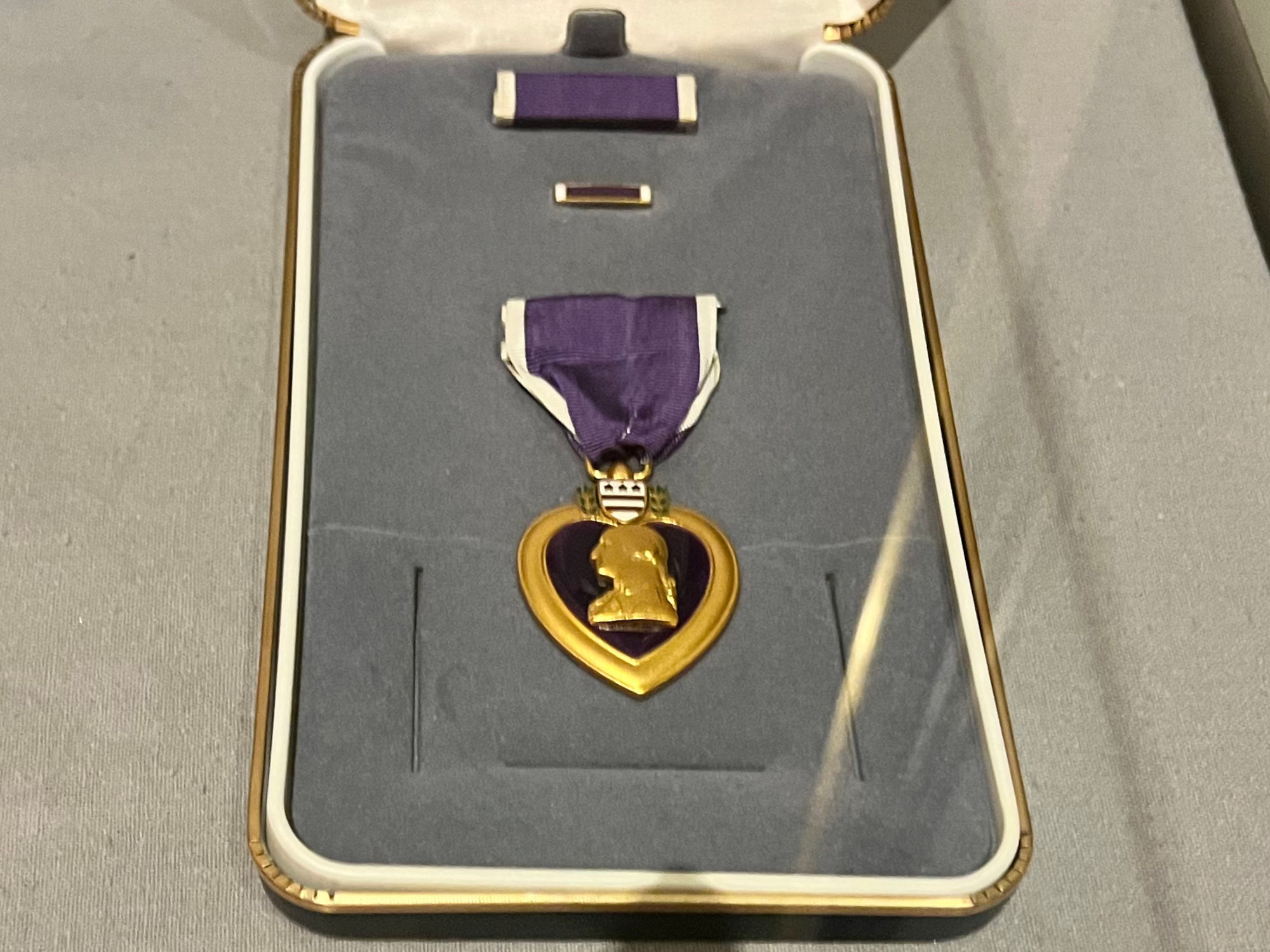
Larry R. Raymond
Purple Heart
The Purple Heart is the oldest military award in the United States, It is awarded to soldiers who were wounded or killed (awarded posthumously) in action. This Purple Heart was awarded to Larry R. Raymond, U.S. Marine Corps, a former POW.
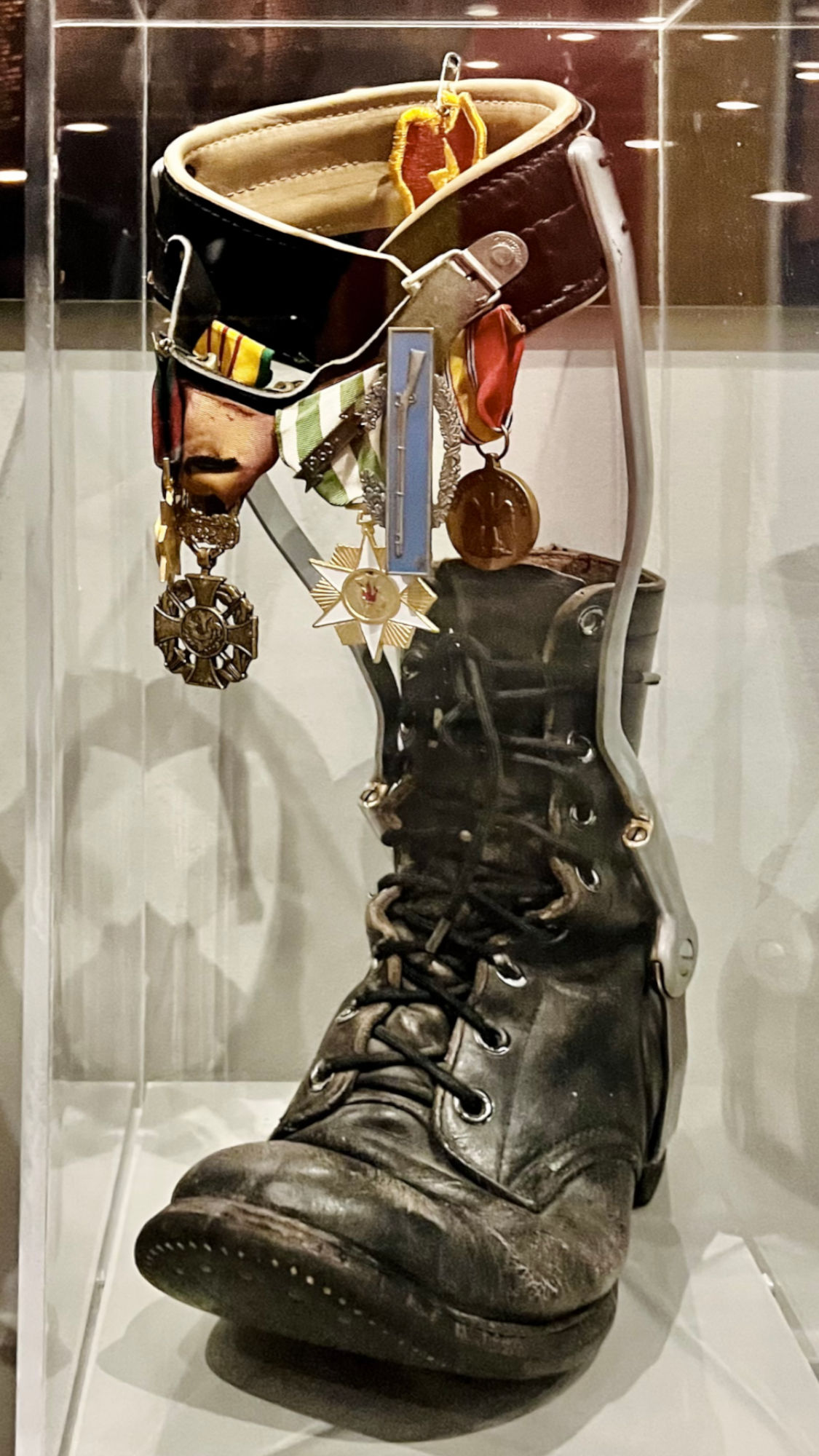
Leg Brace
Left at the Vietnam Memorial Wall
This leg brace is attached to a leather combat boot, and is decorated with military medals, badges, and patches.
- Army Good Conduct Medal
- Vietnam Service Medal
- Civic Action Honor Medal 1st Class
- Vietnam Gallantry Cross
- Vietnam Campaign Medal
- National Defense Service Medal
- Combat Infantryman Badge
- 25th Infantry Division Shoulder Sleeve Insignia
Vietnam Veterans Memorial
Three Servicemen
In 1984, a statue of three servicemen supporting one another was added to the Memorial.
The sculptor, Frederick Hart, said his goal was to show
Ross Perot was a driving force behind the effort to add the statue, as a way to honor all those who fought in Vietnam.
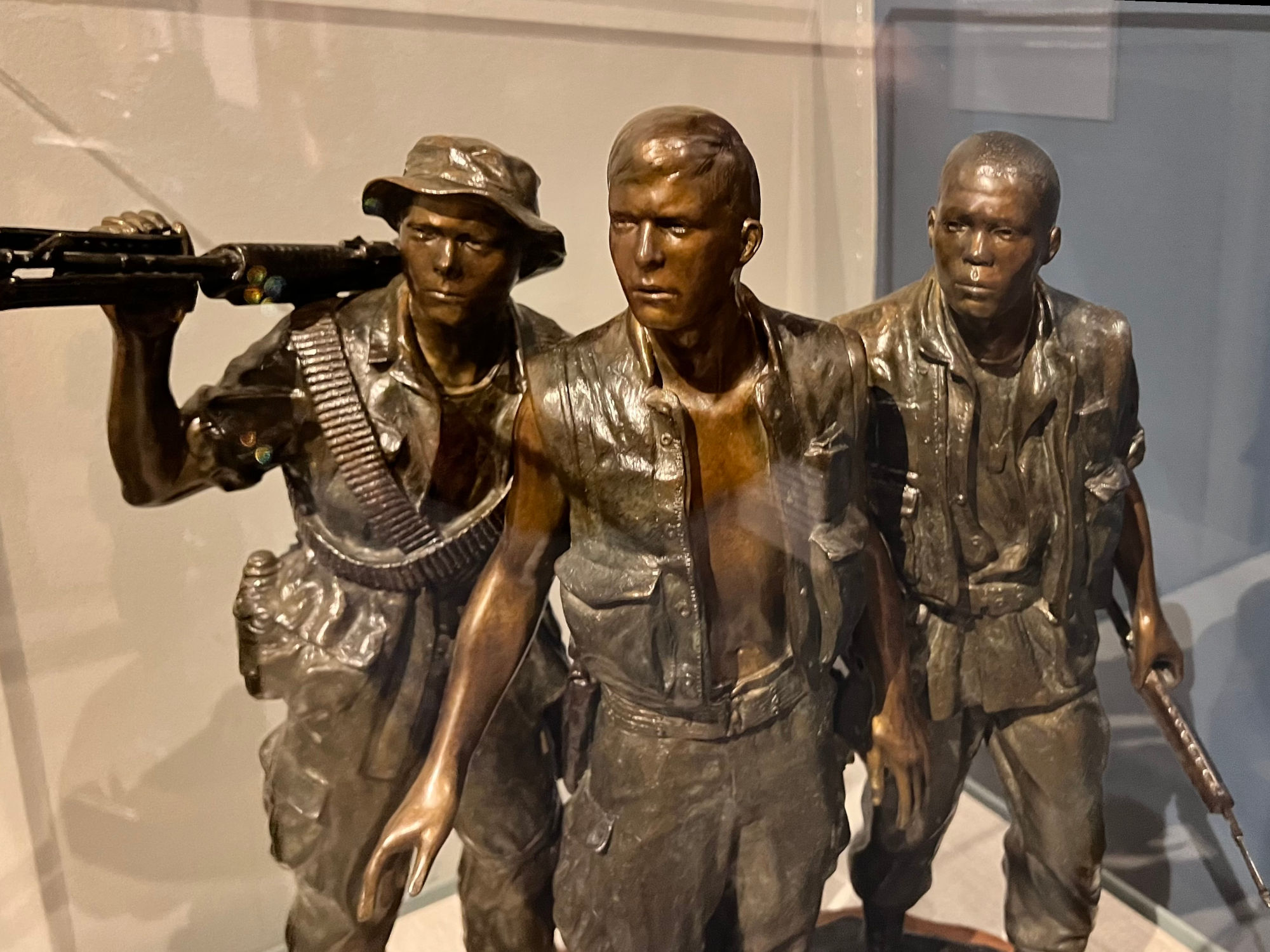
The Three Servicemen
National Mall in Washington, DC
A bronze miniature replica of the Three Servicemen Statue located near the Vietnam Veterans Memorial on the National Mall in Washington, D.C.
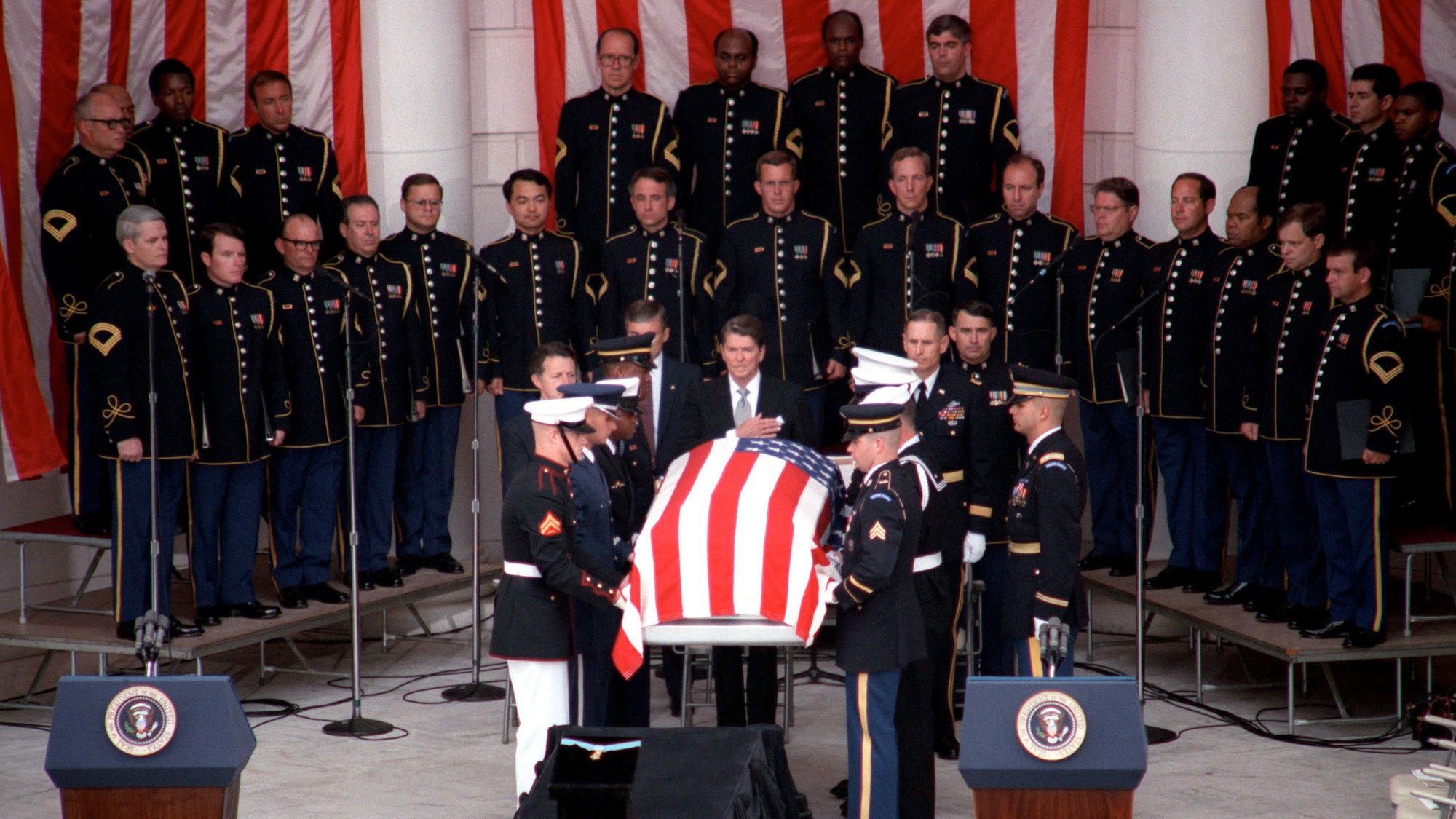
State Funeral Service
Arlington National Cemetery
President Ronald Reagan at the ceremony for the unidentified Vietnam Era soldier at the Tomb of the Unknown Soldier in Arlington National Cemetery.
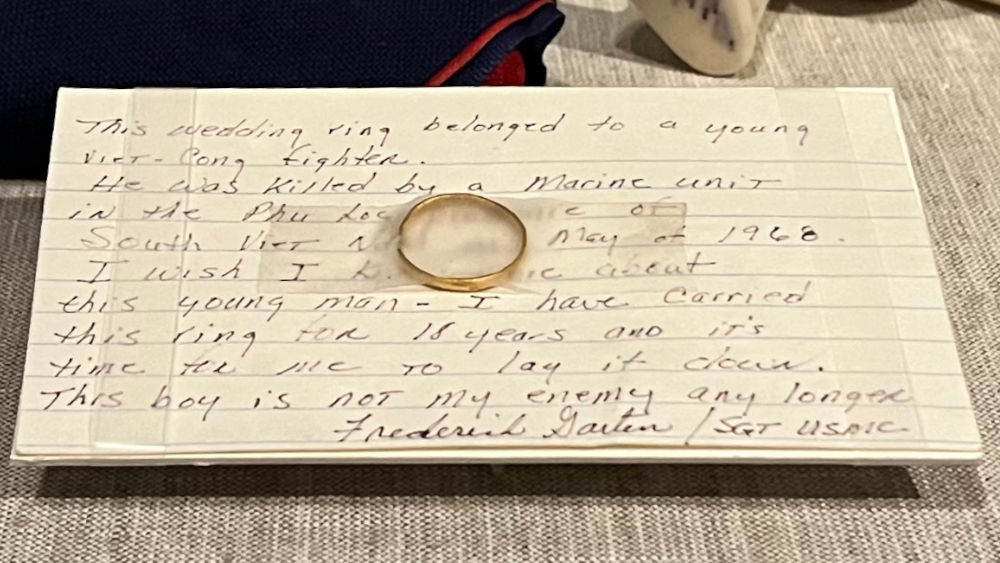
War Trophy
Phu Luc province of South Vietnam
This ring, taped to an index card, was a war trophy taken from a young Viet Cong fighter killed in the Phu Luc province of South Vietnam in May 1968. The veteran who left it at the Vietnam Veterans Memorial on Veterans Day, 1986, says he no longer thinks of that fighter as his enemy.
This wedding ring belonged to a young Viet-Cong fighter. He was killed by a Marine unit in the Phu Loc province of South Vietnam in May of 1968. I wish I knew more about this young man - I have carried this ring for 18 years and it's time for me to lay it down. This boy is not my enemy any longer.
Frederick Garten / SGT USMC.
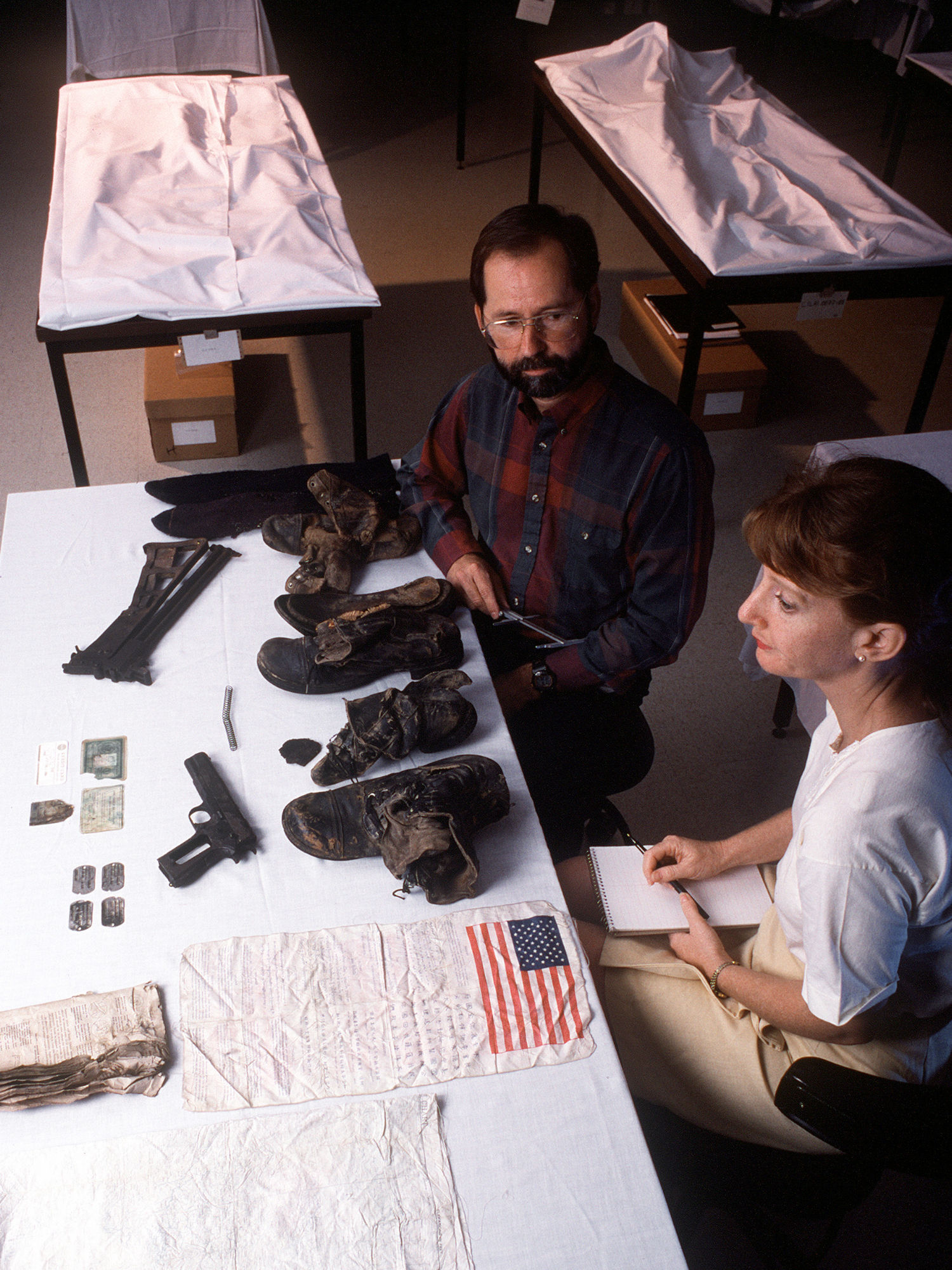
MIA Evidence
Hickam Air Force Base, Hawaii
The search for the missing in action continues to this day, with many groups looking for any traces of the whereabouts of the lost.
- Physical Anthropologist Bob Mann
- Intern Jane Hoff
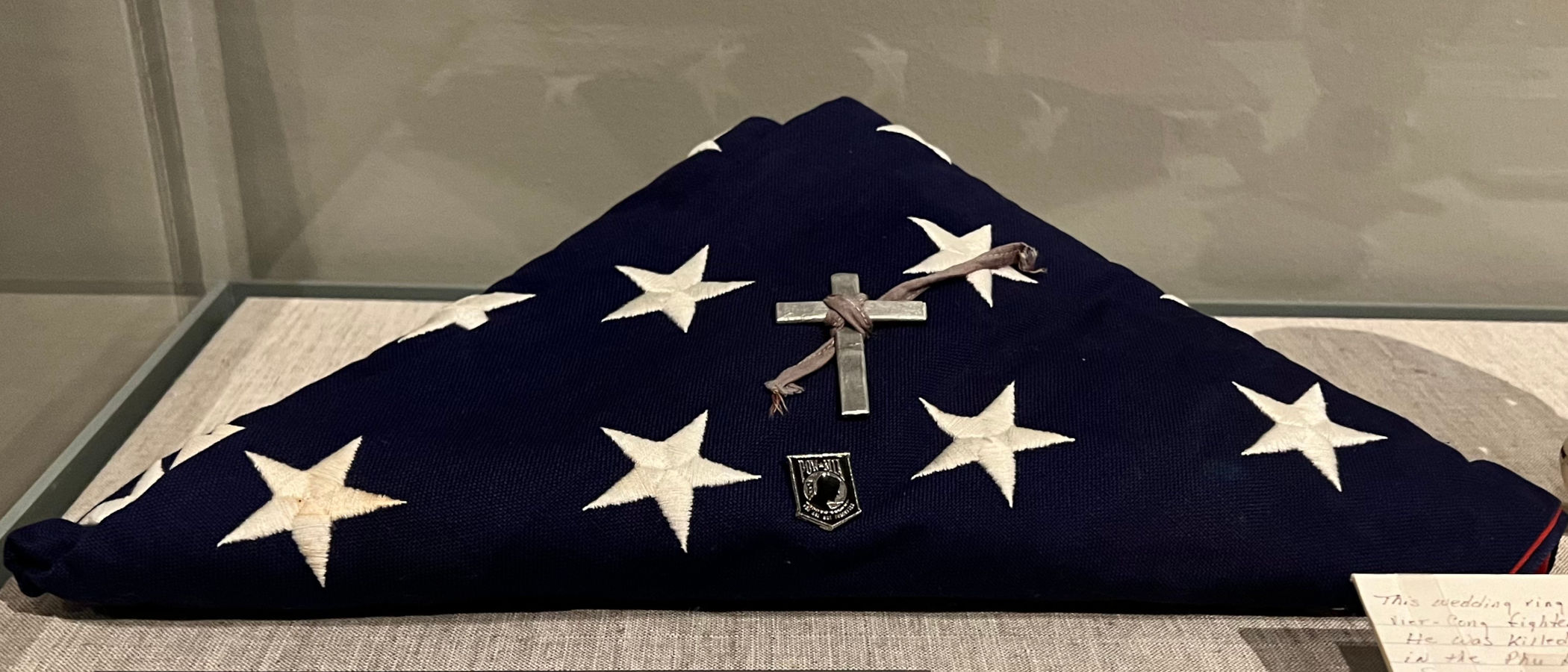
John George Sparks
POW for 5 Years
This American flag was presented to Specialist John George Sparks after his release from nearly five years of captivity as a POW. Specialist Sparks was serving as an observer in a Grumman OV-1 Mohawk when his aircraft was shot down, and he was captured on April 24 1968. He was released from captivity on March 16 1973, during Operation Homecoming.
In the letter, he describes that the attached cross was made from a toothpaste tube during his captivity, and the tie around it came from his prisoner uniform. A POW-MIA lapel pin is also attached.
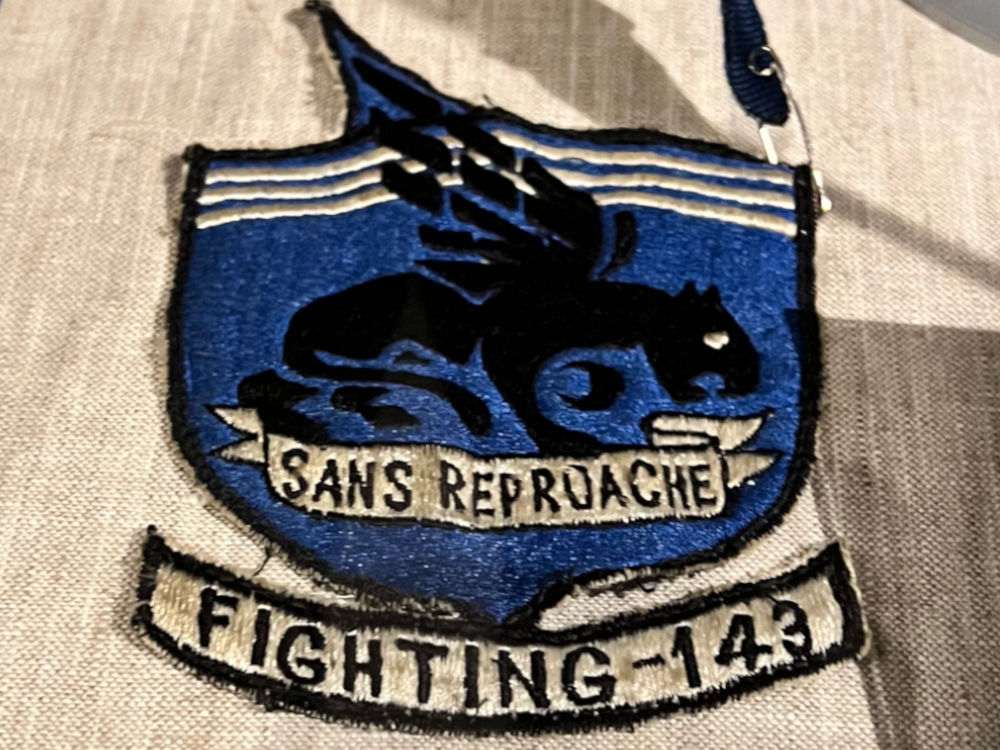
Kay Heilig
Pukin' Dogs Flight Helmet
This military-issued flight helmet for the U.S. Navy Strike Fighter Squadron 143 was left at the Vietnam Veterans Memorial by Lieutenant Kay Heilig between April and June of 1993, along with a U.S. Navy officer's ceremonial sword and U.S. Navy flight suit.
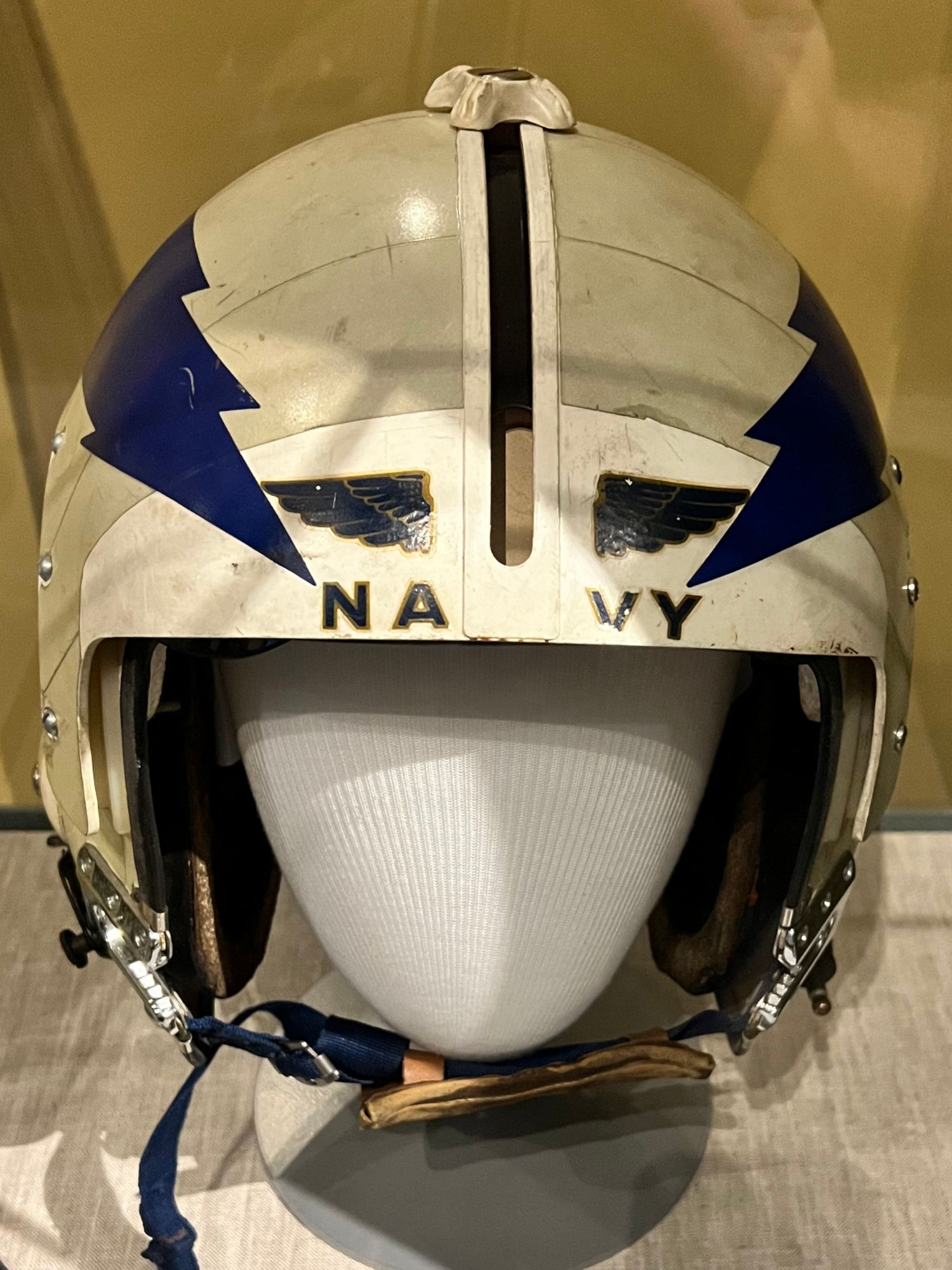
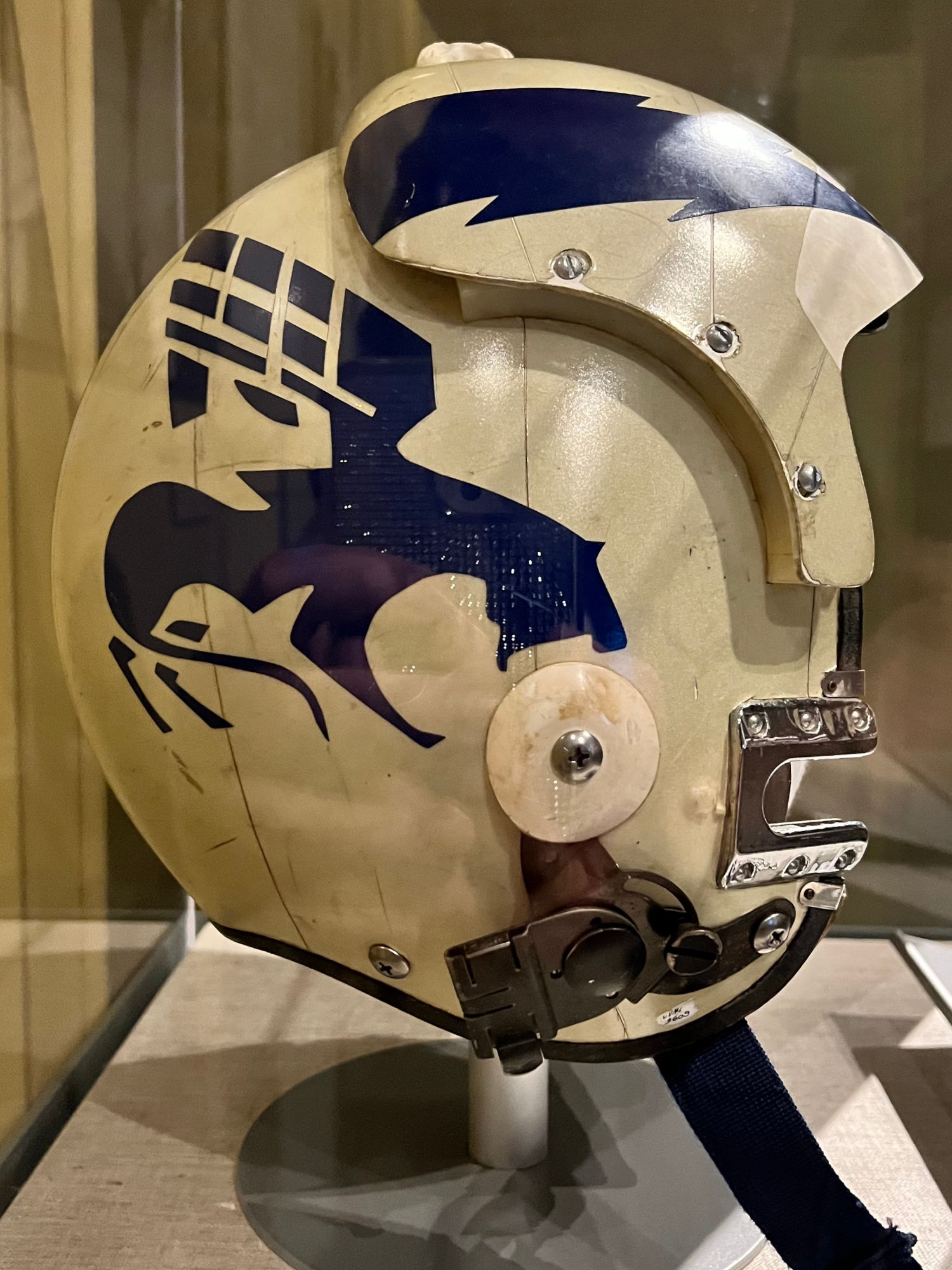
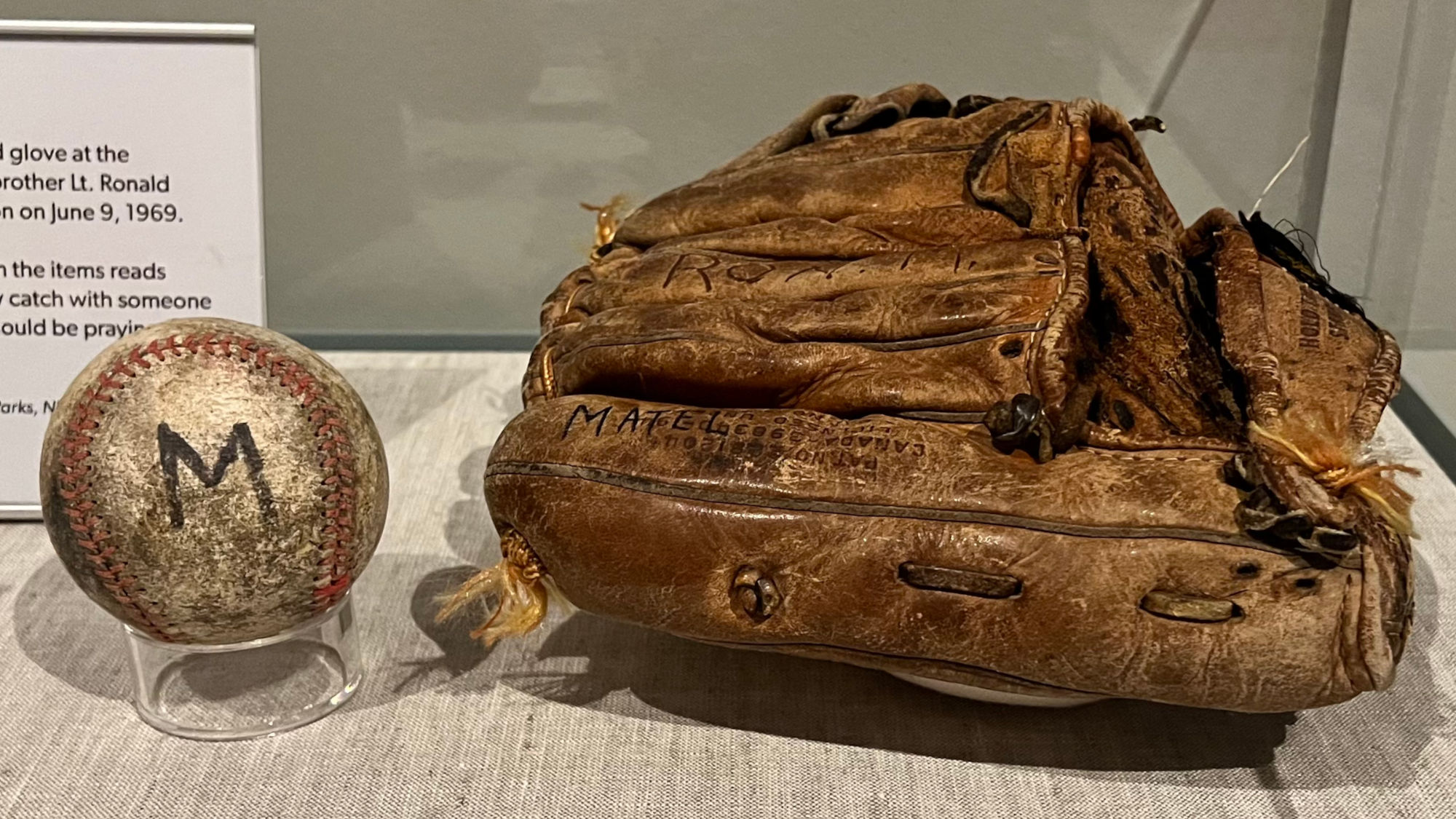
Ronald James Matel
KIA
David Matel left a worn baseball and glove at the Vietnam Veterans Memorial for his brother Lieutenant Ronald James Matel, who was killed in action on June 9, 1969.
A portion of a business card left with the items reads
Happy Birthday! 7-6-93. You are missed and I love you. Play catch with someone in heaven. I pray for you, but you should be praying for me.
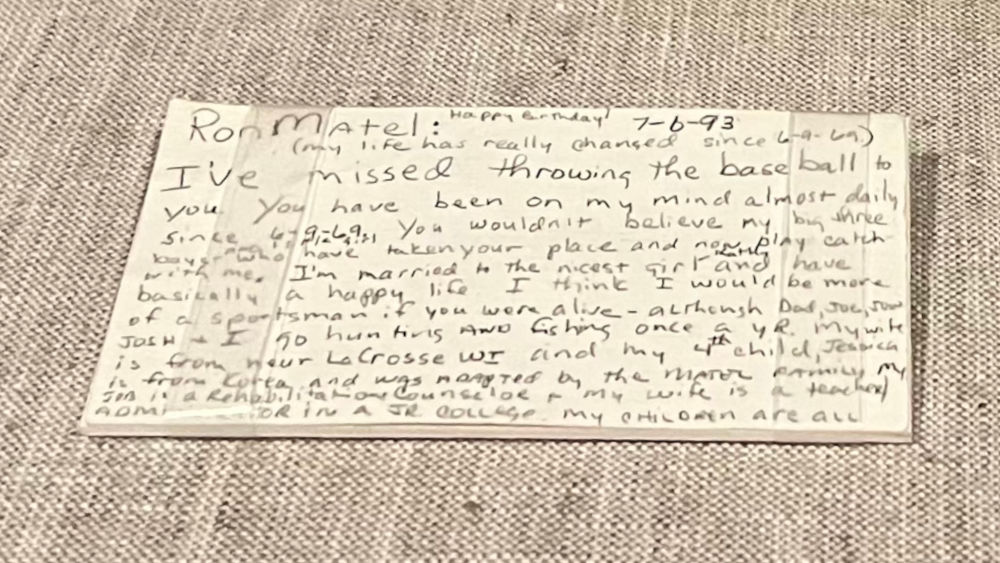
Vietnam Veterans Memorial
Women Who Served
In 1993, a statue by Glenna Goodacre honoring the 265,000 women who served during the Vietnam War was installed in a grove of trees adjacent to the Memorial.
Women served in such crucial roles as nurses, doctors, air traffic controllers, communications specialists, and intelligence officers. Eight women gave their lives in the war.
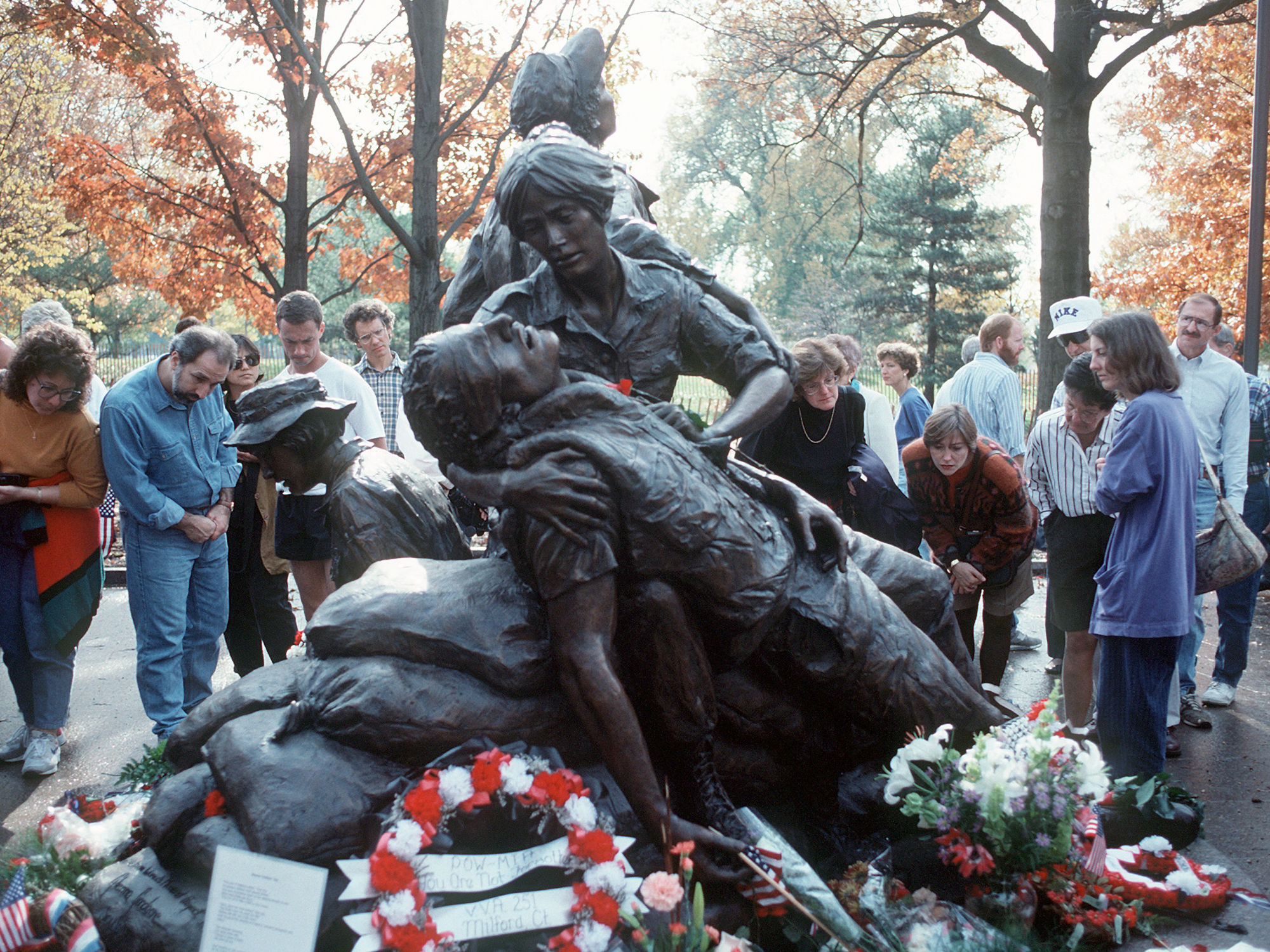
Vietnam Women's Memorial
National Mall in Washington, DC
Veteran's Day Unveiling Ceremony
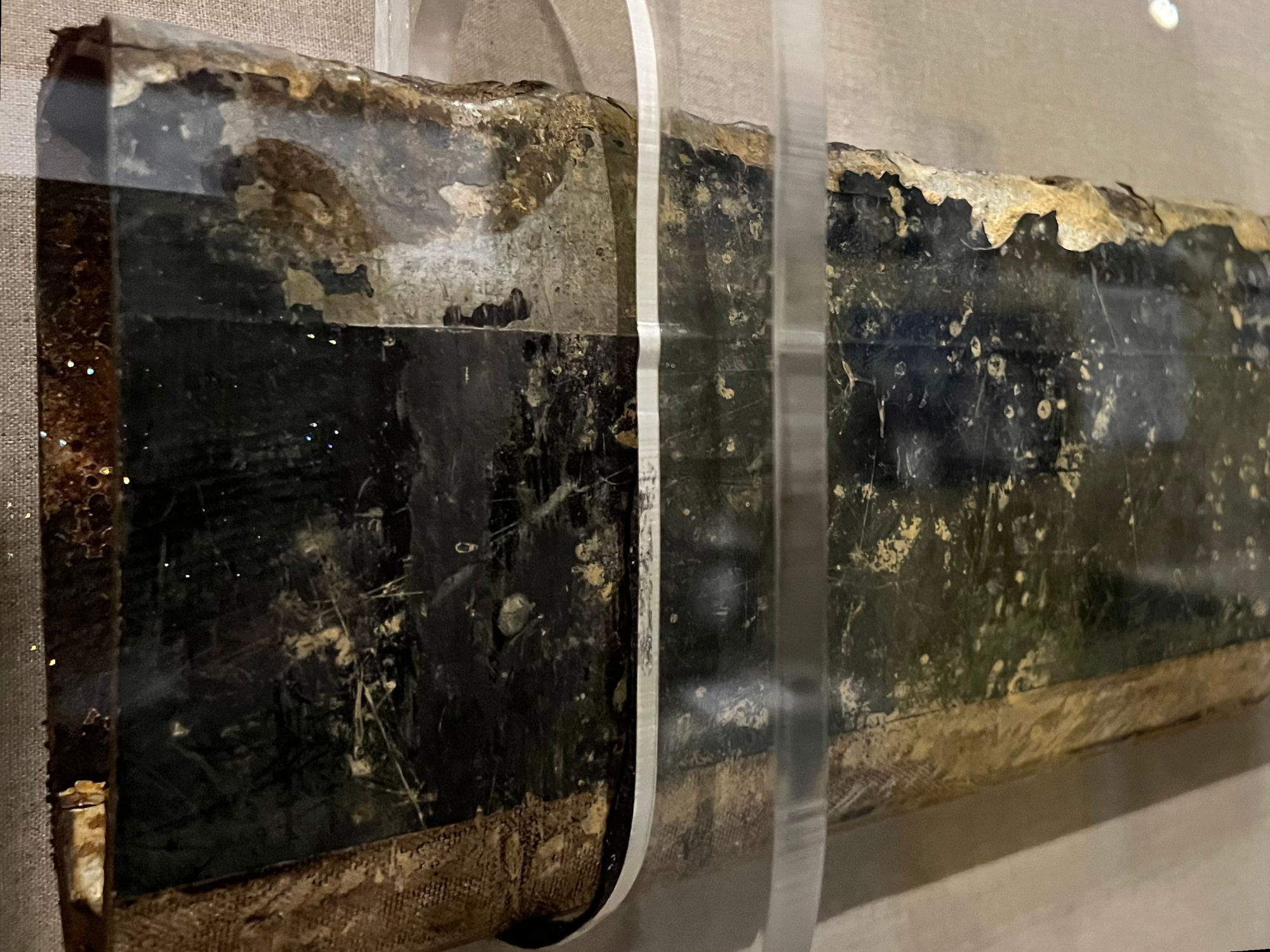
Jerry W. Elliott
MIA Quang Tri Province
This UH1H helicopter blade was left at the Vietnam Veterans Memorial Wall by Donna Elliott on May 29, 2000, for Memorial Day. Her brother, Staff Sargent Jerry W. Elliott, was declared missing in action in the Quang Tri province of Vietnam on January 1, 1968. In 1999, the 55th Joint Task Force recovered the blade from the site where Staff Sargent Elliott was last seen.
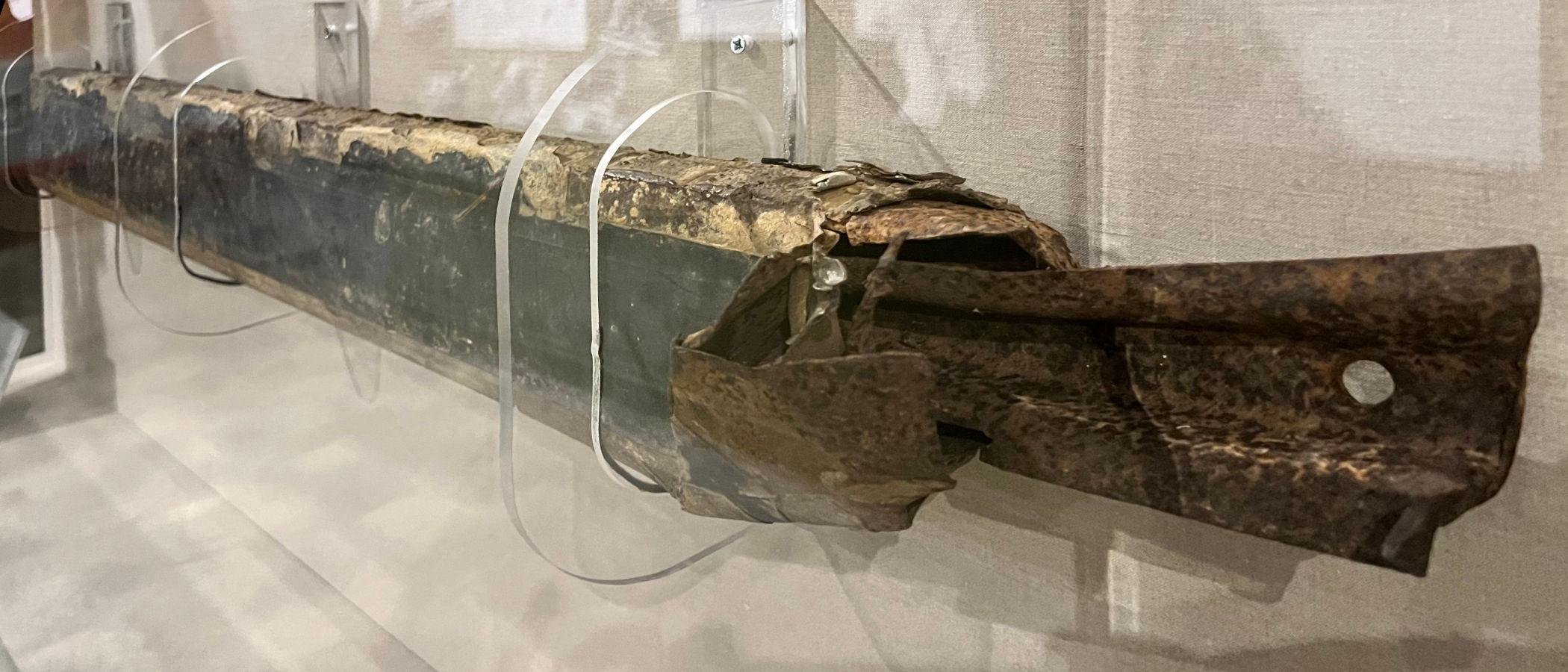
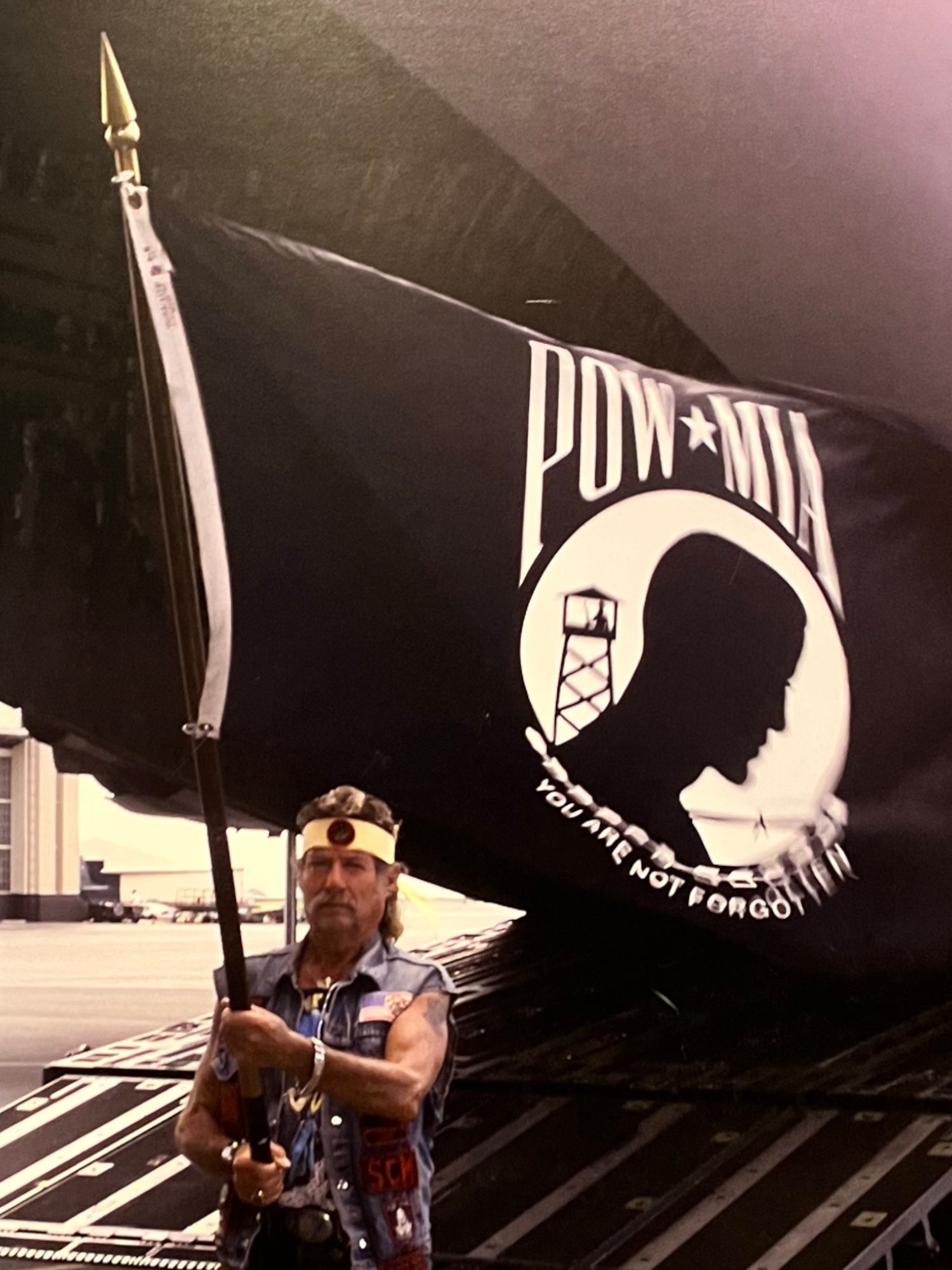
Reparation Ceremony
Hickam Air Force Base, Hawaii
A Vietnam Veteran raises the POW / MIA flag beside the rear entrance ramp to an Air Force plane that brought the remains of his American comrades home. The reparation ceremony was held on August 29th, 2000 at Hickam Air Force Base, Hawaii.
A Forever Brotherhood
40th Reunion
In 2013, he Richard Nixon Foundation hosted the 40th Reunion at the Richard Nixon Presidential Library. More than 200 former POWs and their guests attended the three-day tribute, which included a re-creation of the White House dinner in the Library's East Room - right down to the All-American meal.
Forty years after returning home, Navy Commander McGrath summed up the feelings of the former POWs during a panel discussion.
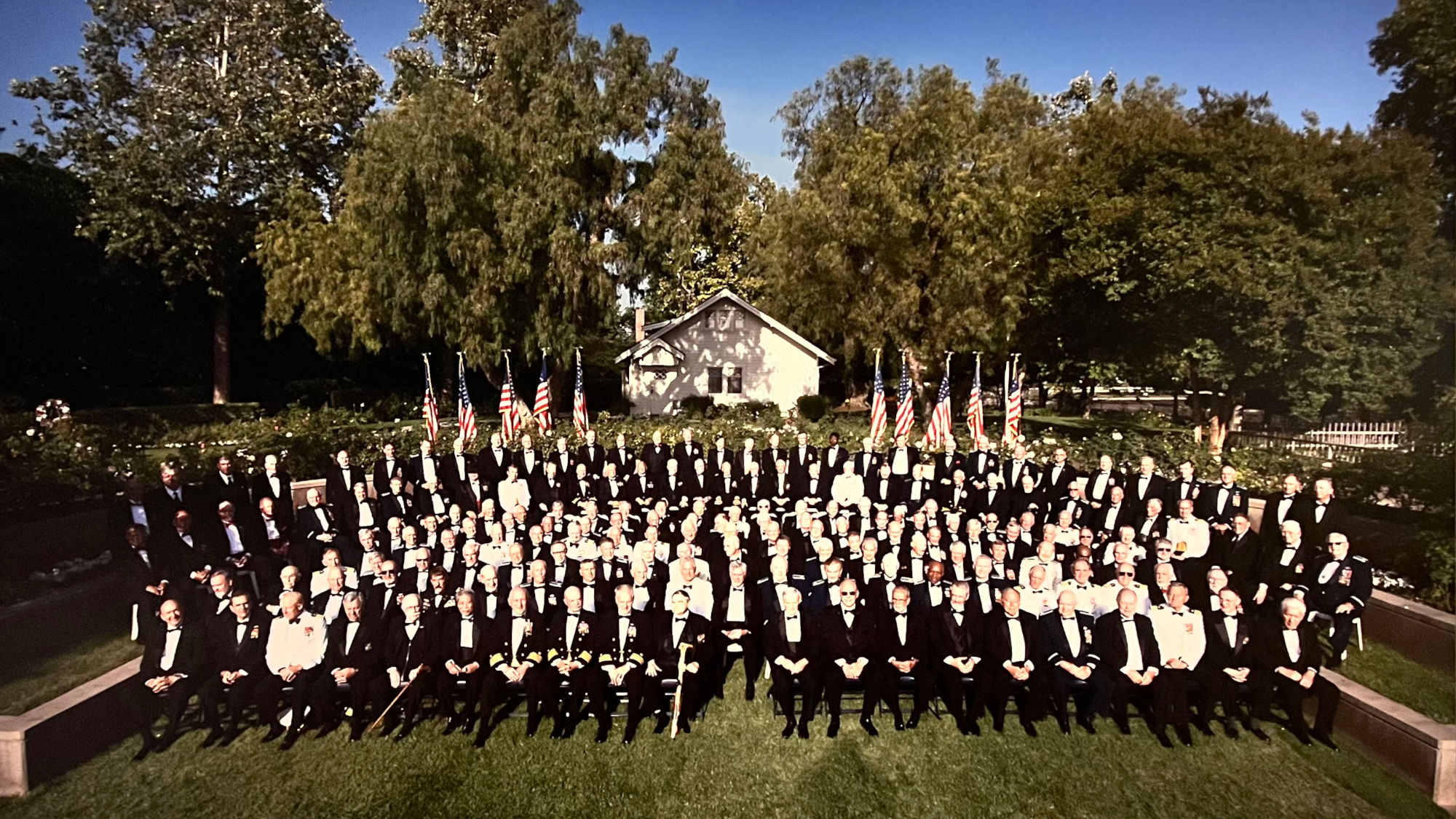
40 Year Reunion
Richard Nixon Presidential Library and Museum
All the former POWs attending the 40th anniversary reunion gathered for a photo in front of Richard Nixon's birthplace, 2013.
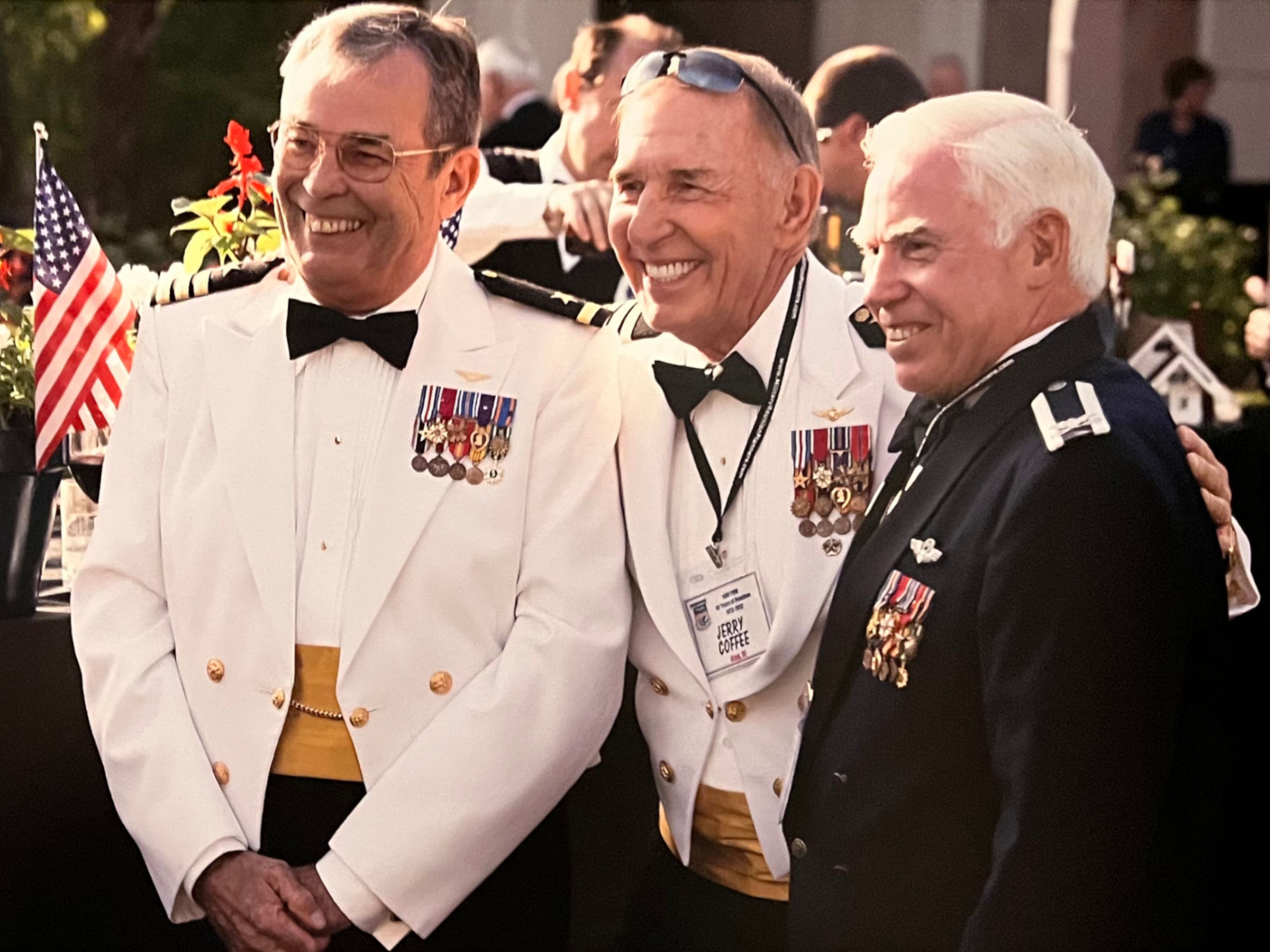
40 Year POW Reunion
Richard Nixon Presidential Library and Museum
On the 40th anniversary of their return from captivity, former POWs embrace during a photo at the reunion at the Richard Nixon Presidential Library and Museum, 2013.
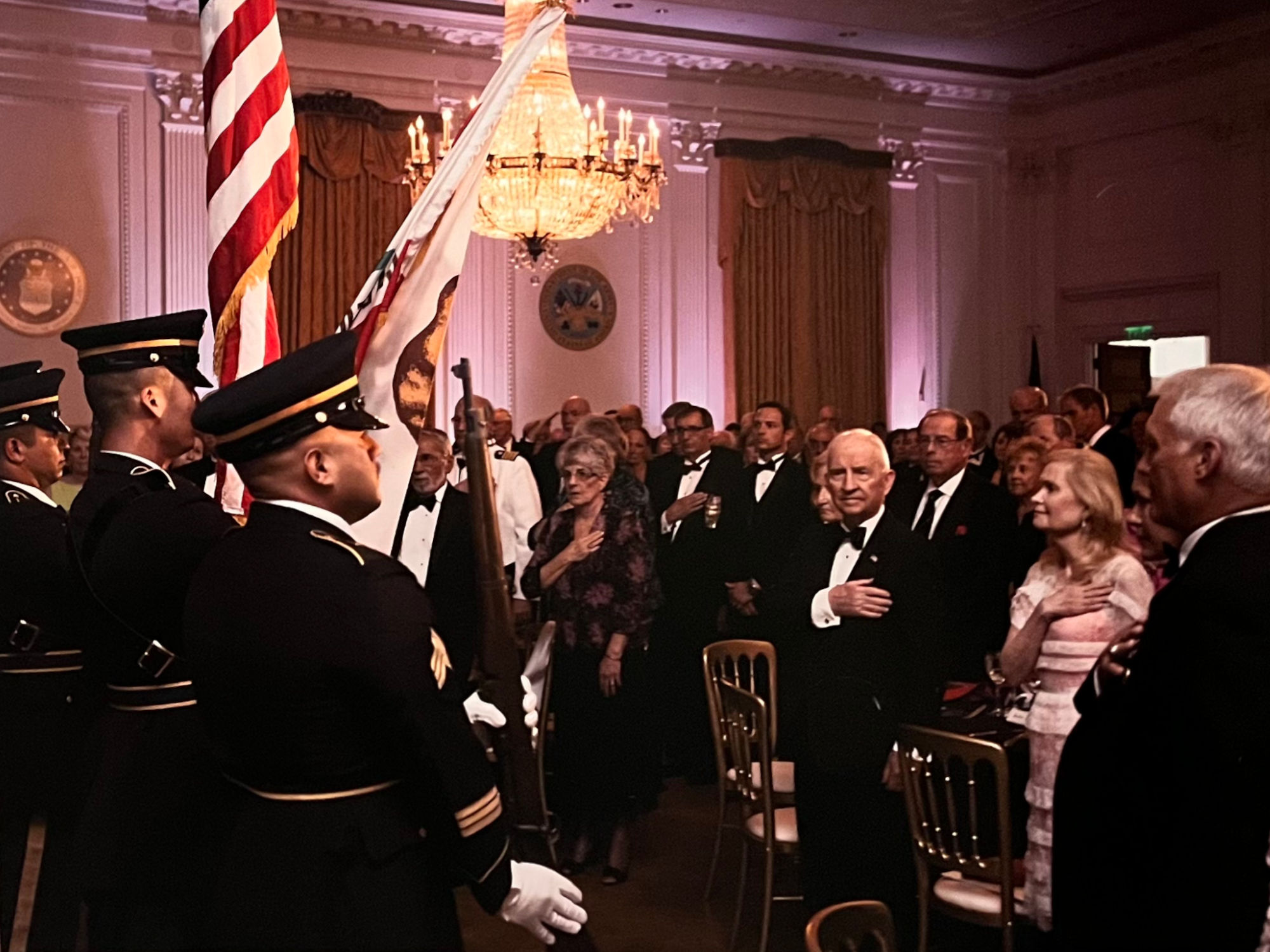
40 Year Reunion
Richard Nixon Presidential Library and Museum
Vietnam POW advocate and Texas businessman Ross Perot stands with Tricia Nixon Cox during the opening ceremony at the dinner marking the 40th anniversary.
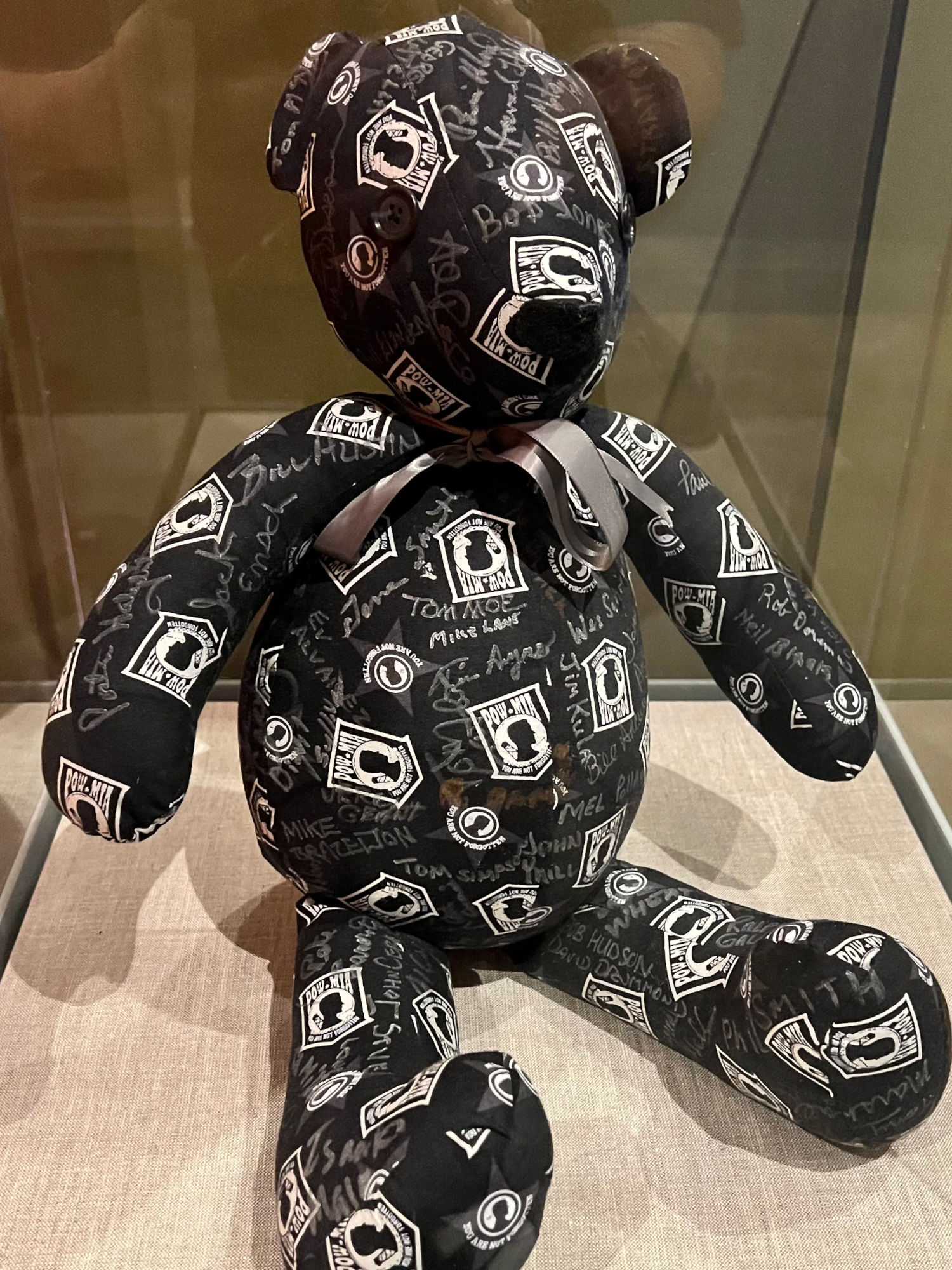
Commemorative Teddy Bear
This teddy bear features signatures of surviving POWs, and was signed in 2013 during a commemorative Vietnam POW 40th Anniversary Homecoming event held at the Richard Nixon Presidential Library and Museum.
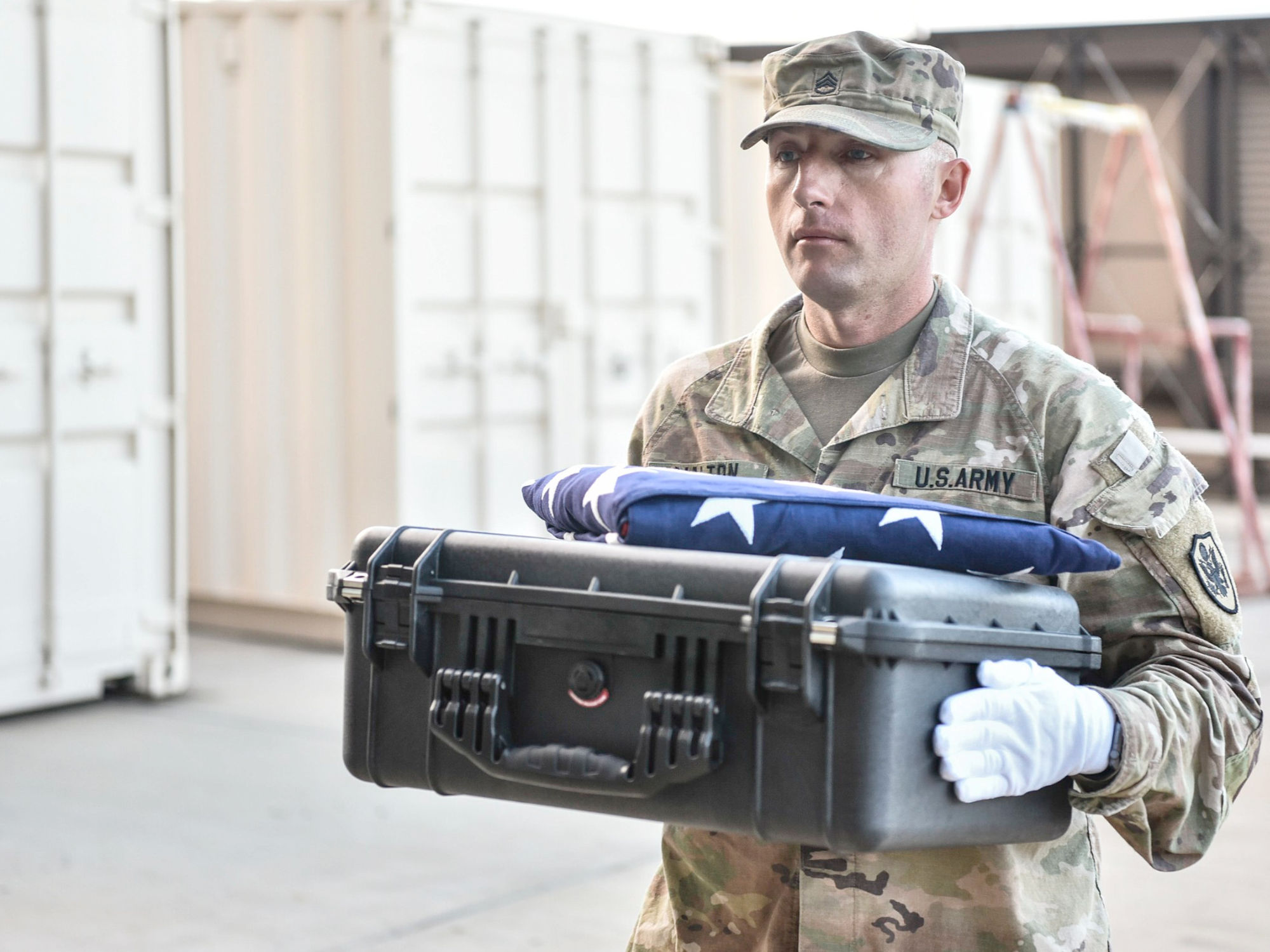
Unidentified Remains
Joint Base Pearl Harbor-Hickam, Hawaii
U.S. Army Staff Sergeant Richard Walton carries the remains of an unidentified American from the Vietnam War at Joint Base Pearl Harbor-Hickam, Hawaii, March 31, 2019. The remains were part of a retrieval organized by the Defense POW/MIA Accounting Agency (DPAA).
A Forever Brotherhood
50th Reunion
To commemorate the 50th anniversary of the POW White House dinner, the Richard Nixon Presidential Library and Museum hosted a three-day event May 23-25, 2023, for the POWs and their families.
Festivities included a community parade, recognition and honors from the U.S. Military, and special panel discussions. The POWs toured the museum's new special exhibit, Captured: Shot Down in Vietnam, giving event guests a rare opportunity to hear reflections and stories from the men themselves.
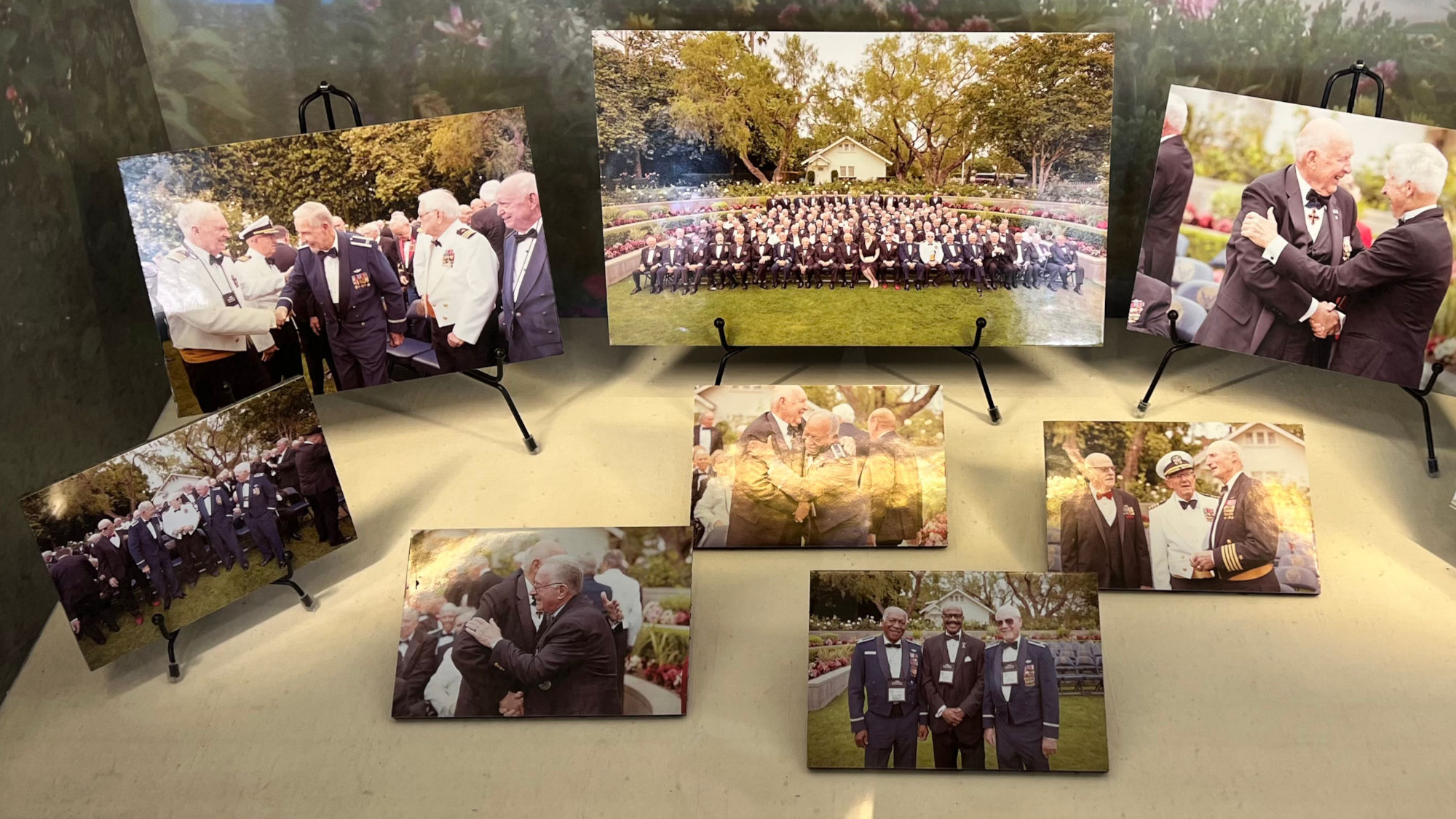
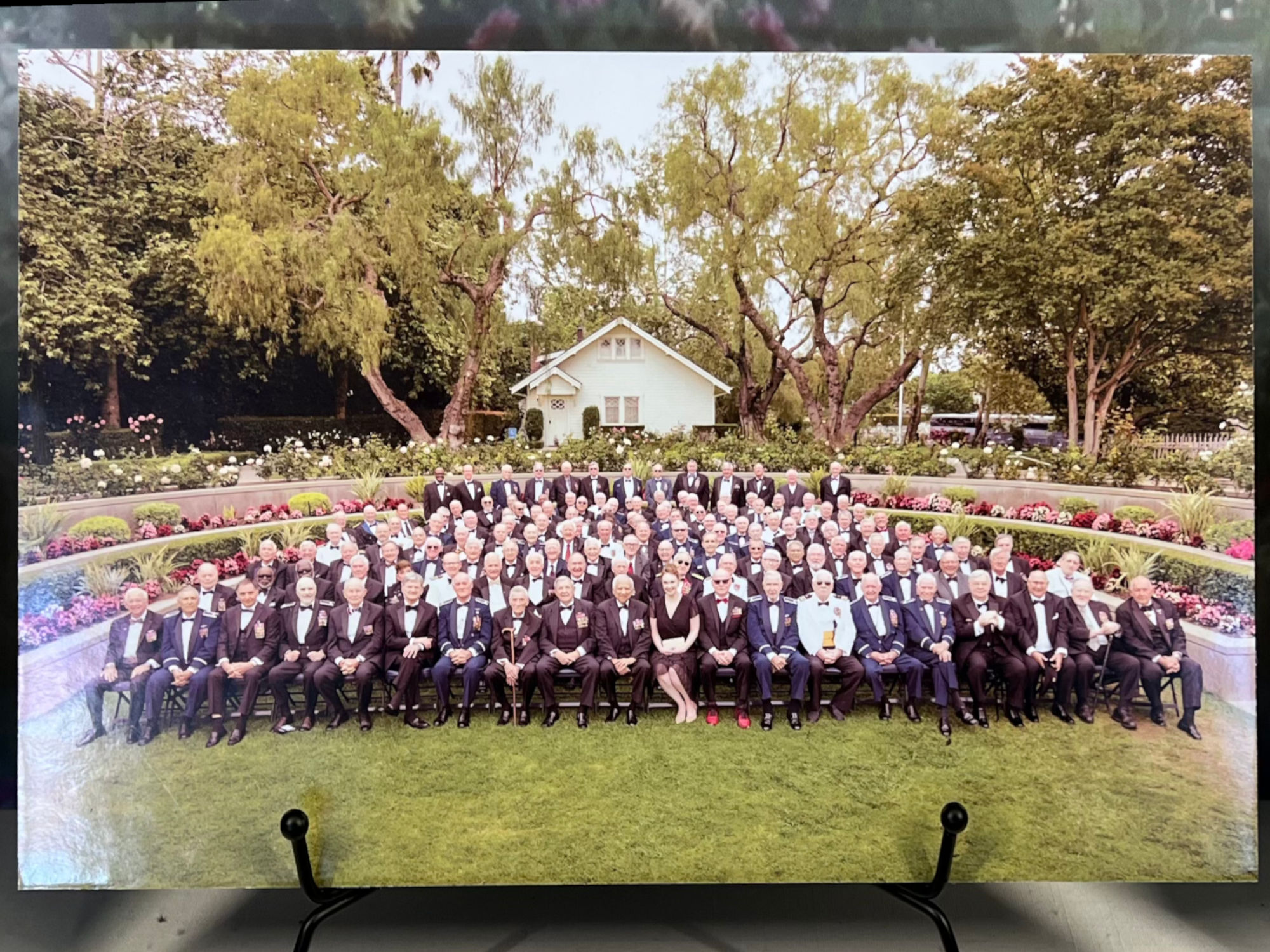
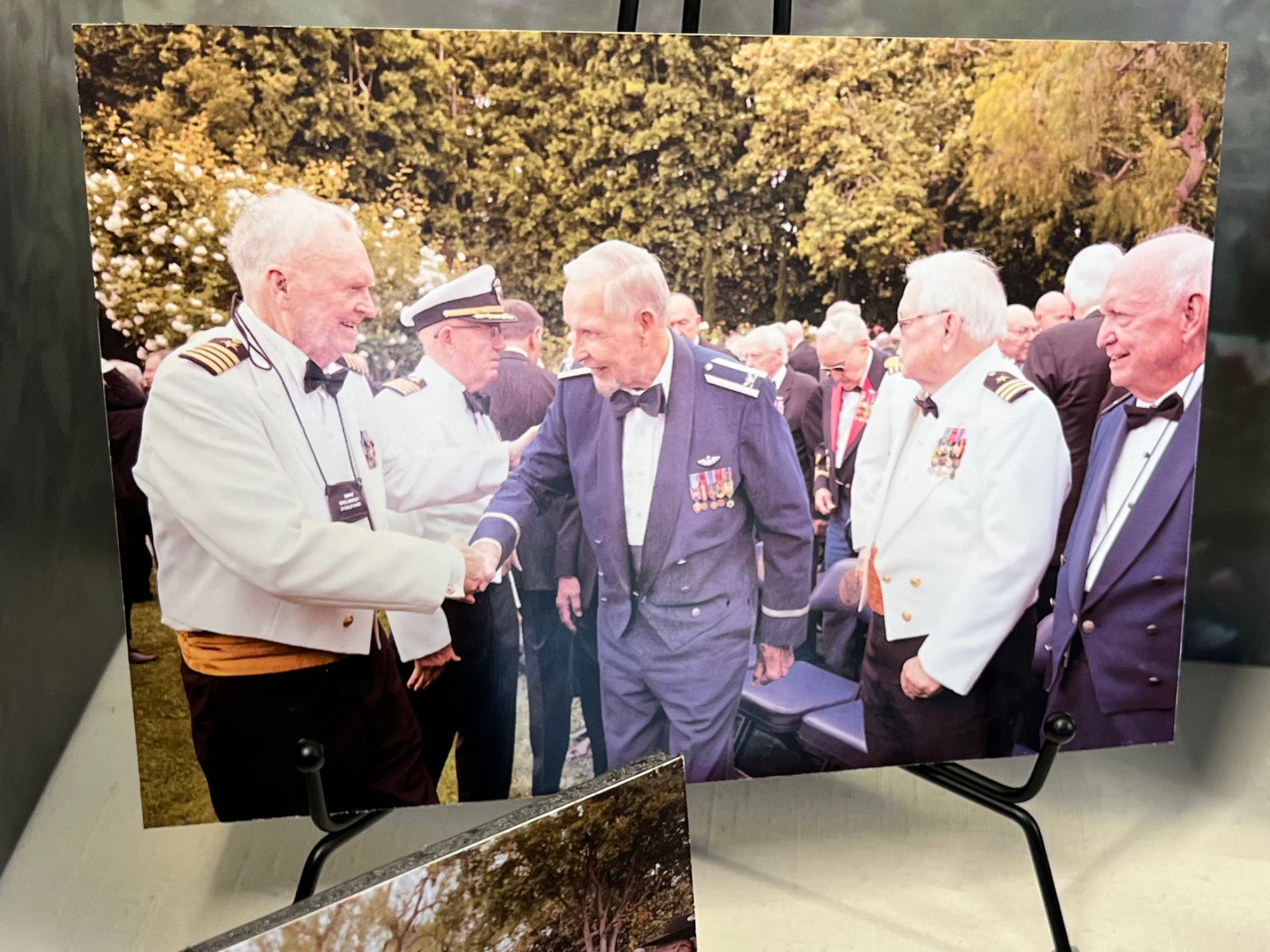
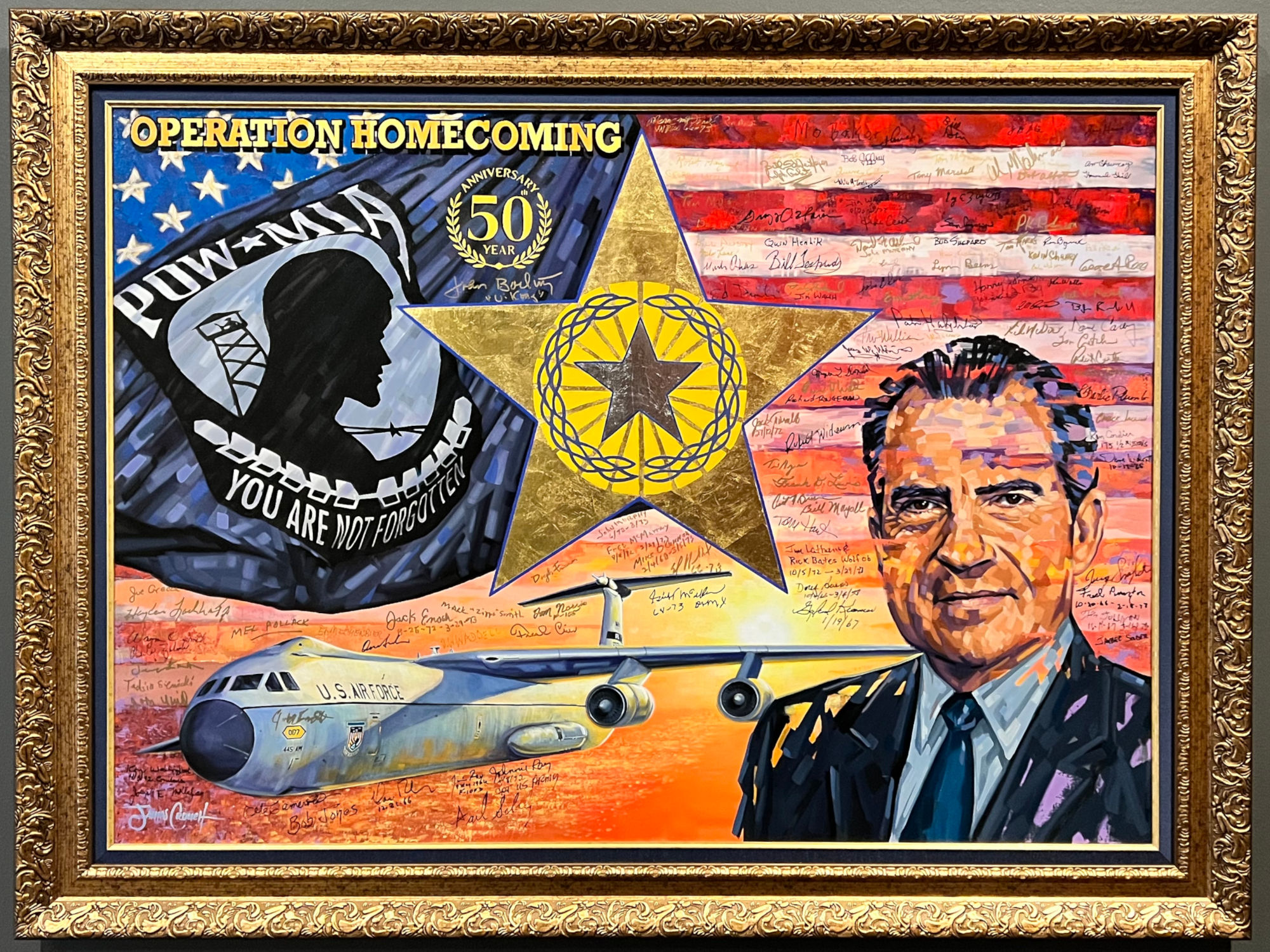
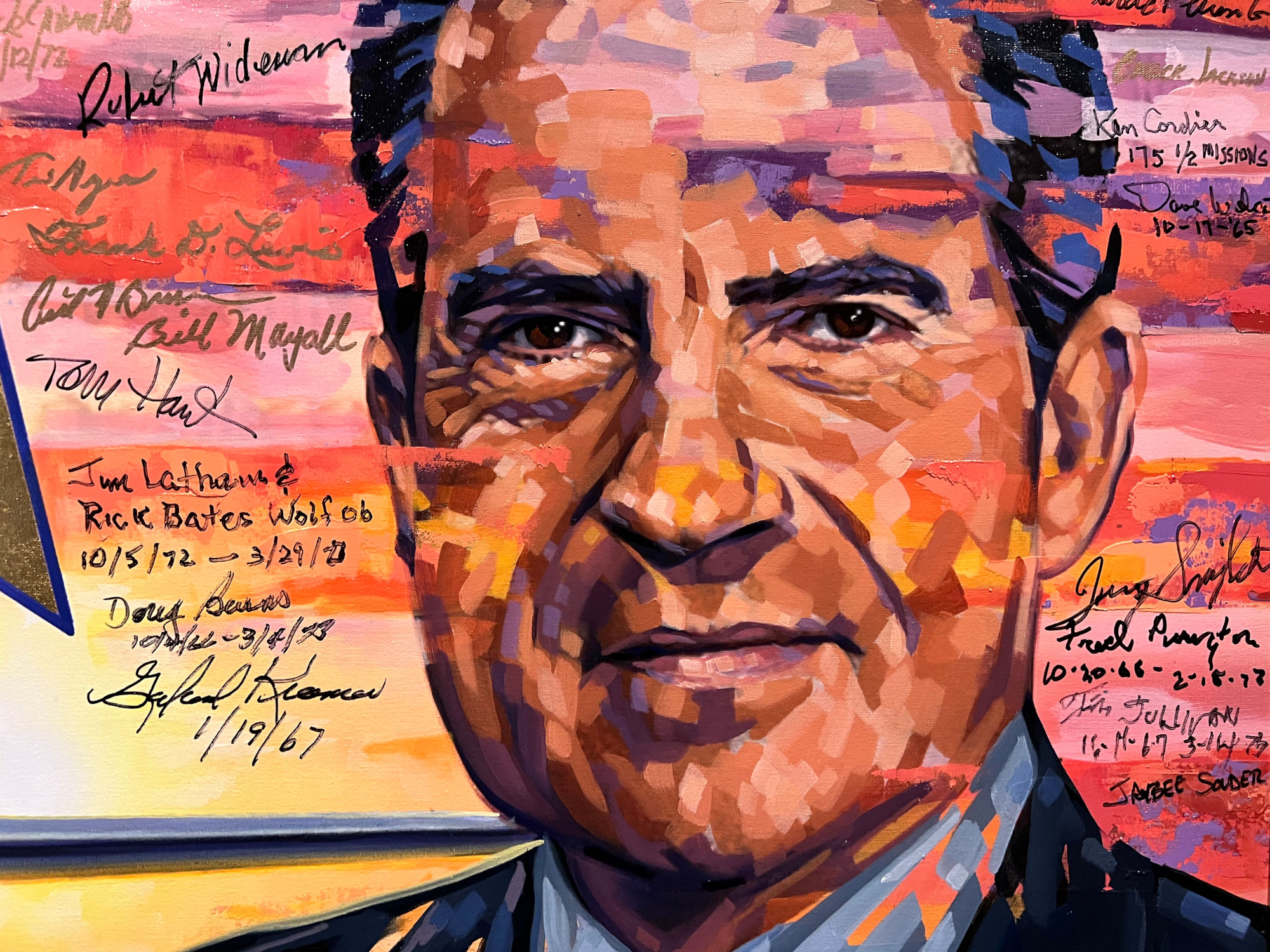
| PRE-VIETNAM WAR: | |
|---|---|
| PAGE 1 | |
| What is a POW? | |
| 1775 | American Revolution POWs |
| 1812 | War of 1812 POWs |
| 1865 | Civil War POWs |
| 1917 | World War I POWs |
| 1920 | Ho Chi Minh |
| 1941 | World War Ii POWs |
| 1942 | World War II Japanese Internment |
| 1945 | Brief History of Vietnam |
| 1947 | Truman Doctrine |
| 1949 | Geneva Conventions |
| 1950 | Korean War POWs |
| 1954 | Indochina Communist Expansion |
| 1954 | 17th Parallel |
| 1955 | POW Code of Conduct |
| 1963 | Tiger Cages |
| THE NIXON YEARS: | |
|---|---|
| PAGE 3 | |
| 1968 | 1968 Campaign |
| Requirements For Peace | |
| 1969 | Alive or Dead? |
| Ross Perot's Christmas Delivery | |
| 1970 | Missing in Action |
| The Camps | |
| POW / MIA Bracelets | |
| 1971 | Write Hanoi |
| Live From Space | |
| 1972 | Air War in Vietnam |
| Operation Linebacker II | |



